Posts Tagged #behind the scenes @ the henry ford
Small Screen Heroes: Digital Collections and The Henry Ford’s Innovation Nation
When production of The Henry Ford’s Innovation Nation began in 2013, we knew the show would provide a tremendous opportunity to share our stories with new audiences. We also knew it would require tremendous resources. But we couldn’t have predicted the show’s longevity or success, with six seasons and three Emmy awards to date – or the important role our digital collections would play in the project. From planning to post-production and beyond, the images and information we’ve made available through digitization have become TV stars in their own right.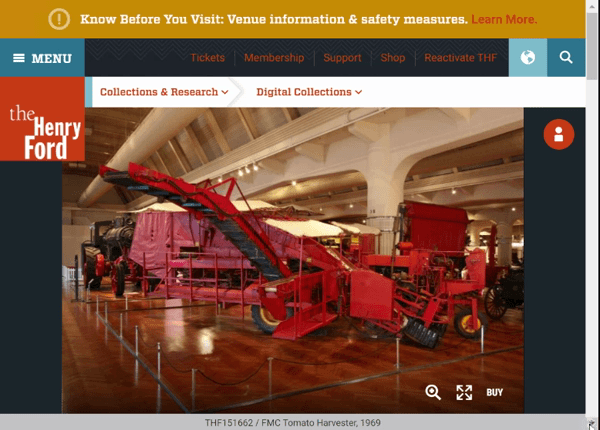
Digital Collections pages are a handy resource for the Innovation Nation producers. They provide information about artifacts – like this tomato harvester, which will be featured in season 8 – and help the stories take shape.
Our Digital Collections factor into the earliest stages of story development for Innovation Nation. Even before the show’s producers begin to discuss potential angles for a particular topic with the experts at The Henry Ford, they’ve often explored related Digital Collections pages. This provides background information, helping to guide the story and ground it in solid historical research. It also shapes the producers’ vision for the story, helping to determine where it will be filmed and what we might need to bring out for the cameras.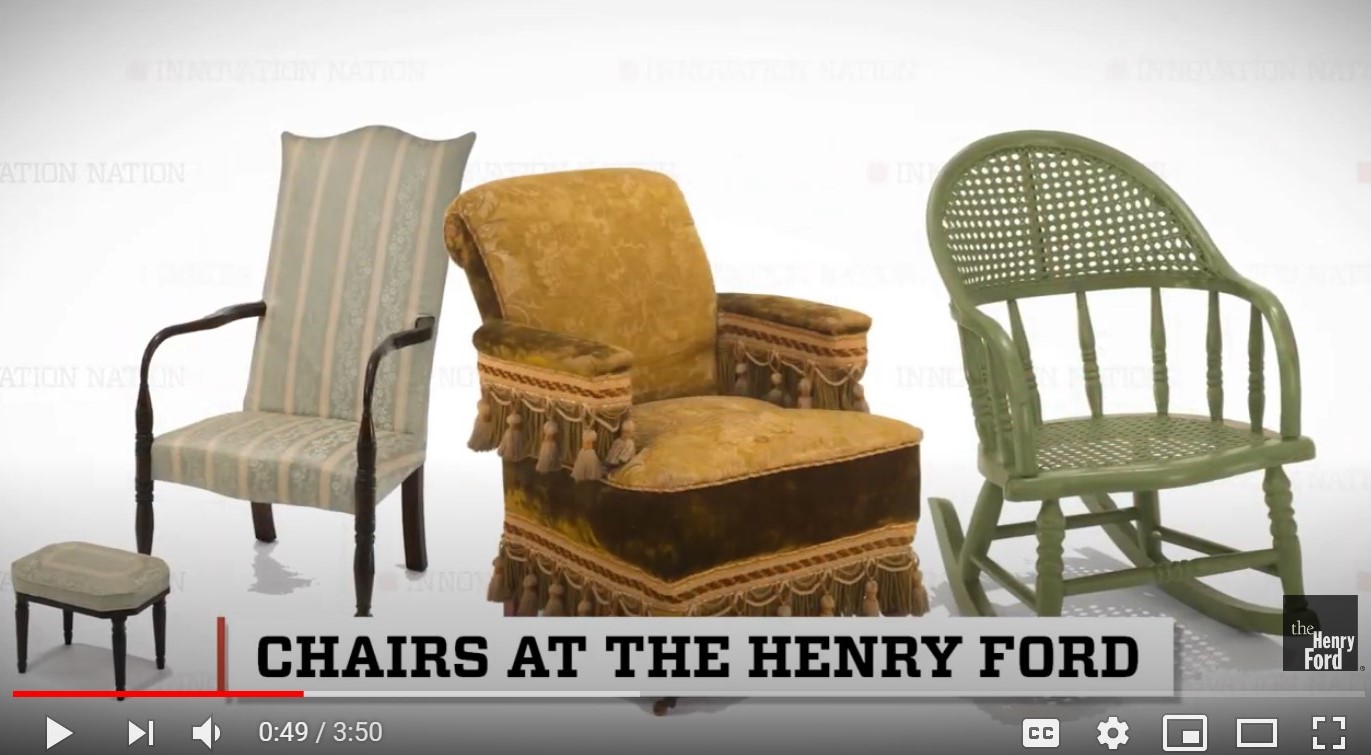
Photographs showing a range of chairs from The Henry Ford’s furniture collection made an Innovation Nation appearance in season 2.
After a story is filmed, our work is just beginning. We add any featured artifacts that aren’t already online to our queue for digitization. Including them as part of our Digital Collections makes them accessible to wider audiences and gives us the option to include them in future digital content. In addition to the “on camera” collections, supporting graphic and video assets from our holdings often appear in the final cut. We research our collections, digitizing new material as needed, and provide high-resolution image and video files to the story’s producer and editor. Sometimes, the producer will even write a script that highlights these supporting assets. An artifact doesn’t have to be two-dimensional or in video format to be considered – photographs of our three-dimensional collections may be featured, as well.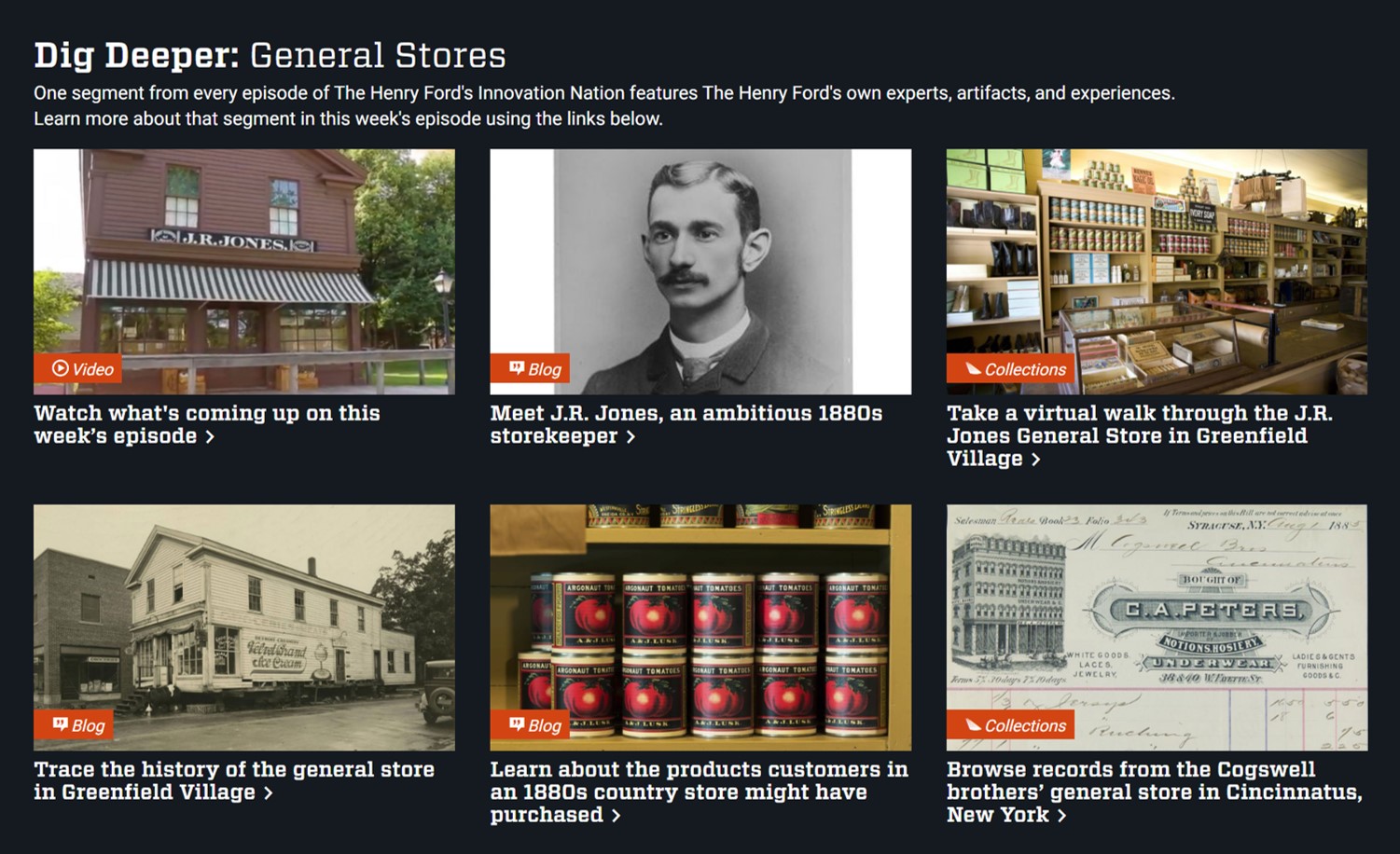
The “Dig Deeper” section of the J.R. Jones General Store episode webpage features brand-new digital content and newly-digitized material.
Though informative, the short-form stories that air on Innovation Nation can only say so much. Our Digital Collections and content offer viewers a chance to dig even deeper. Each episode has a dedicated webpage on thf.org that provides links to resources – such as blog posts, expert sets, or groups of related digital collections – that provide context for a particular topic and further highlight our holdings and expertise. Often, the “Dig Deeper” section of an episode webpage contains brand-new content, created specially to support that Innovation Nation story. So, whether you’re a long-time viewer or just learning about the show, it’s worth visiting thf.org to explore more. To get started, consider checking out content related to some of our most recent episodes here, or browse featured artifacts from all the seasons of Innovation Nation in our Digital Collections.
Continue Reading
#Behind The Scenes @ The Henry Ford, #digitization100K, by Saige Jedele, digital collections, digitization, TV, The Henry Ford's Innovation Nation
100,000 Digitized Objects… So What?: Adding Context Online
The Henry Ford reached a digitization milestone recently, adding the 100,000th artifact to its Digital Collections website. The digitization team at The Henry Ford began a little over ten years ago to update and add to this site. Early on, we developed data standards that guided our progress. Certain required information -- a title, an object name, dimensions, creator, and searchable keywords, to name a few -- accompanies each object record. And every object that goes online must have an image that meets our standards.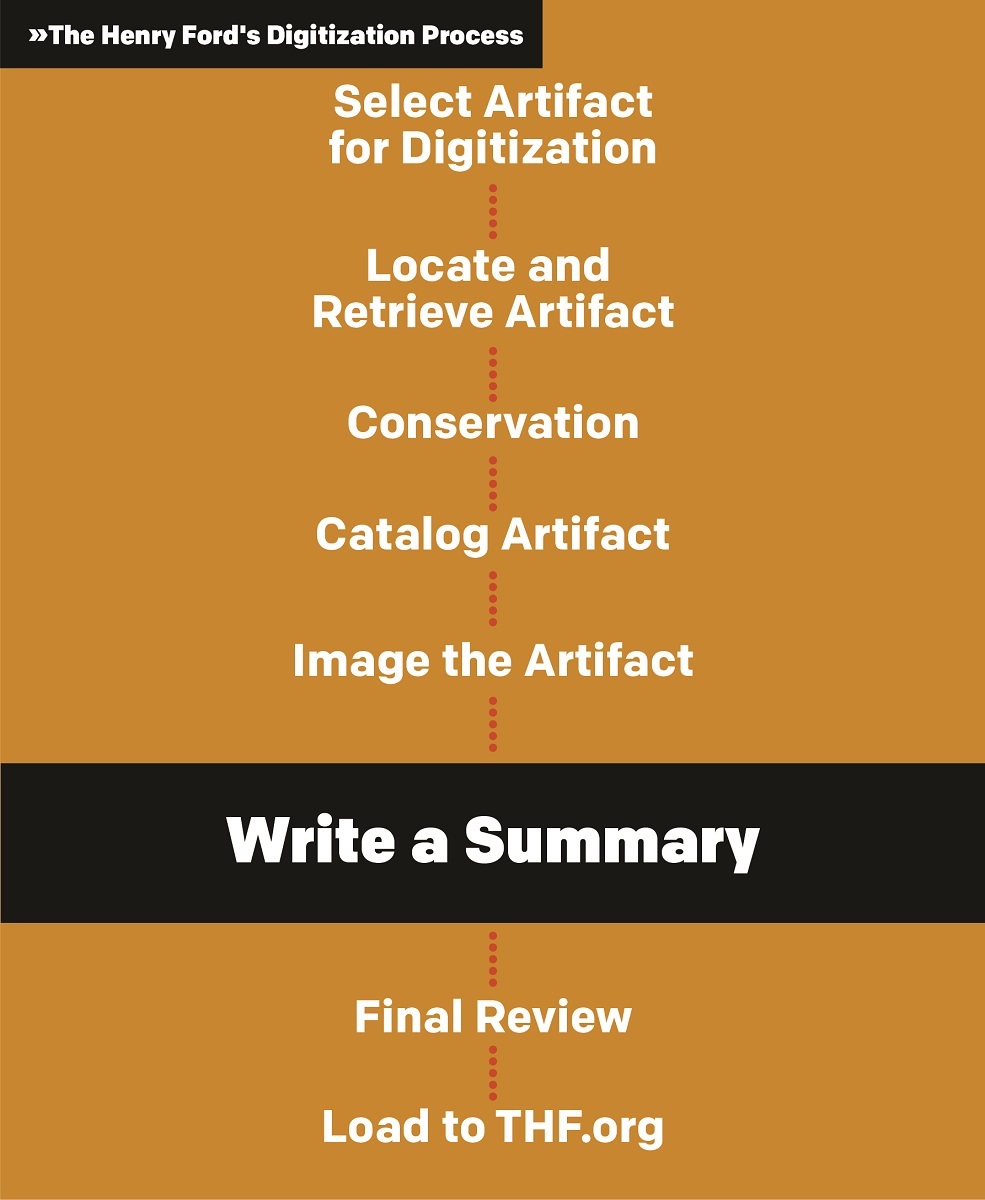
This graphic shows the various tasks in The Henry Ford's digitization workflow, and where writing a summary fits in.
But have you noticed that many of The Henry Ford’s online collections records have a small label-like paragraph -- something called "Summary"? As staff at The Henry Ford looked at other institutions' collections webpages, we noticed many contained standard descriptive information, but few explained the importance of the object. Some collections webpages added a detailed (sometimes dry) physical description, or maybe text from an old exhibit label, or sometimes long academic articles. The digital collections staff at The Henry Ford wanted something more reader-friendly, something informative, and perhaps even enjoyable. After a series of discussions, we decided that a short 60-word paragraph -- a Summary -- was the solution. A Summary would answer the question, “So what?” -- why is this object important for The Henry Ford to collect and preserve? -- and hopefully spur viewers to explore our digital collections more deeply.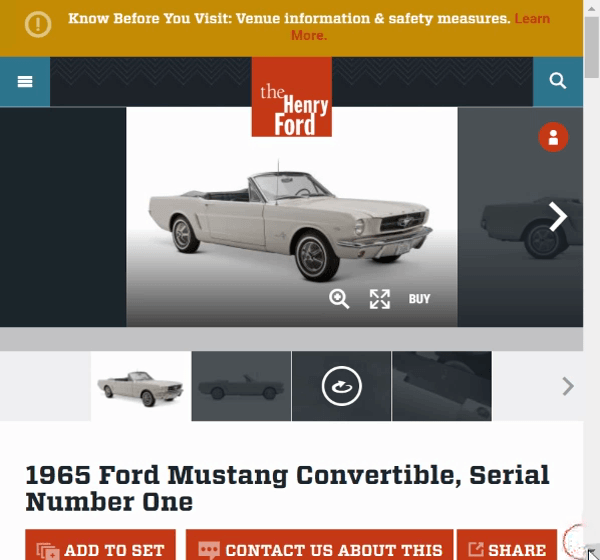
A Summary is one of the first things you see when you go to a Digital Collections record page. This GIF shows the Summary for Mustang serial number one, along with much other information about the car.
When staff originally conceived of the idea, a Summary was viewed as a vital part of the online data, but not a requirement. Finding the right words for some object Summaries takes time, and the 60-word limit is constricting -- though we do allow a few more words when needed. An object usually can tell multiple “So what?” stories, and curators -- the primary authors of a Summary -- would like to share them all. What one “So what?” story would you choose to tell if you were writing a Summary about the rocking chair used by President Lincoln on the night of his assassination, a Ford Model T, or the home (or cycle shop) of Orville and Wilbur Wright?
Even seemingly mundane objects offer interesting insights. Curators thoroughly research these objects then carefully choose words that will convey a coherent idea--while at the same time working within the prescribed word limits. Our research into an object's history and use provides viewers with a deeper understanding of our online collections.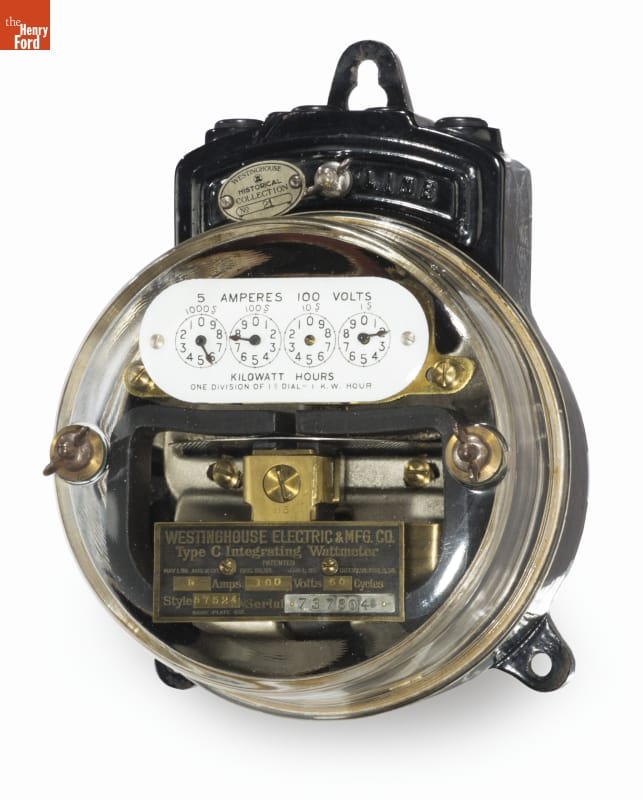
What could be more mundane than a wattmeter -- a device used to measure electricity usage? Learn more about how electric companies found ways to measure electricity usage and charge customers appropriately in the Summary for this c.1907 Type C Wattmeter. / THF168572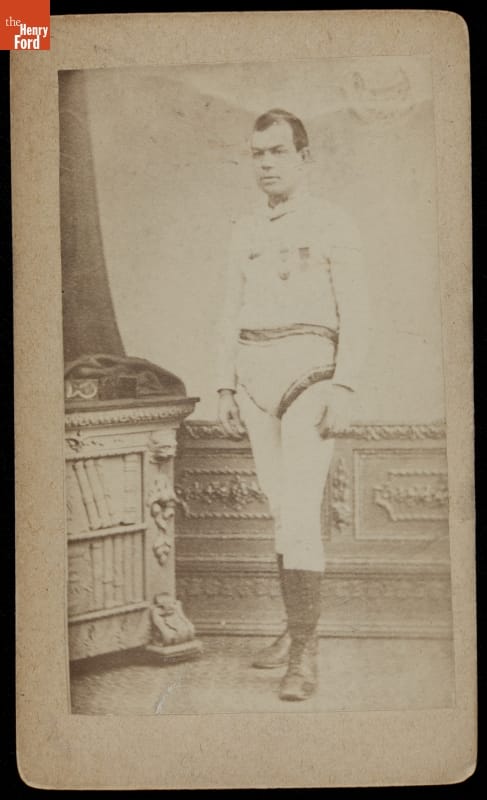
The man in this carte-de-visite was originally identified as an acrobat in our collection records. But while researching the image to write the Summary, the curator discovered that this "acrobat" was Henry Brown, a well-known long-distance walker. / THF210533
Though a Summary may not be perfect, we hope that it gives viewers an insight into our collections that will spark an "a-ha" moment. And staff at The Henry Ford have created well-researched blog posts, Expert Sets, What If stories, and Connect 3 and other videos for those viewers who want more in-depth stories about our collection.
So, how are we doing? Currently, more than 65,000 of the 100,000 Digital Collections objects have a Summary, and curators continue to add more. We have plenty of work in the future.
Do you want to give it a try?
Find an object in your home (or go to our Digital Collections website and find an object without a Summary) and write a 60-word Summary to answer the question, "So what?" -- why is this object important? Some objects may be easy to write about; others, not so much. Remember that readers should understand the concept you are trying to convey, and perhaps be inspired to want to know more.
| The Henry Ford is facing unprecedented financial challenges due to the impact of our 16-week closure and reduced operations. We need your help in securing our future. Love the Henry Ford? Please support all that we treasure—including our digitization program. Longtime supporters of The Henry Ford will match your donation dollar for dollar, so your contribution will have double the impact. |
#Behind The Scenes @ The Henry Ford, #digitization100K, digitization, research, digital collections, by Andy Stupperich
Celebrating a Milestone: 100,000 Digitized Artifacts
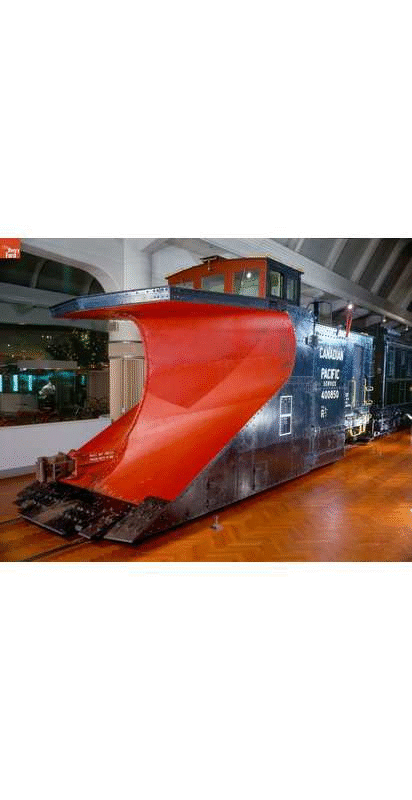
This GIF runs through fewer than 1/10th of 1% of the artifacts available for you to discover in our Digital Collections.
If you’ve ever liked or commented on a photo of one of our artifacts on social media…
If you’ve ever looked at an image from our collections reproduced on a wall or label in Henry Ford Museum of American Innovation…
If you’ve ever used one of our digital interactives in the museum…
If you’ve ever visited one of our exhibit pages for the museum or our district pages for Greenfield Village…
If you’ve ever looked at one of our blog posts or expert sets…
If you’ve ever visited our Digital Collections…
If you’ve done any of these things, then you’ve had an encounter with our digitization program.
As you might be able to tell from that list, digitization of our collection now underpins much of what we do, and helps us fulfill our mission to inspire people to learn from America’s traditions of ingenuity, resourcefulness and innovation to help shape a better future. For about a decade, The Henry Ford has been systematically adding artifacts to our website, and today we are proud to announce that we have just added our 100,000th artifact. We are using this opportunity to kick off a month-long celebration during the month of November, and will be giving you behind the scenes looks at the digitization process, sharing fun facts about digitization and our Digital Collections, and counting down the most popular digitized artifacts of all time.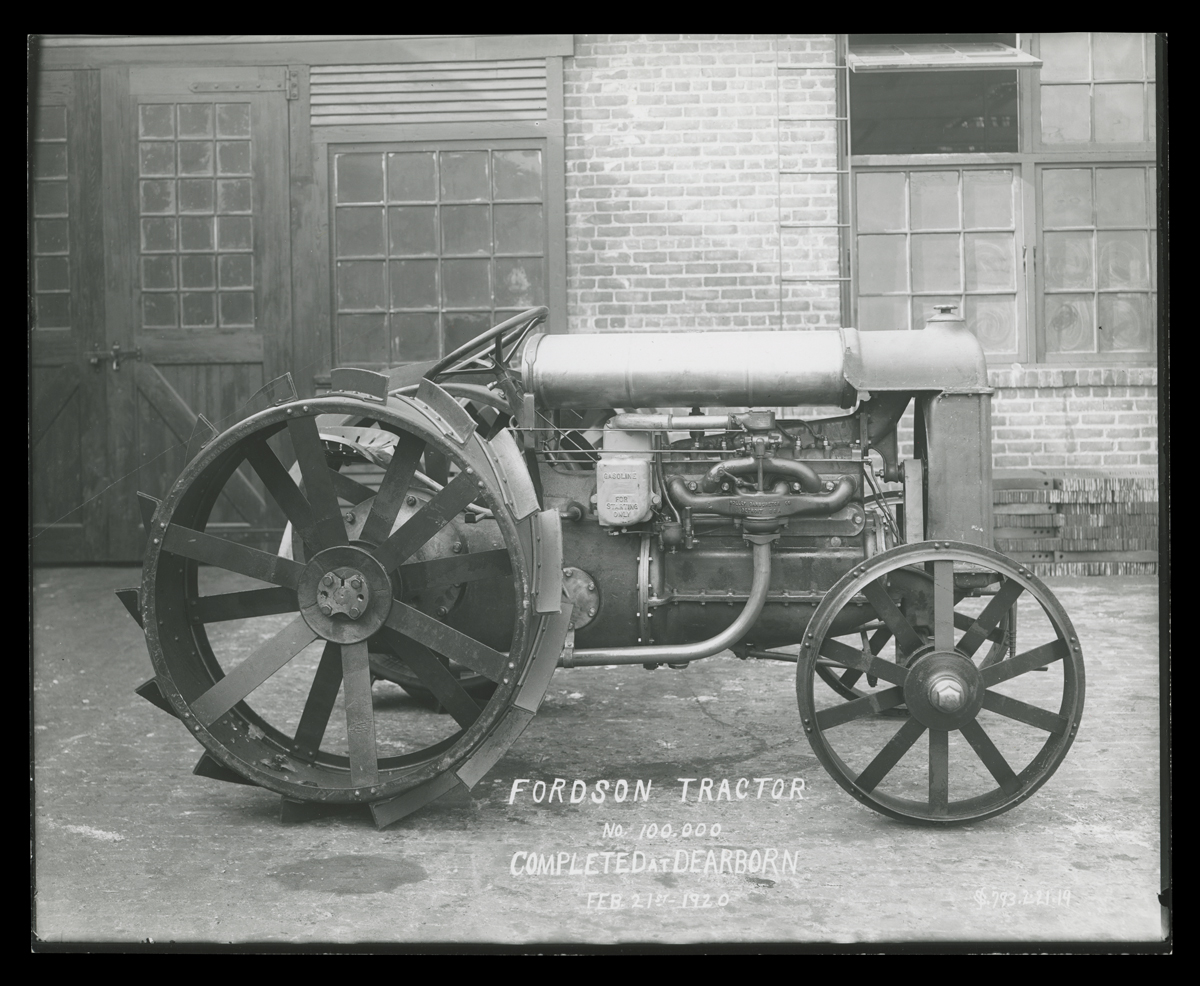
Our 100,000th digitized artifact is this photo--of the 100,000th Fordson tractor. / THF146392
As an institution that holds artifacts in the public trust, we have always cared for them and documented them. But the amazing expansion of the digital realm over the last decade has given us new ways to expand access to our fascinating and significant stories. According to the Pew Research Center, when we embarked on this effort in earnest around 10 years ago, one-quarter of Americans did not use the Internet, only 4 of 10 Americans participated in social media, and American smartphone usage was rare.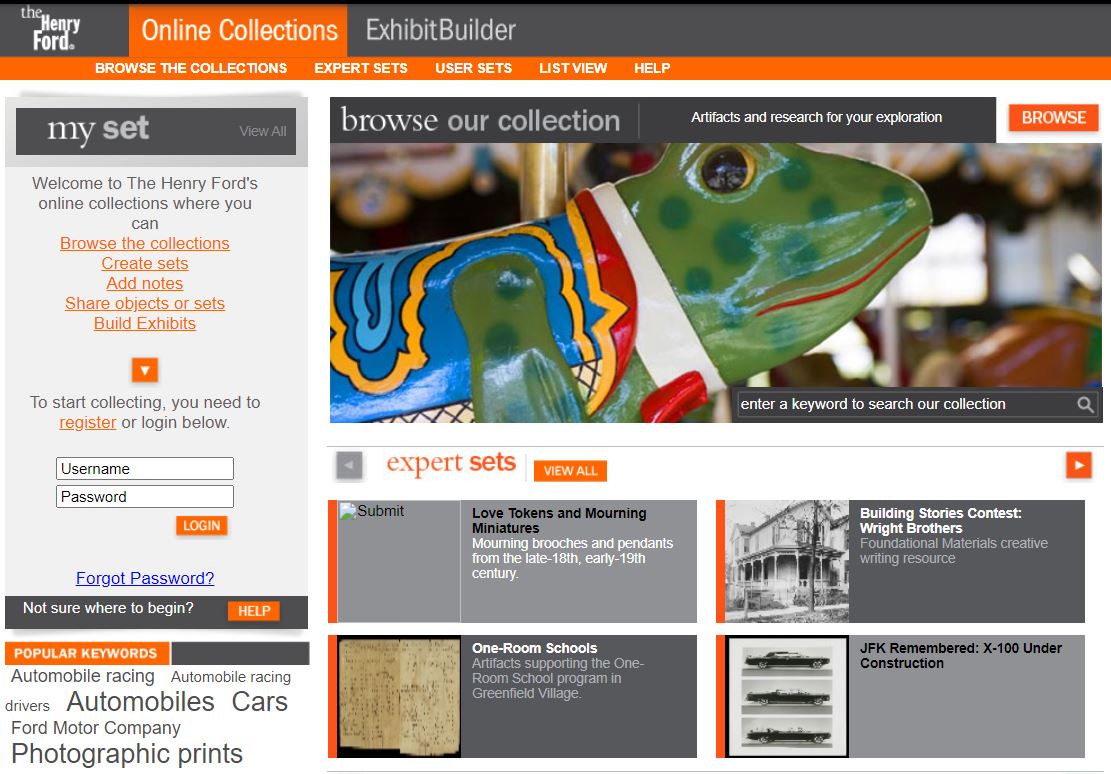
Our original Digital Collections website.
Our beginnings, too, were humble. Our initial digitization efforts in the early 2010s were funded by generous gifts from Lynn and Paul Alandt and Benson Ford, Jr., on behalf of the Benson and Edith Ford Fund. Our first collections website began with only 500 artifacts included—the very first being this 1929 Ford Model A Coupe used by Henry Ford.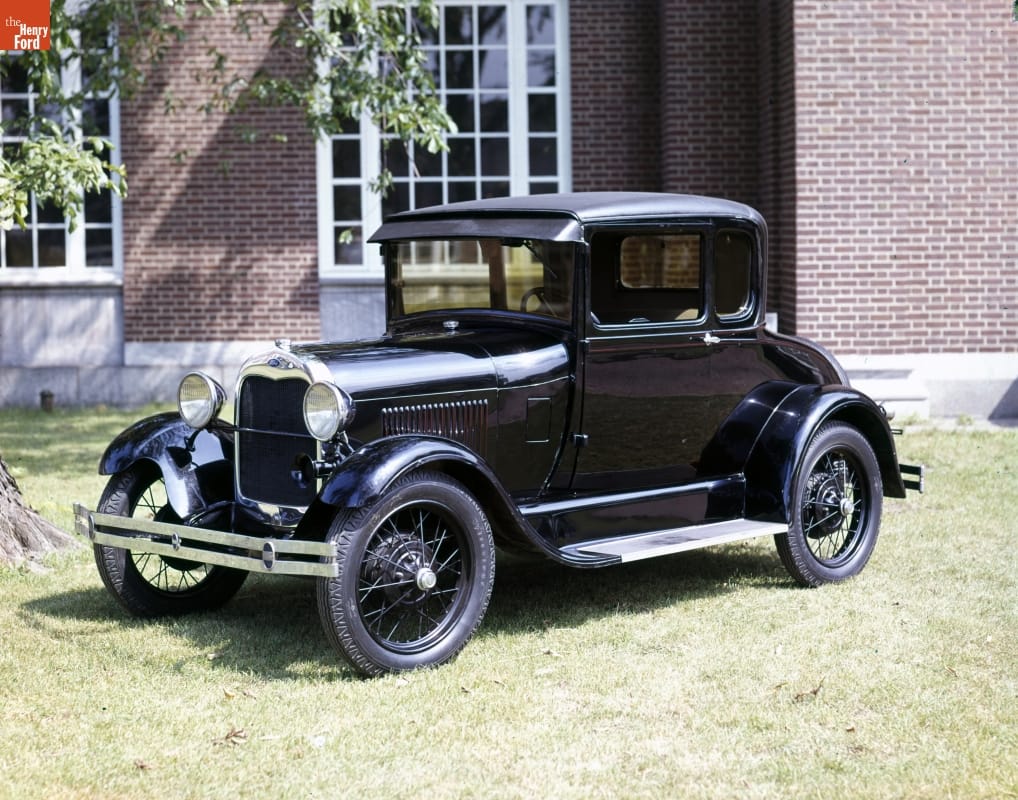
Our first digitized artifact was this 1929 Ford Model A Coupe, used by Henry Ford. / THF87486
As time went on, the number—and breadth—of artifacts we had digitized grew. By 2012, we’d reached 8,000 digitized artifacts; by late 2013, we’d hit 20,000; and two years ago, we hit 75,000. At the same time, technology proliferated—smartphone usage skyrocketed, and web users started to rely on being able to access information anywhere, any time.
Over the years, we’ve digitized artifacts being put on display in new exhibits both large and small, new additions to the collection, artifacts used in The Henry Ford’s Innovation Nation, objects that tell innovation learning stories, and many other “hidden gems” that may not have been on display for many years. They underpin innovative new interactive experiences in Henry Ford Museum of American Innovation, and allowed us to present a comprehensive online content program during the current coronavirus pandemic.
It’s not an exaggeration to say that if you’re a fan of The Henry Ford, you’ve probably benefitted in some way from our digitization program.
So we invite you to join us throughout the month of November here on our blog, as well as our social media channels, to learn more about the many steps that go into this process and the experts on our staff who make it happen—and to learn some fun and interesting facts about our collections along the way. The first week will provide an overview of our work; the week of November 9 will focus on collections management and conservation; week three will focus on the work of our registrars; and we’ll wrap up Thanksgiving week with a highlight on our imaging staff.
And don’t forget to check out our Digital Collections for yourself—share your favorites with us on social media using the hashtag #digitization100K.
21st century, 2020s, technology, digitization, digital collections, by Ellice Engdahl, #digitization100K, #Behind The Scenes @ The Henry Ford
Hallowe’en in Greenfield Village: 40 Years of History
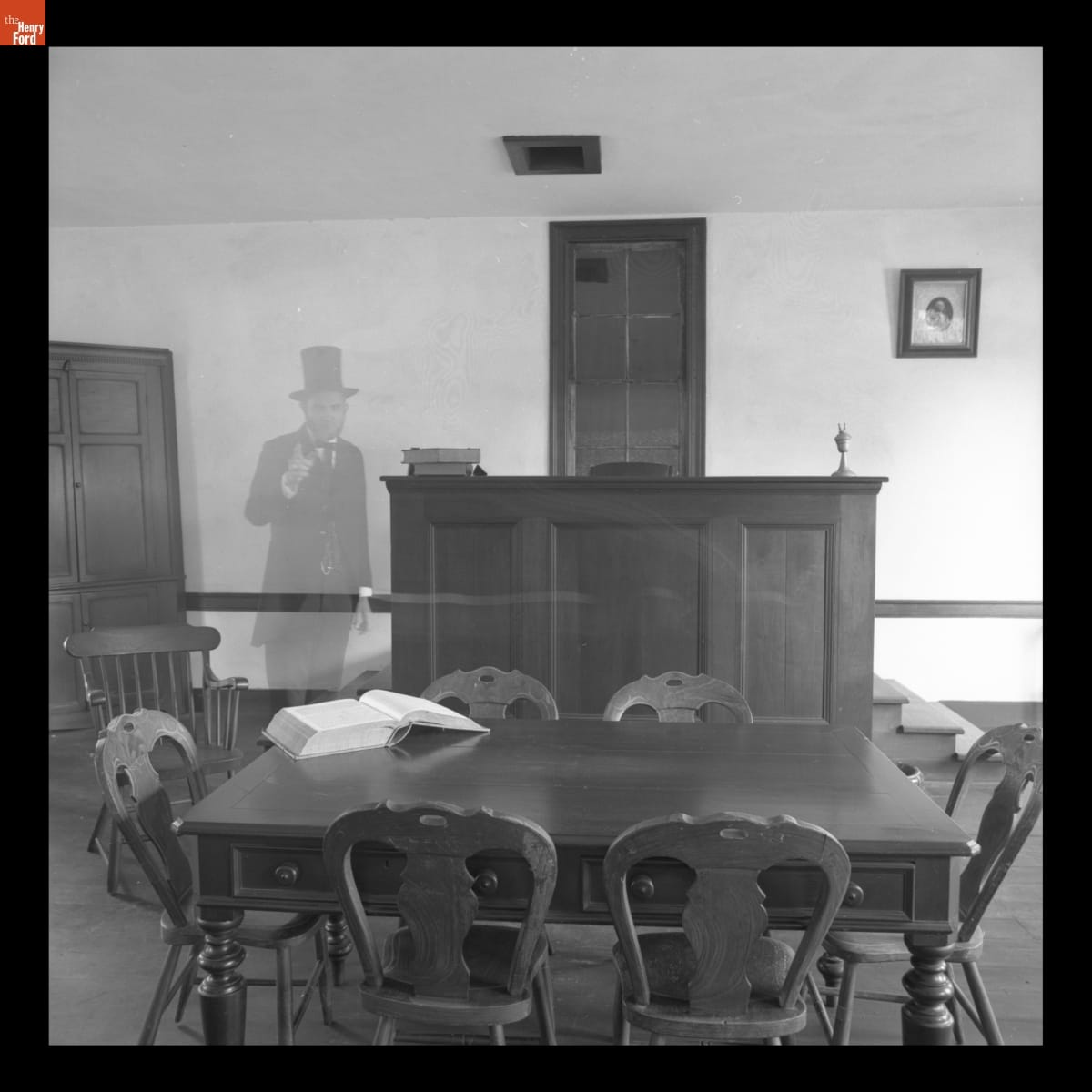
"Ghost of Abraham Lincoln" in Logan County Courthouse for Halloween in Greenfield Village, 1982 / THF146345
Our beloved Hallowe’en in Greenfield Village program is celebrating its 40th anniversary this year. It’s been a fascinating journey to have been involved from nearly the beginning, eventually leading the team that plans and produces this very complicated and detailed guest experience.
Throughout the entire history of the event, the true star of the show has been Greenfield Village after dark. I know of no better palette for our amazing creative team to have at its disposal to work magic year after year.
The year 2020 and its COVID-19 pandemic will be looked back on as a turning point for not only the Hallowe’en in Greenfield Village program, but for all of The Henry Ford. The need for a safe environment and the resources available have forced the team to take a fresh look at the event and view things from a very different perspective. We are excited and invigorated by the plan we have brought forth and we hope our guests are too.
The Beginnings of Halloween in Greenfield Village
The Greenfield Village Halloween program began as an experience shared through our Education Department’s catalogue of classes and courses. This new concept of a family-based, Halloween-themed experience was first developed as a scary wagon ride experience, with stops and treats at various buildings in Greenfield Village. There were other fun seasonal activities, including dunking for apples, a costume parade and contest, and refreshments in Lovett Hall. The wagon ride was carefully planned out and tapped into Village stories, going as far as having as having a staff member’s child on board as a designated kidnap victim--a sign of the different times that were the early 1980s.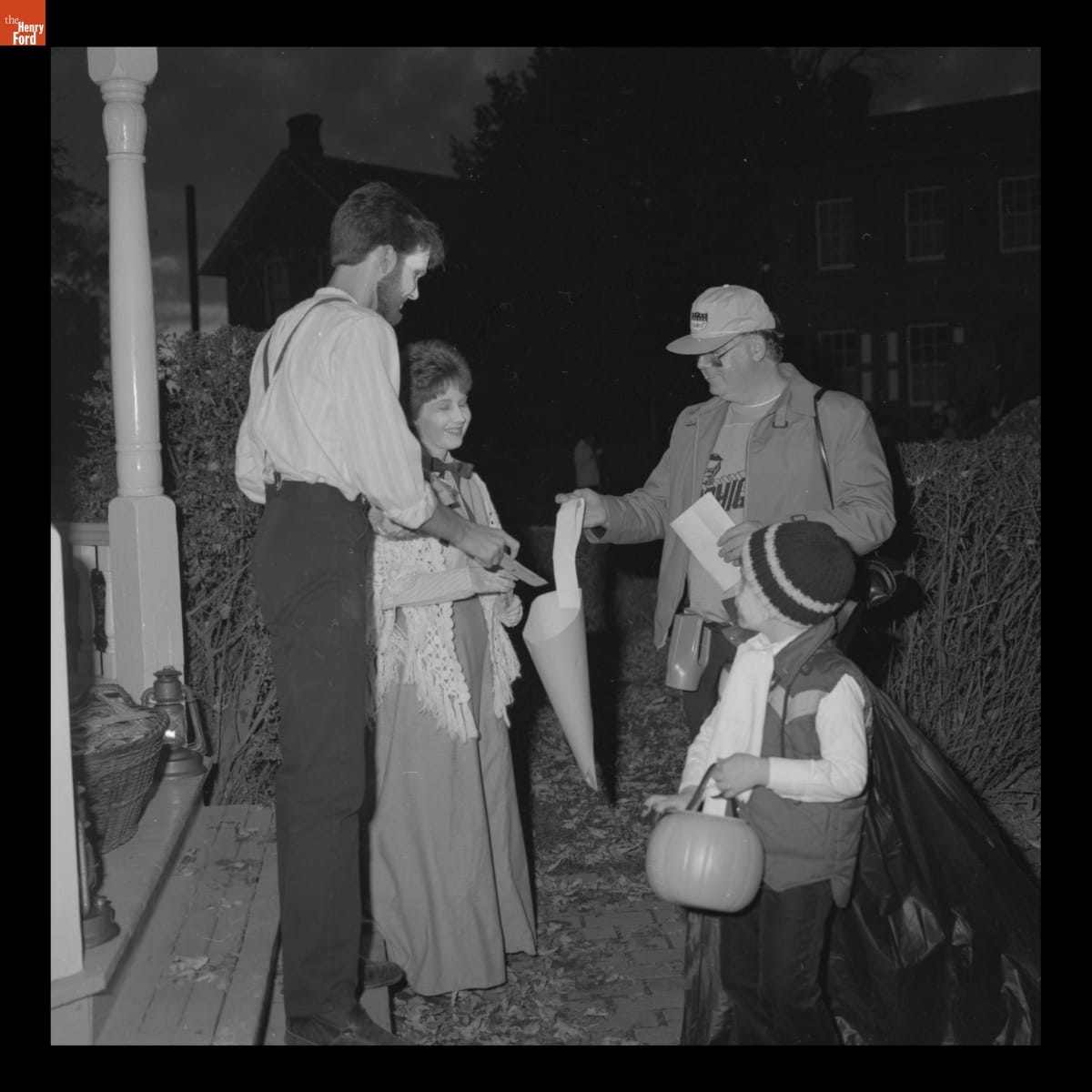
"Trick or Treat" at Wright Home in Greenfield Village, October 1982 / THF146356
This program was presented on an ambitious scale. It was offered one night only and served a remarkably large audience. It was wildly popular and showed what future possibilities and demand lay ahead for the Halloween season. (You can read more about this very first Greenfield Village Halloween program here.)
A series of events led to the next phase of the Greenfield Village Halloween program. The Tylenol poisoning scare in the fall of 1982 changed people’s view of the safety of trick-or-treating. This, combined with new staff and reorganized Village Programs and Special Events departments, brought forth the novel idea of opening Greenfield Village at night as a safe place for trick-or-treating. Thus, the foundation for Hallowe’en in Greenfield Village was born: the basic format of the program we have used until now.
This first Village trick-or-treat Halloween program drew an unexpectedly huge crowd of over 5,000 people. No control measures for timed or paced entry times were put in place and the event was open to the public. As expected, the supply of treats ran out quickly and drastic measures had to be put in place to try and keep pace. I remember working at the first treat stop, the Loranger Gristmill. We gave out handfuls of loose candy corn (a nice thematic connection to the gristmill). I remember it being a very chaotic experience and the porch of the gristmill being coated in smashed candy corn, which could not be seen—only felt—under my feet. In the light of the following day, I was amazed to see single pieces of candy corn that had been pressed out to the size of my hand, still retaining their original shape and color!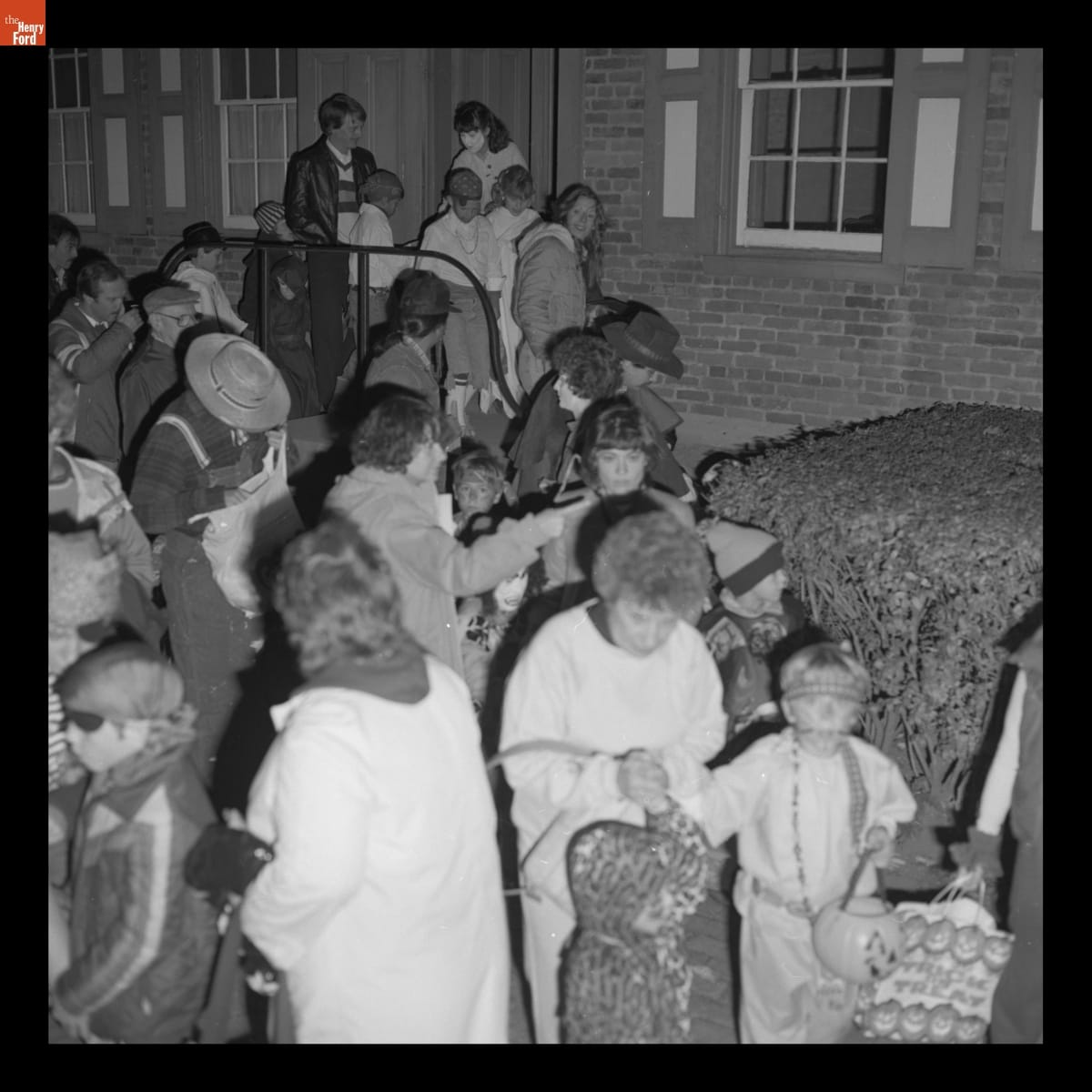
"Trick or Treat" at Heinz House in Greenfield Village, October 1982 / THF146374
Many lessons were learned that opening weekend. Moving forward, Halloween in Greenfield Village became a members-only event and entry times were established to slow and control the flow.
Developing the Program in the 1980s and 1990s
Halloween would remain a members-only event for the next 20 years. The first few years, Halloween only took place for one weekend in October. This would continue through the 1980s. By the early 1990s, the still members-only program would expand to two weekends and eventually three. During this time, staff were allotted a certain amount of free tickets, but were required to show up on a set day and time and stand in a very long line to get their tickets. Member tickets for the limited number of program days typically sold out very quickly.
In the first era of the program, there was a lot of emphasis put on the treats and their thematic connection to the Greenfield Village sites from which they would be given out. Different treats were picked out each year.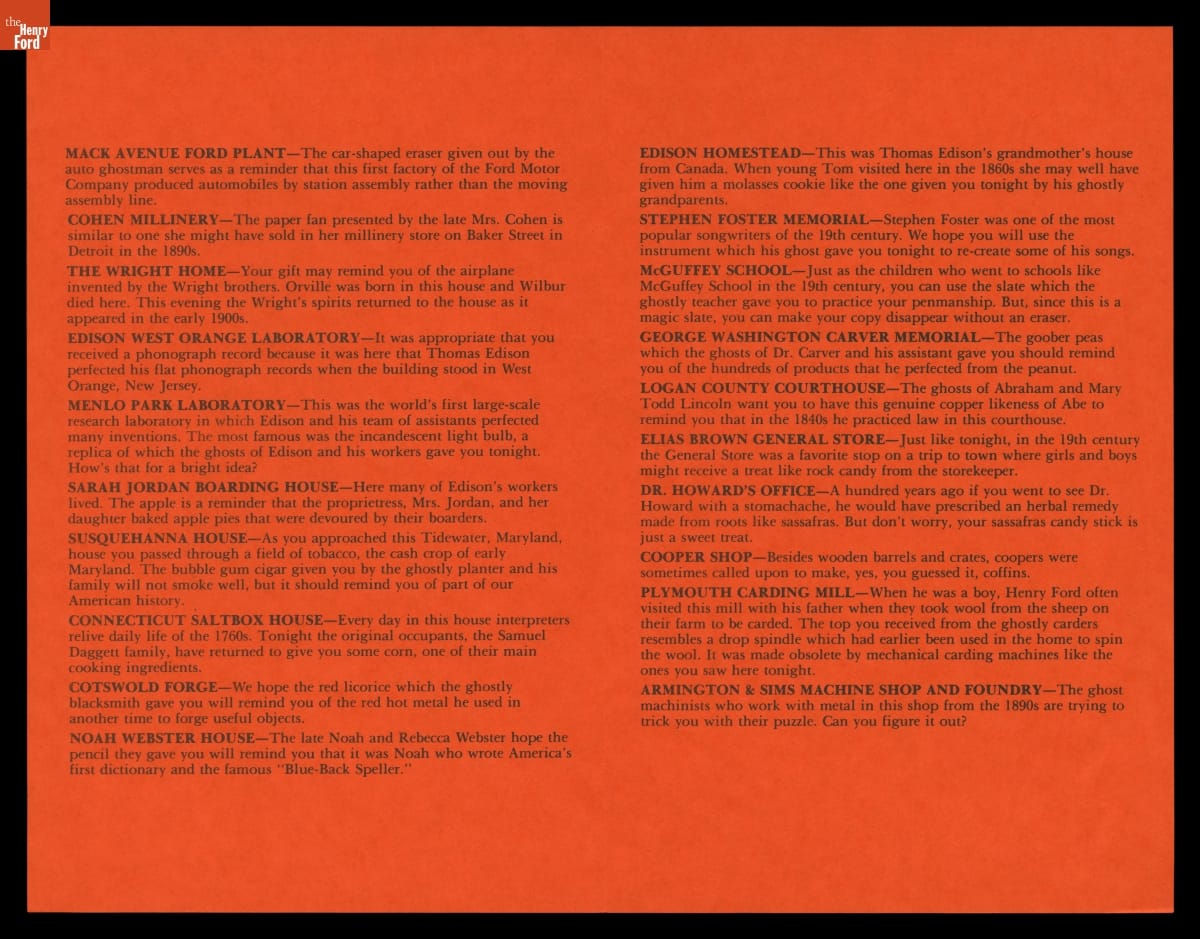
The inside of the brochure for 1983’s “Family Halloween in Greenfield Village” lists the thematic connections for each building treat stop. / THF146311
Connecting the trick-or-treat path were a variety of Halloween-themed vignettes or interactions, associated with historical events and characters with a nod to scary stories of the past. The effects were low-tech and, in some cases, took inspiration from the emerging haunted house industry. First seen in the 1970s, these haunted houses were grassroots amateur efforts, often sponsored and produced by local Jaycees, Elks, and other fraternal organizations as fund raisers. They relied on cheap scare tactics that involved being jumped out at, grabbed, and sometimes gory scenes. For years, we used some of these very same techniques. The Ackley Covered Bridge was notorious for this.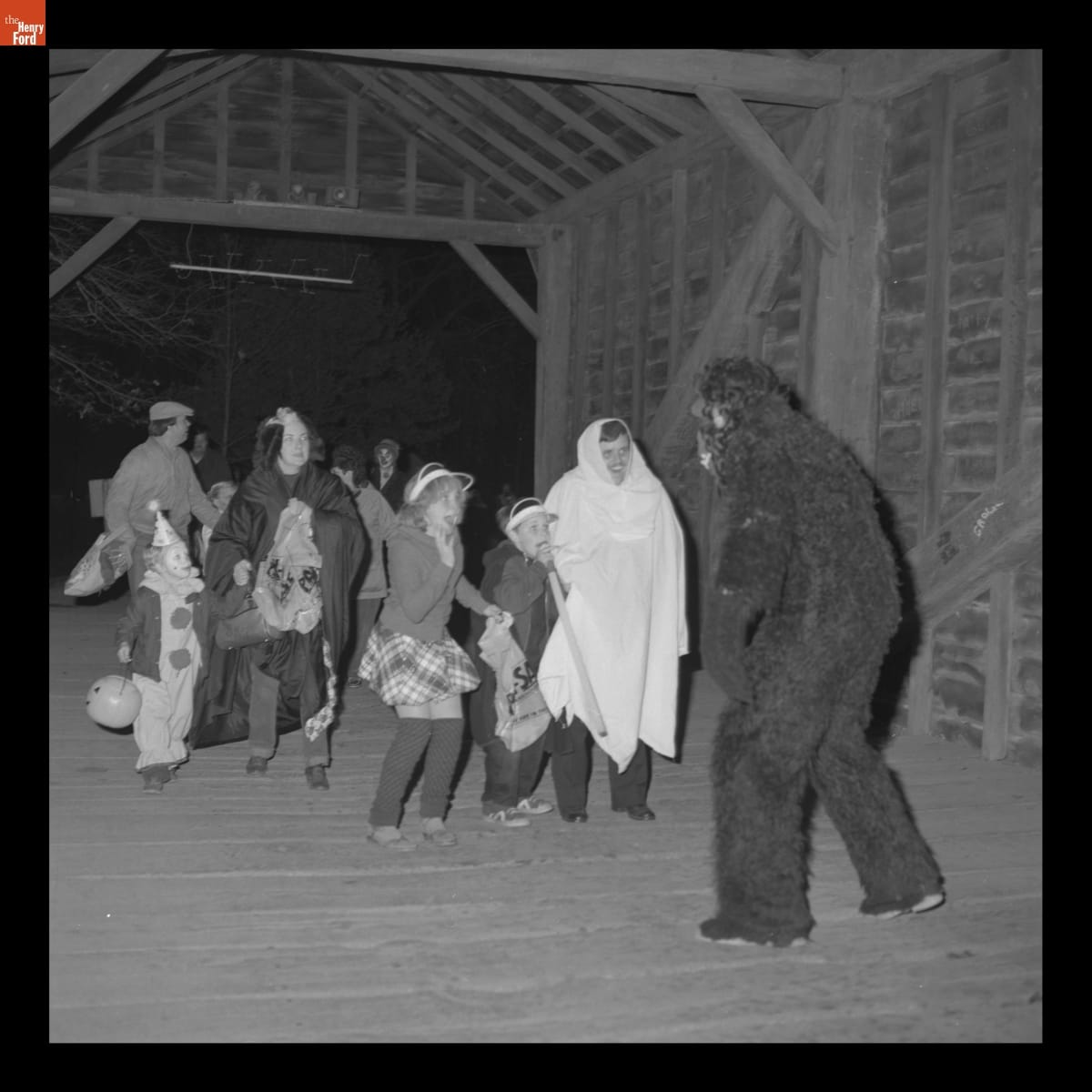
"Gorilla" on Ackley Covered Bridge during Halloween in Greenfield Village, October 1982 / THF146372
When it came to infrastructure, the Greenfield Village of the 1980s and 1990s basically resembled the Greenfield Village of 1929. There were very few, if any, streetlights and limited access to power to add additional lighting. Until the restoration of 2003, Halloween in Greenfield Village was very dark. Because of this, the jack-o’-lantern pumpkin path played an important role in lighting the way through the experience. A continuous thread to today’s program is the large number of hand-carved and candlelit jack-o’-lanterns that line the path—though now, they serve more to create ambience and atmosphere. Over 1,000 pumpkins are now hand-carved each week to achieve the continuous path.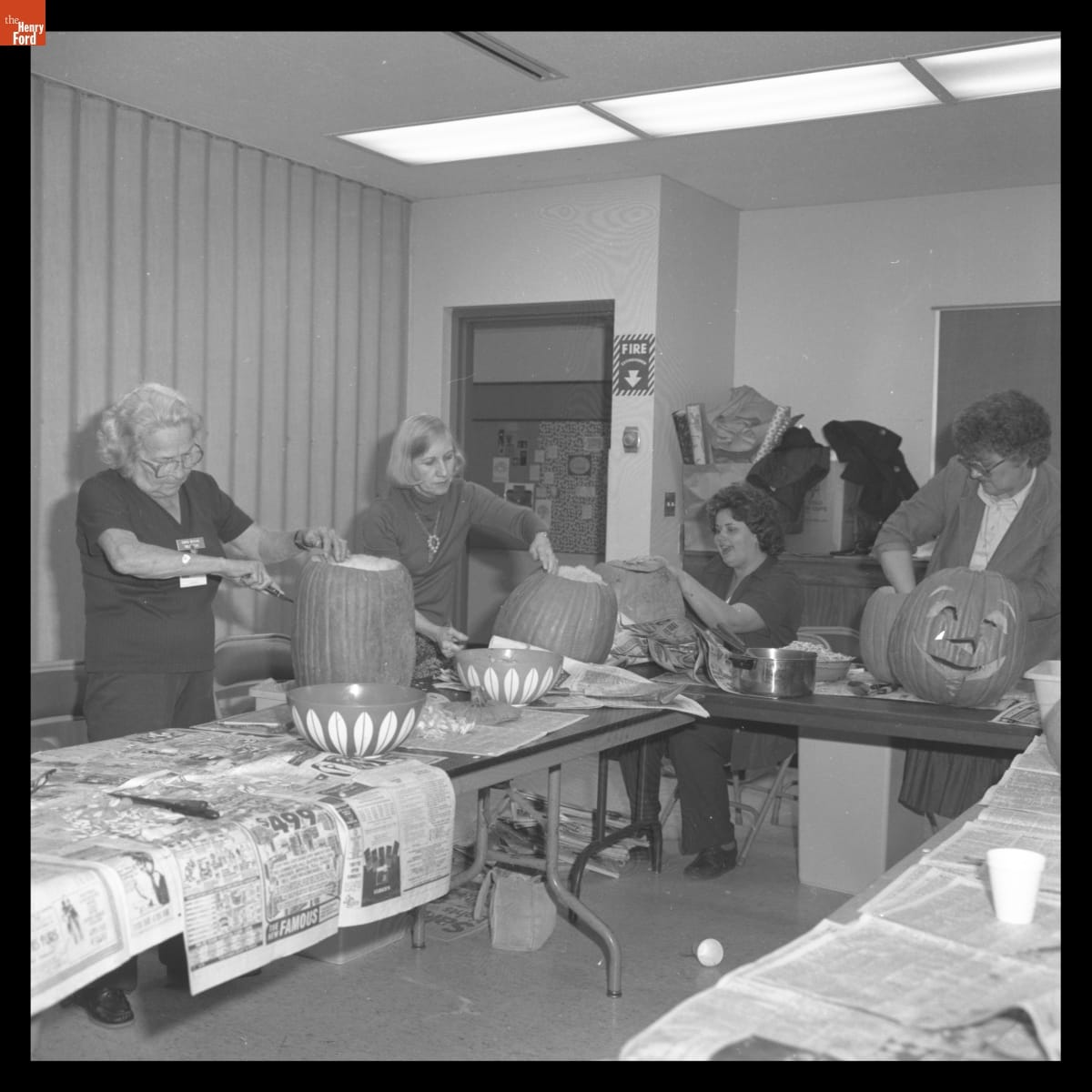
Volunteers Carving Pumpkins for Family Halloween Jamboree in Greenfield Village, October 1981 / THF146327
Throughout the 1990s, the Family Halloween program, still a members-only event, continued to grow in popularity and had become a yearly tradition for many. Creative collaborations between the Special Events, Village Programs, and AV teams continued to improve the experience, and serious work and experimentations began with lighting and visual effects. A huge breakthrough was the discovery that Tim and Tom, the Firestone Farm black Percheron horses were decent riding horses. It was not long before the Headless Horseman made his debut in the front fields of Firestone Farm. He was soon joined by Ichabod Crane and a Halloween in Greenfield Village favorite was born.
By 2001, though the sophistication and fit and finish of Halloween in Greenfield Village had evolved dramatically from its early years, there was still great potential for growth. Previously, costuming had mainly been reworked or cast-off bits and pieces from the period clothing inventory, décor was minimal, and aside from the hundreds of pumpkins on the jack-o’-lantern path, the main emphasis remained on treats.
The New Millennium Brings a Turning Point to the Program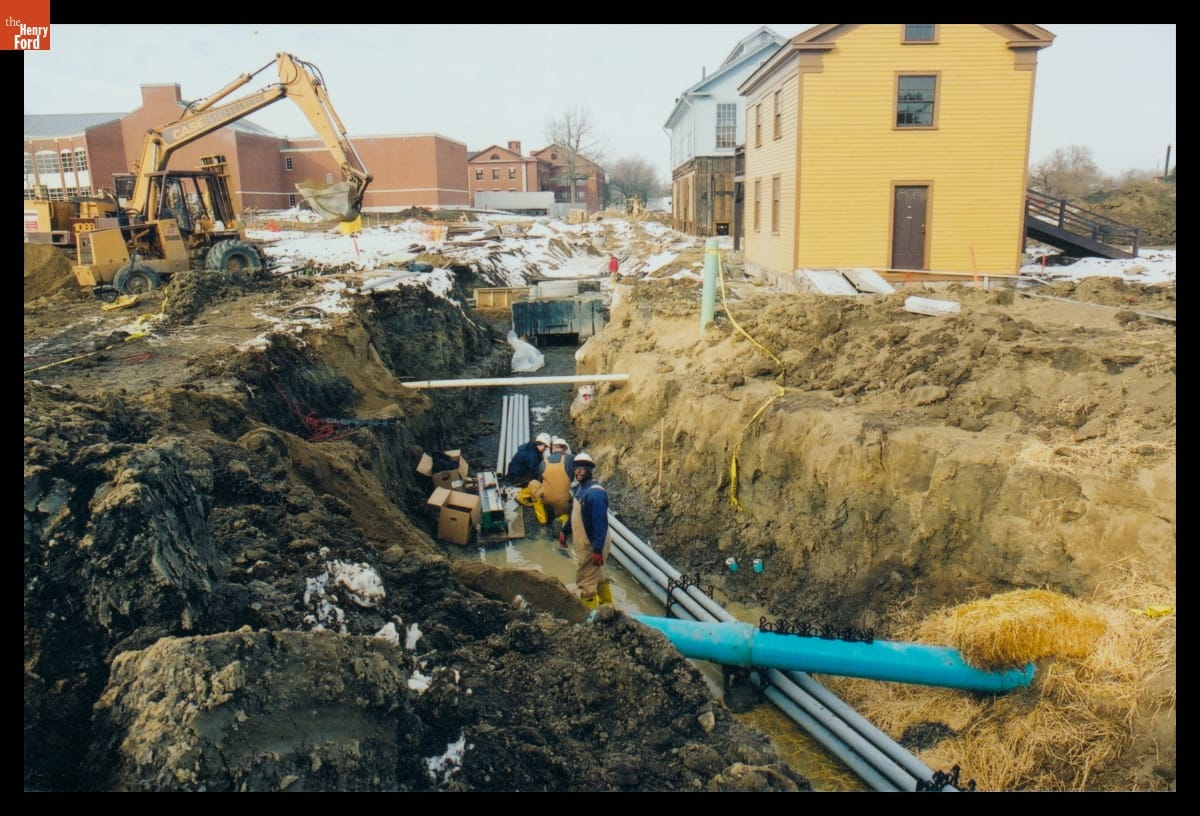
Workers Laying Conduit in Greenfield Village during Infrastructure Restoration, January 2003 / THF133585
In 2002, the big news around Greenfield Village was the impending massive infrastructure restoration that would begin to take place in the fall. The Village would close at the end of September and not reopen until the following June. Halloween would take a hiatus that year as the huge project gained steam. This would be a turning point and a newly imagined program soon emerged, keeping in step with the newly imagined Greenfield Village.
By the summer of 2003, a cross-functional team began planning the work. The team very quickly established a back story that would guide what the new Halloween would and would not be. The shock and gore, now so prevalent in haunted houses, was removed from the mix. Instead, there was a move toward a family-friendly experience that would rely on the power of Greenfield Village after dark and scary and adventure-based stories that fuel the imagination and Halloween spirit.
Another important inspiration was Halloween party guides, published from the early 1900s through the 1950s, in the collections of The Henry Ford. These handbooks gave endless advice on how to decorate, what games to play, what food to prepare and serve, and a whole host of other miscellaneous tips on how to throw the best Halloween party. Among the most useful and inspirational were the series of yearly Bogie Books, published by the Dennison paper and party goods company from 1912 through 1935. These pamphlets were filled with illustrations, some in color, that featured the huge array of crepe paper and other party products produced by the Dennison Manufacturing Company. Elaborate costumes and party décor were shown—along with the list of Dennison products one would need to replicate the awe-inspiring ideas featured. The colors, textures, and techniques guided our teams in both costuming and decorating throughout the Village.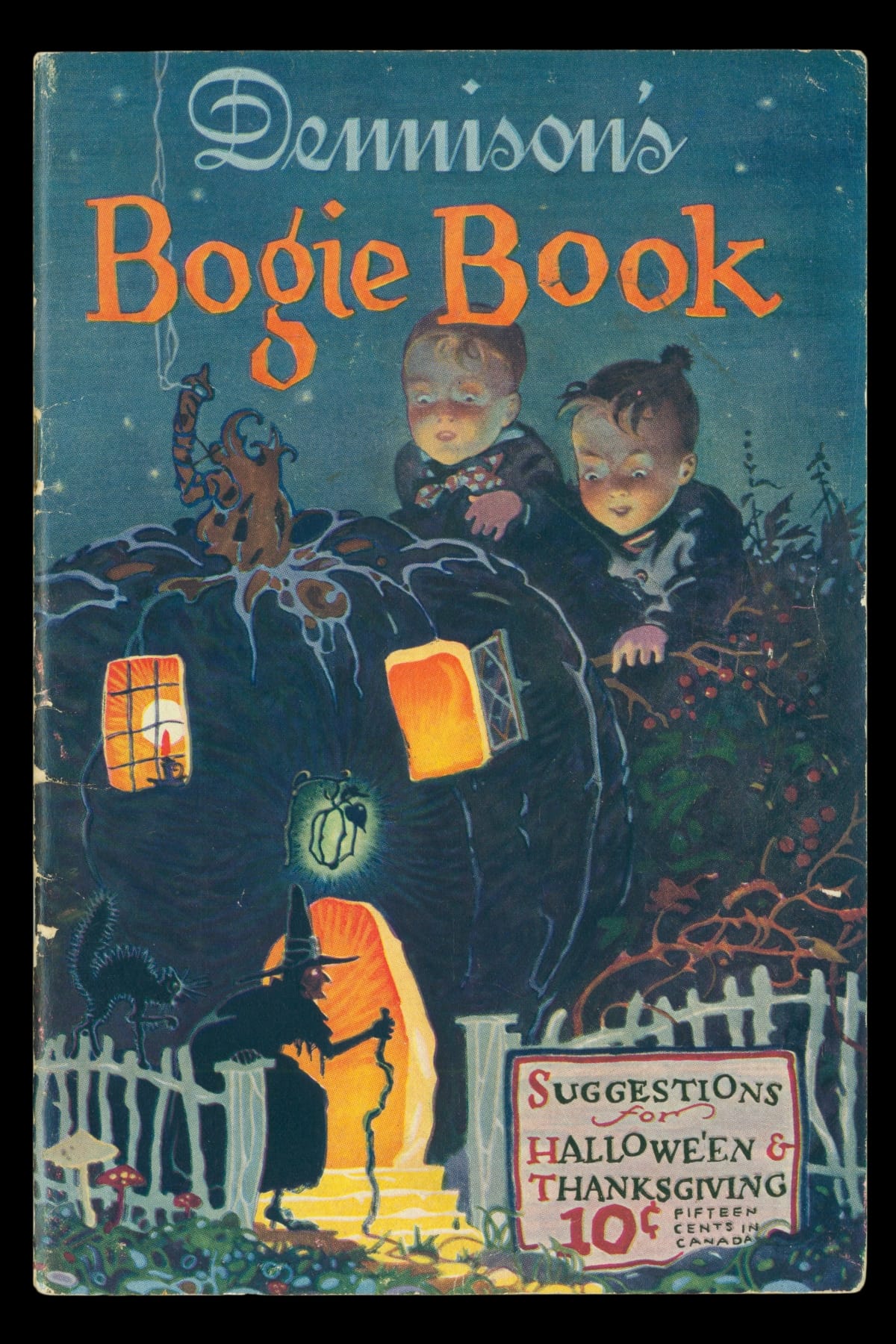
Dennison's Bogie Book: Suggestions for Halloween & Thanksgiving, circa 1925 / THF96746
Trick-or-treating would remain the main vehicle for moving guests through the experience on a set path, but the look and feel of the treat stations would begin to change dramatically. The Period Clothing Studio became very involved and began to design a spectacular series of costumes to bring the gothic, fairytale, and adventure storybook characters to life—with a nod to costumes of the 1910s and 1920s. By 2005, these characters would become the treat station hosts, with their own stages and stage lighting. Other favorite characters, like the Woman in White, the Dancing Skeletons, the live scarecrow, and, of course, the Headless Horseman and Ichabod Crane, made triumphant returns with new costumes.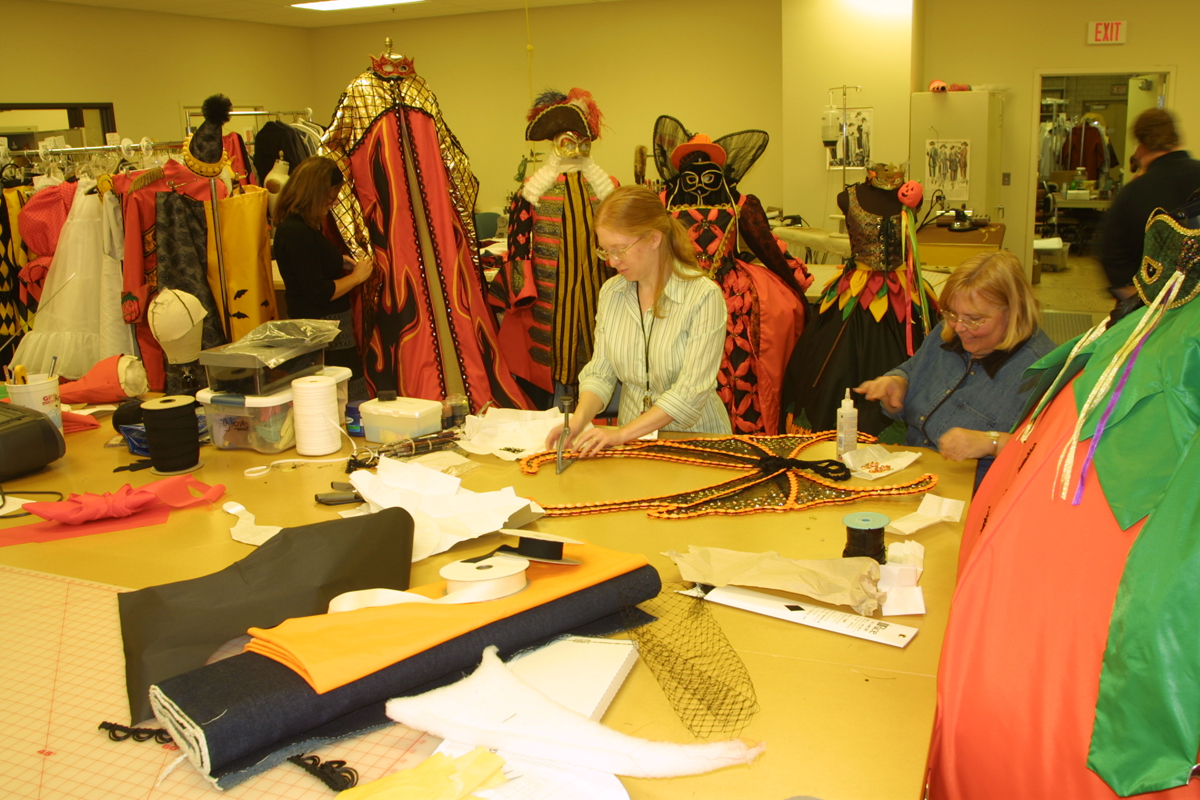
Costume Studio Preparing for Halloween in Greenfield Village, October 2005 / THF12490
Another significant change at this point was the shift from Hallowe’en being a members-only event to a public event. Members still had first-pick when ticket sales opened, as they do now, but after a certain date, the public was invited to purchase tickets. As the popularity of the event continued to grow, so did attendance capacities.
The creative work to improve costumes, set designs, and theatrical lighting continued. Through the 2010s, staged theatrical performances of Edgar Allan Poe’s “The Tell-Tale Heart” and other fun, but dark fairytales, such as “Hansel and Gretel” and “Little Red Riding Hood,” were added to the mix. To set up the live Headless Horseman experience, Washington Irving’s “The Legend of Sleepy Hollow” was also performed. Along with the dramatic presentations, live Halloween-themed musical performances featuring a vampire trio, the Potion Sisters, and a musical pirate review rounded out the offerings. To top it off, the Top Hat Side Show became a fixture on Washington Boulevard, anchoring the 1920s carnival theme in that area.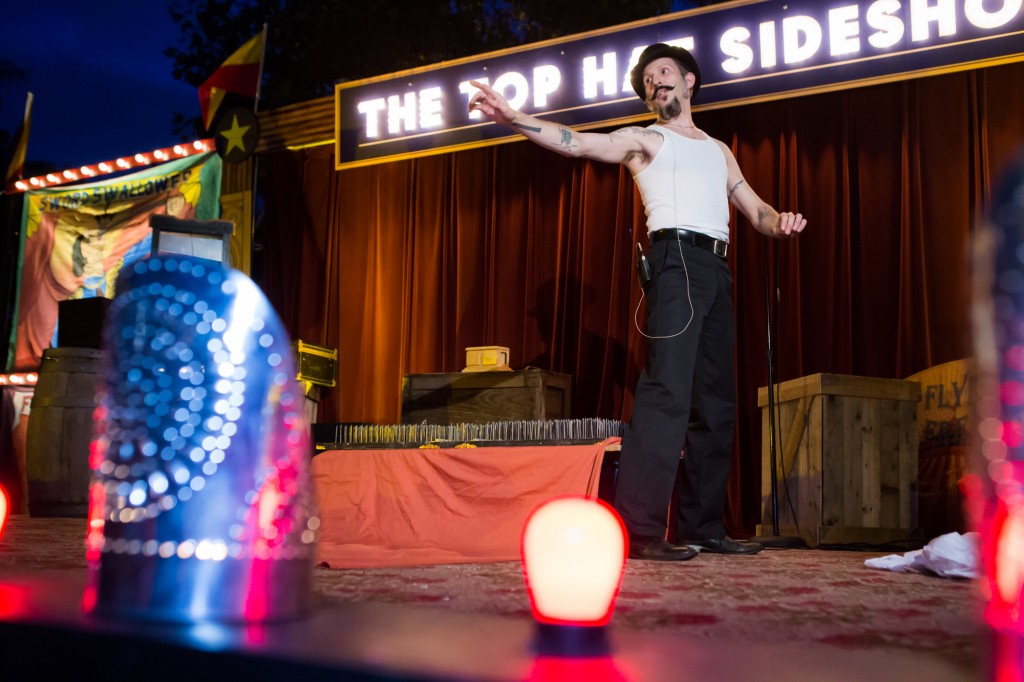
The Top Hat Side Show performing at Hallowe’en in Greenfield Village for the first time in 2015. (Photo by KMS Photography)
By 2019, the Hallowe’en in Greenfield Village experience had hit its full stride and welcomed a record number of guests. There were now several different ways to experience the program with the addition of evening dining opportunities, including the children-themed “Fairytale Feast” and the 1850s Eagle Tavern Harvest Supper.
Rethinking Hallowe’en in Greenfield Village in 2020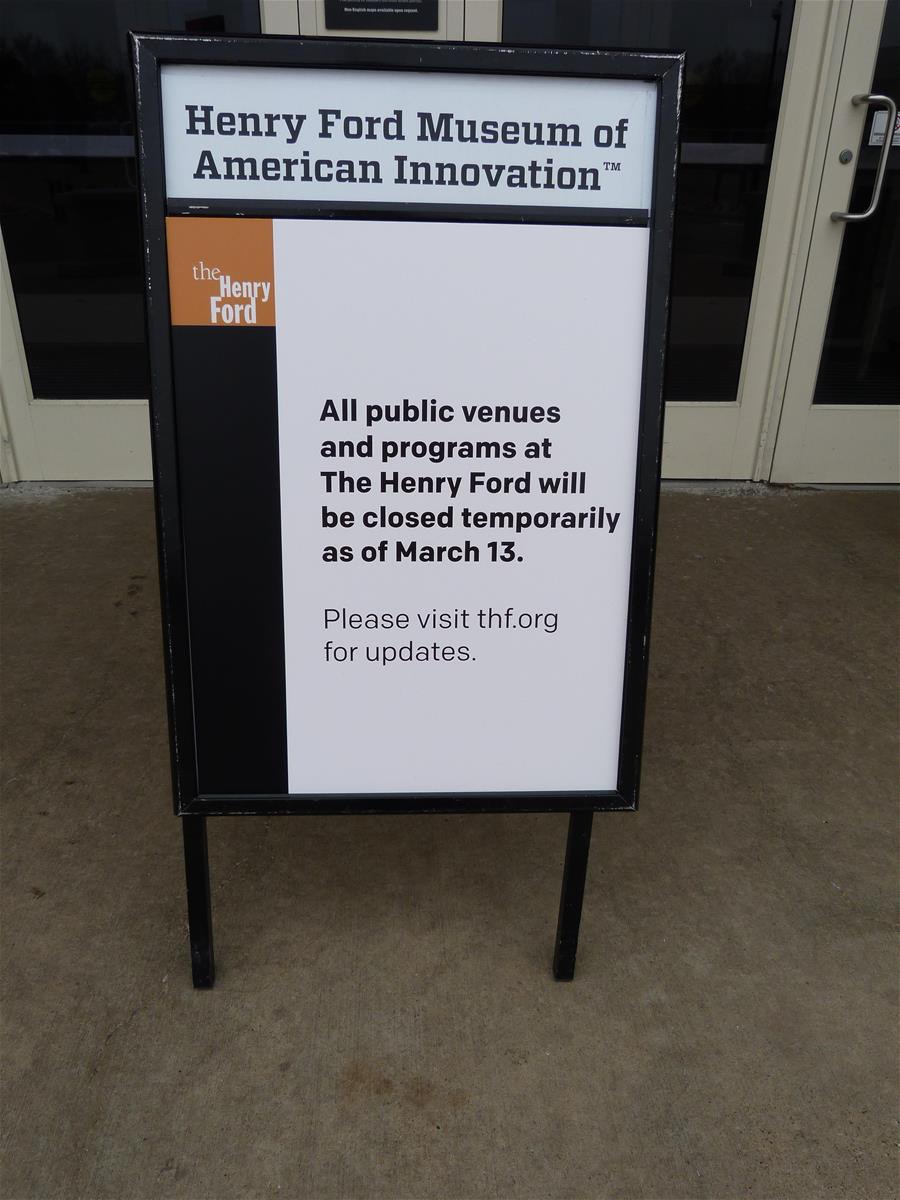
Signage outside the main entrance of Henry Ford Museum of American Innovation in March 2020, announcing the closure of our venues due to the worldwide COVID-19 pandemic. (Photo courtesy Ellice Engdahl)
Planning for the 2020 Hallowe’en program was well underway when the world as we knew it came to a screeching halt—and along with it, the entire summer calendar of Greenfield Village special events. As we cautiously reopened the Village and Museum over the Fourth of July weekend, The Henry Ford continued to learn and understand how safety measures should work, what the scale of program offerings needed to be, and what the future might bring. By the end of the summer, it was clear that we could consider a Halloween program in October. We knew it would need to be reimagined and presented in a very different way in order to comply with safety measures while at the same time allowing our guests to have a fun and enjoyable experience.
Based on decades of experience in planning and producing large scale public events, the Hallowe’en planning team took a fresh look at the program. It was immediately apparent that the entire concept of lining up for treats would have to be eliminated. Without the need for a set prescribed route, new possibilities opened, and the Holiday Nights model of enjoying the evening at one’s own pace and experiencing program elements in any order became the logical approach. Greatly reduced attendance capacities and timed entry would ensure a safe experience. Unfortunately, we were not able to offer our evening dining experiences this year, but happily, many familiar and favorite characters and experiences made a return.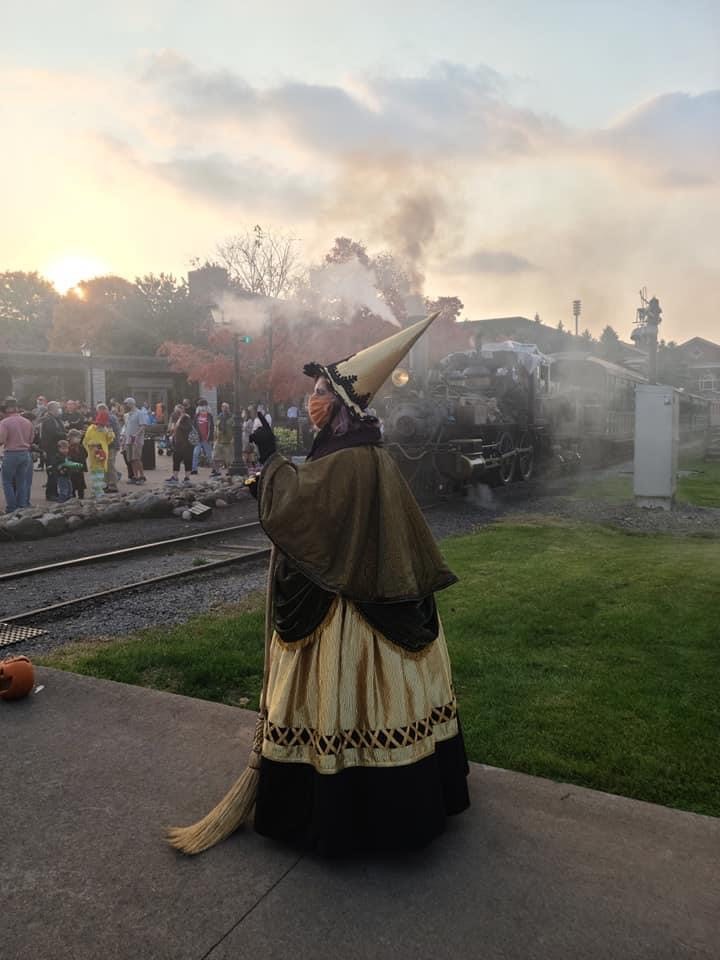
A witch and the Hallowe’en Express welcome guests to Hallowe’en in Greenfield Village in 2020. (Photo courtesy Jim Johnson)
A very exciting addition for 2020 is the Hallowe’en Express, a brand-new Halloween-themed train ride that makes a round trip excursion from the “Brimstone” Station at the front of the Village. Guests encounter all sorts of sights and sounds along the way. The presence of a live steam locomotive in the Village, with an eerie whistle created just for this occasion, adds an entirely new dimension to the overall experience for our guests.
Over the past 40 years, Hallowe’en in Greenfield Village has steadily grown and evolved. There have been many turning points in its long history, and 2020 will rank among the most significant. New beginnings can often be viewed as painful endings, but the Hallowe’en in Greenfield Village planning team is fully embracing this new beginning and is very excited to share the path we have taken.
Jim Johnson is Director of Greenfield Village and Curator of Historic Structures & Landscapes at The Henry Ford.
Additional Readings:
- Hallowe'en in Greenfield Village
- A Scent in Time – Fall Flavor Weekends in Greenfield Village
- Hallowe'en in Greenfield Village: Postcards
- Eagle Tavern Harvest Supper
Michigan, Dearborn, 21st century, 20th century, holidays, Hallowe'en in Greenfield Village, Halloween, Greenfield Village history, Greenfield Village, events, COVID 19 impact, by Jim Johnson, #Behind The Scenes @ The Henry Ford
#AskAnArchivist Day 2020
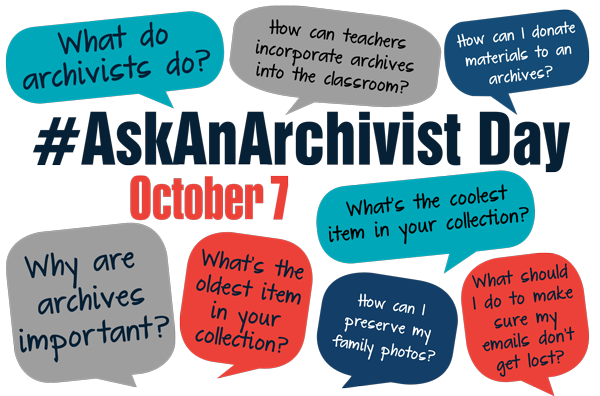
Promotional image for #AskAnArchivist Day 2020 from the Society of American Archivists.
One day every October (American Archives Month), archivists flock to Twitter for #AskAnArchivist Day. The event, organized by the Society of American Archivists (SAA), allows archivists to explain what they do and answer questions from the public in real-time.
This year, four representatives from our Archives--Sr. Manager, Archives & Library, Brian Wilson; Reference Archivist Kathy Makas; Processing Archivist Janice Unger; and Processing Archivist Hilary Severyn--took shifts answering questions from The Henry Ford's Twitter account. Between the four of them, they covered topics ranging from the availability of research assistance during the COVID-19 pandemic to our Ford Motor Company records to mustache-related puns. Below are some highlights from the day's Q&A.
Continue Reading
21st century, 2020s, research, by Ellice Engdahl, archives, #Behind The Scenes @ The Henry Ford
Remembering Our First Hallowe’en
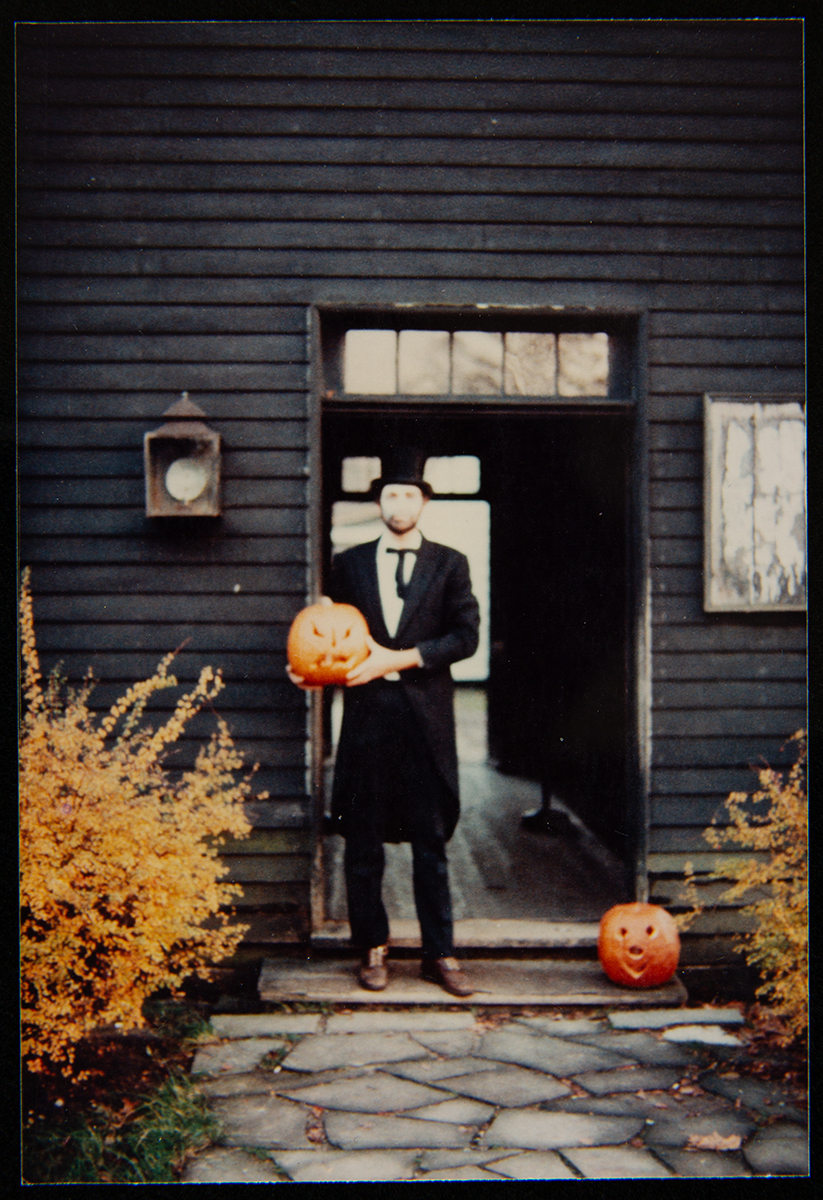
Curt Braden, as the “ghost” of Abraham Lincoln, posing with the carved jack-o’-lanterns at the doorway of the Logan County Courthouse that marked treat stops. (Photo courtesy Susan McCabe)
The 40th anniversary of “Hallowe’en in Greenfield Village” seems like a perfect opportunity to reflect upon the first Halloween program in Greenfield Village. I was there with my husband, Curt, in the Logan County Courthouse. With his face covered in white theatrical makeup, he played the “ghost” of Abraham Lincoln for the evening, while I played his wife, Mary Todd. Other “ghosts” were stationed at various other Village buildings, awaiting the young trick-or-treaters who would show up at their doorstep. We all wondered whether it would work, this crazy idea of using the Village as the canvas for a historically-themed Halloween program.
As kids filed through the Courthouse that night, my “ghostly” husband handed them each a Lincoln Head penny while he told them, “Here’s a token in remembrance of me.” Some kids gawked at him. Others smiled and circled back again for another penny. Still others scowled and said, “Only a penny?” I honestly remember almost nothing from that night. It was all a blur except for a few snapshots I have, proving we were there.
Now, 40 years later, I feel compelled to find out exactly what transpired that night. So, I asked Brian Wilson, our Senior Manager of the Archives and Library, to see if he could dig out the original program description of it (which he did). I also got in touch with a few old friends who had helped plan it and participate in it. What I found was that, while our memories are sketchy and sometimes inconsistent, we all felt that night that we were on a mission, a mission to provide guests with a combination of fun and learning using the rich historical stories that pervade Greenfield Village. The magical quality of being in the Village at night (decades before there were streetlamps) didn’t hurt either.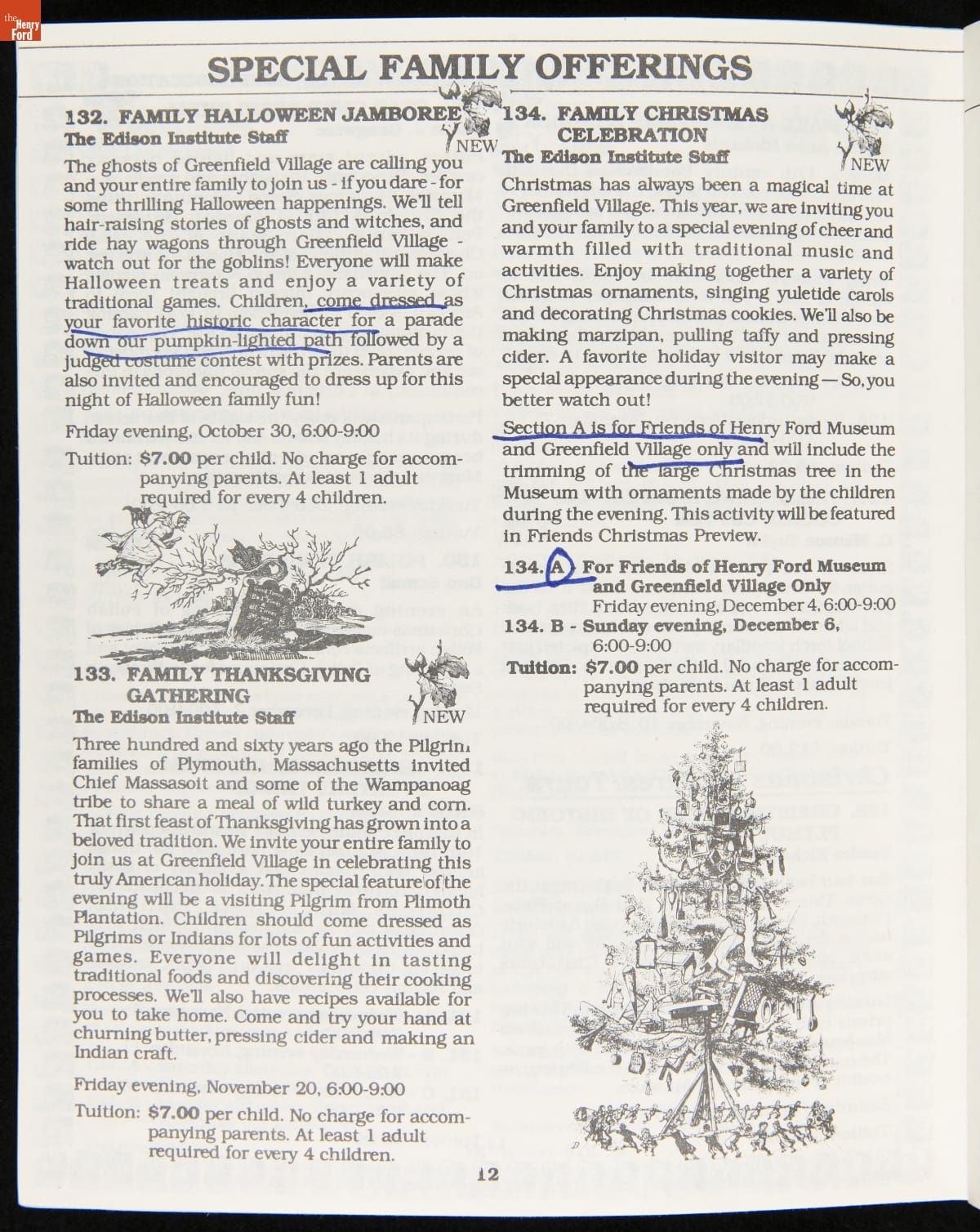
Description of the Family Halloween Jamboree in the 1981 class catalog / THF610727
In 1981, the program was called the Family Halloween Jamboree and it was one of the many listings in the catalog of Adult Education, Teen, and Children’s Classes organized by the Education Department at the time. After the Greenfield Village schools had closed in 1969, the museum had become a strong advocate of offering educational classes for the general public. By the early 1980s, the class catalog was extensive, including page after page of lectures, tours, and an incredible array of craft classes, like glassblowing, blacksmithing, and tinsmithing. Children’s classes also involved a wide array of different take-home crafts and hands-on opportunities.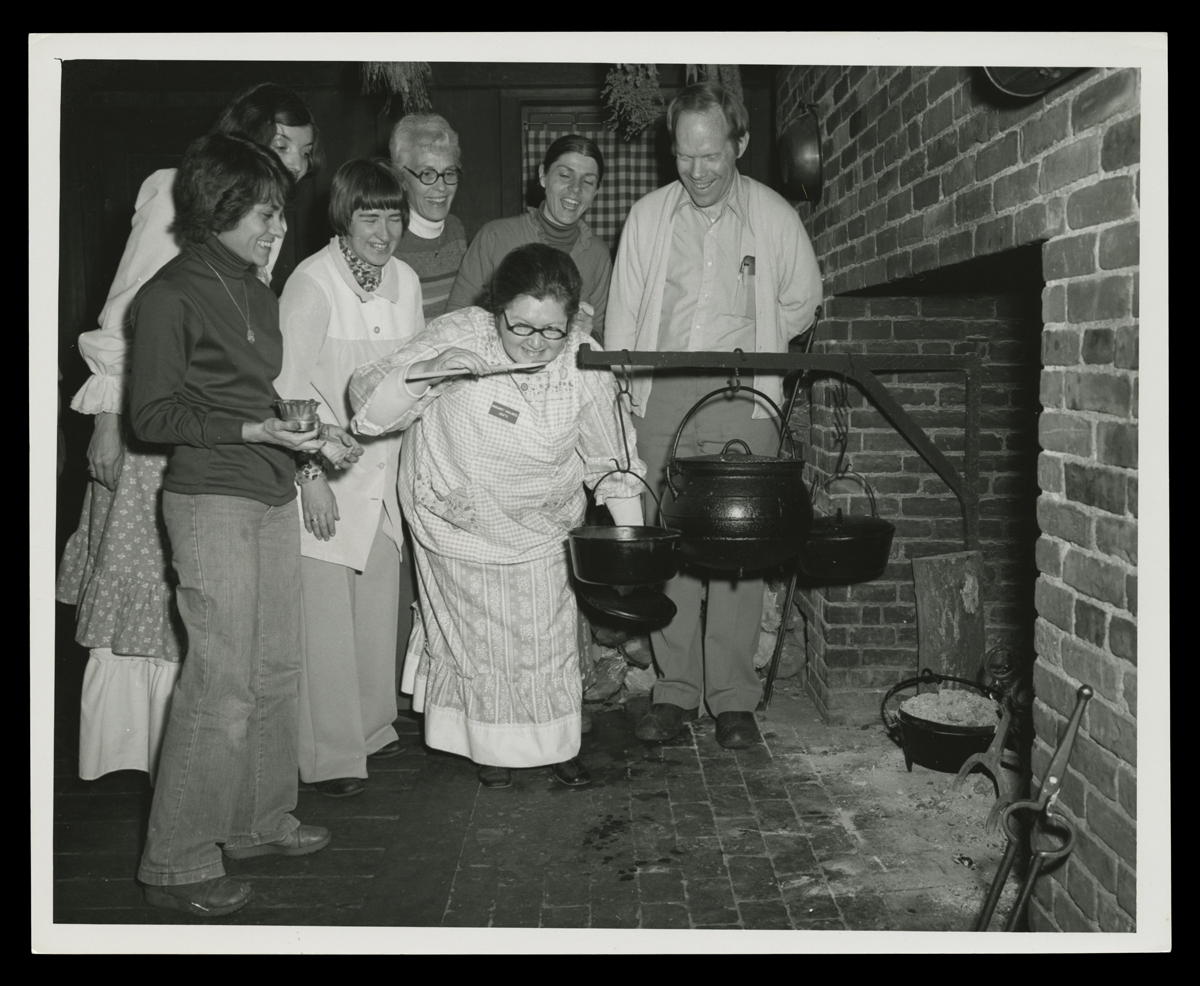
Colonial Cooking was a popular Adult Education class held in Clinton Inn (now Eagle Tavern) during the late 1970s. / THF112256
Harold Skramstad’s arrival as President in 1981 provided the catalyst to reimagine a wide variety of new educational programs. Summer Discovery Camps began that year, along with new Member programs. All of these new programs were characterized by a close alignment with our historical figures and stories. The Family Halloween Jamboree was no exception. Jim VanBochove, a graduate student intern that previous summer and a participant in the first Halloween program (and now Director of Organizational Culture at The Henry Ford) explained that, “That was one of the great things in those days—that you could really try some new things. There was support, even if it didn’t turn out.”
This program was the brainchild of museum professional Candace Matelic, hired earlier that year as Manager of Adult Education and Children’s Programs. She was helped by her able assistant, Susan Gangwere (now Susan McCabe), a graduate student summer intern like VanBochove who had just recently joined the Education staff. Inspired by Skramstad’s encouragement to be creative, break down old barriers, and try new things, Matelic and Gangwere put their heads together to create each of the elements for this, one of three holiday-related family programs that year.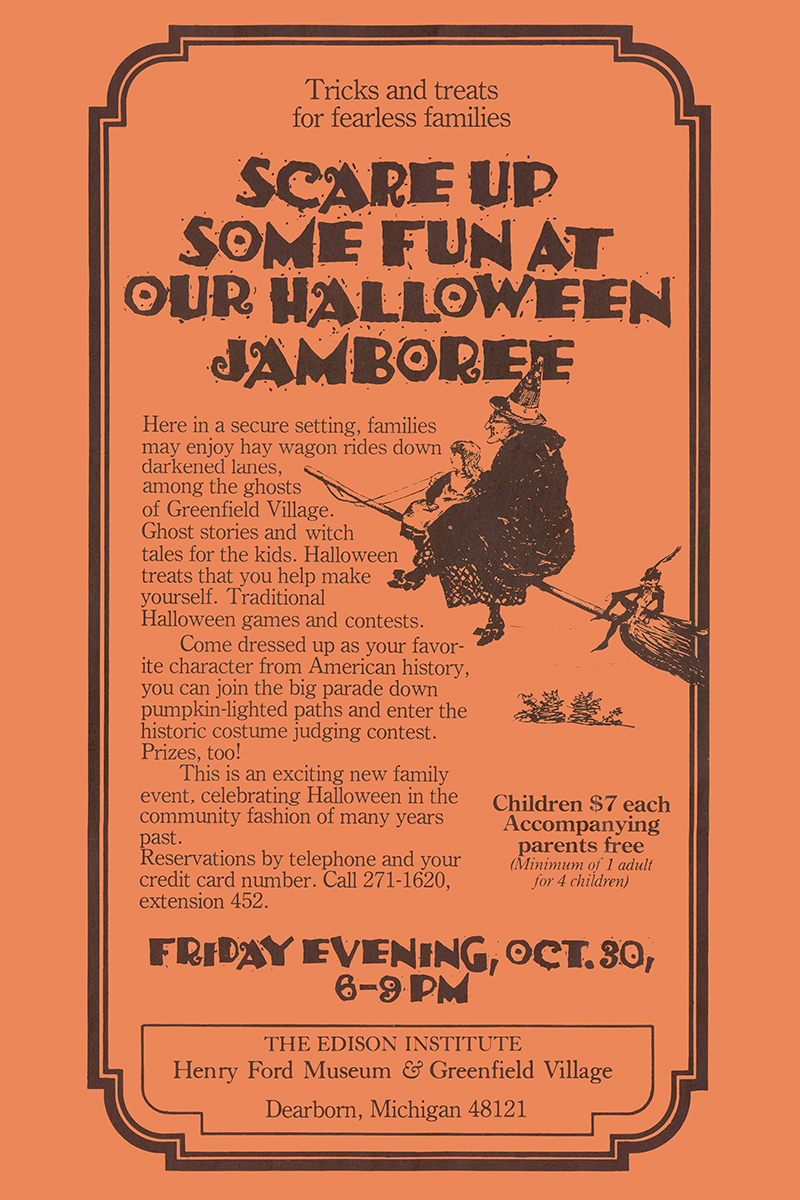
A colorful and enticing flyer for the 1981 Family Halloween Jamboree. (Image courtesy Donna Braden)
From the beginning, the 1981 Family Halloween Jamboree was planned with children in mind—including “hair-raising stories of ghosts and witches,” making Halloween treats, and enjoying a variety of traditional games. In keeping with the focus on the historic nature of Greenfield Village, children were encouraged to come dressed as their favorite historic character, which they would show off in a “parade down a pumpkin-lighted path,” followed by a judged costume contest with prizes. Parents were encouraged to dress up for the night as well. The evening cost $7.00 per child, while accompanying adults were free.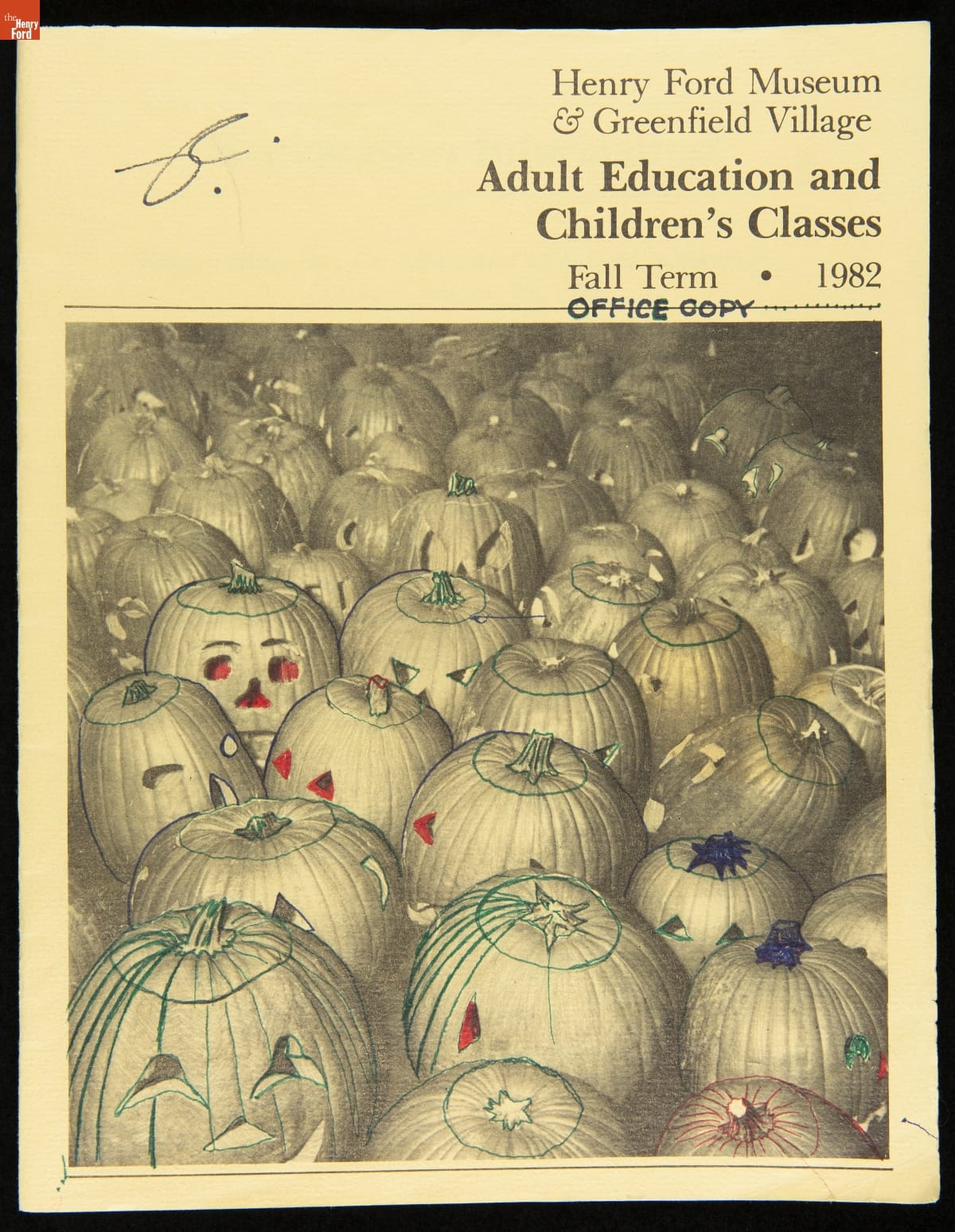
This cover of the 1982 class catalog shows a portion of the 150 jack-o’-lanterns that volunteers had carved for the 1981 Family Halloween Jamboree. / THF610728
Hay wagons took guests on rides from Town Hall through the Covered Bridge, around the loop and back to the Village Green. On the way, they encountered spooky characters, like the Grim Reaper and the Headless Horseman. Back at Town Hall, they could partake of cider and donuts, and bob for apples. A highlight of the evening was that guests could walk to several trick-or-treat stops in and around the Green. White-faced “ghosts” of historical figures connected with Greenfield Village buildings passed out treats that were specifically themed to each building or character. At the Courthouse, it was Lincoln Head pennies; at Stephen Foster Memorial (now the Sounds of America Gallery), VanBochove, as the “ghost” of Stephen Foster, handed out kazoos while singing excerpts of more “ethereal” Stephen Foster songs like “Beautiful Dreamer” and “I Dream of Jeanie with the Light Brown Hair.” Carved jack-o-lanterns, placed at the doorways, marked each treat stop.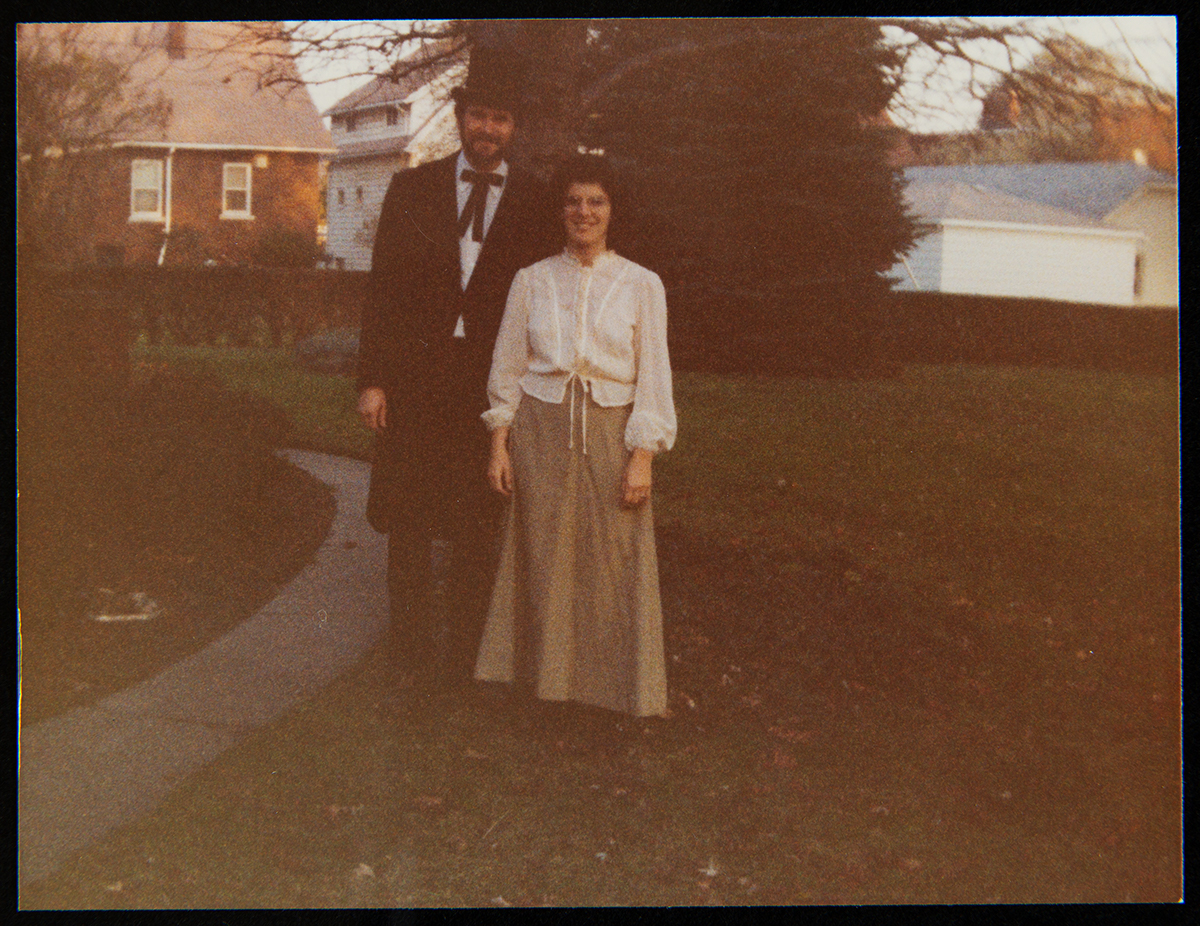
Curt and I pause for a snapshot before heading to the Village for the big evening, 1981. Before the days of a department that researched and created historical clothing for Greenfield Village staff, I did my best to dig out some (rather historically inaccurate) vintage clothing from my own closet to wear for the evening. (Photo courtesy Donna Braden)
This one-night Jamboree attracted some 300 people. As VanBochove recalled, “We all thought that was HUGE. And there were many moving parts so lots of learnings.” Susan McCabe concurred that it was a great way to learn about the logistics of Village experiences, like how to move people through, how many supplies to have on hand, and how to get all those pumpkins carved!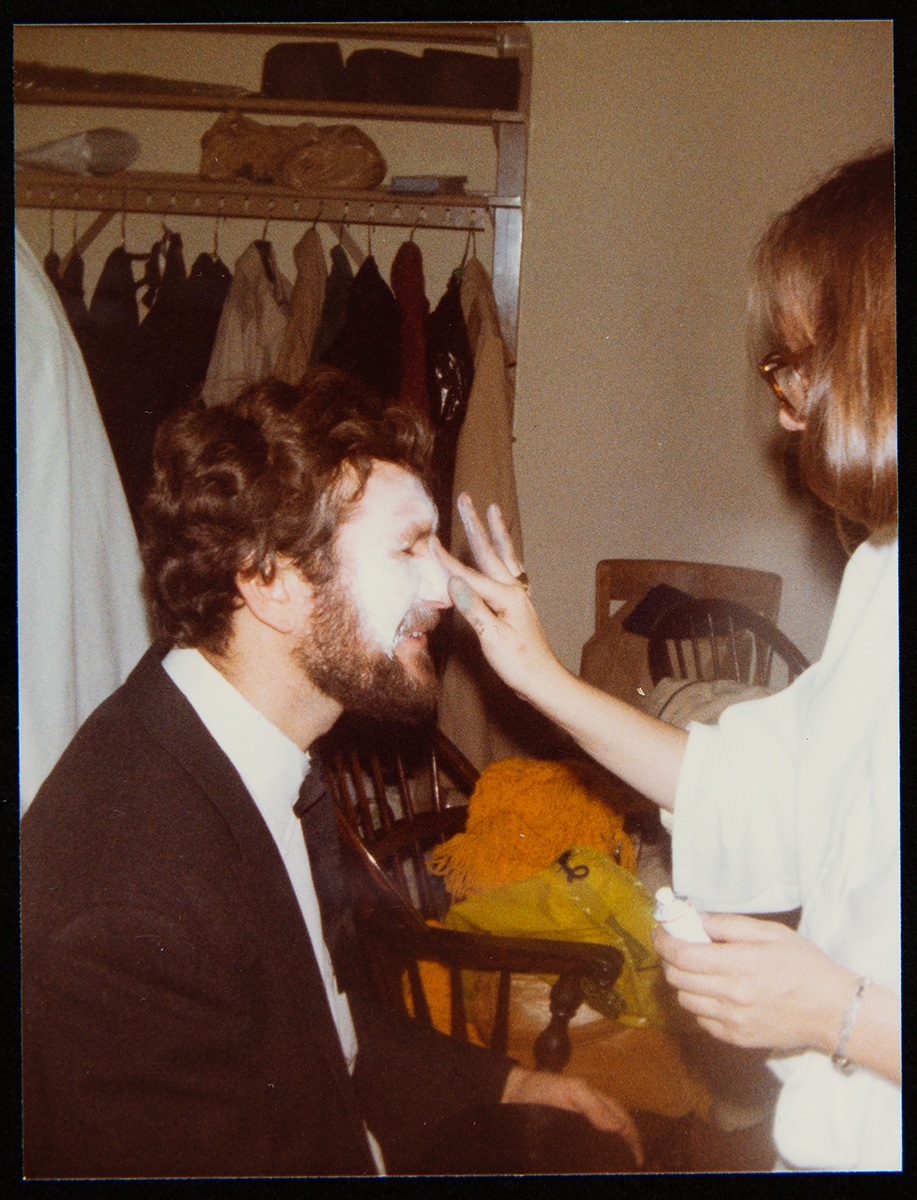
Curt having his white theatrical makeup applied before the big night, 1981. (Photo courtesy Donna Braden)
Building upon the success of this first program, the next year’s program was expanded. Now costing $5.00 per person, it was held on two successive nights. The modest pumpkin-lit path for the children’s costume-judging parade now extended through many of the streets of the Village, with an accompanying map “to tell you the whereabouts of the ghost and spirits we expect to join us.” Candace Matelic remembers that two educational assistants “did nothing all night but keep the pumpkins lit, and there were hundreds of them.”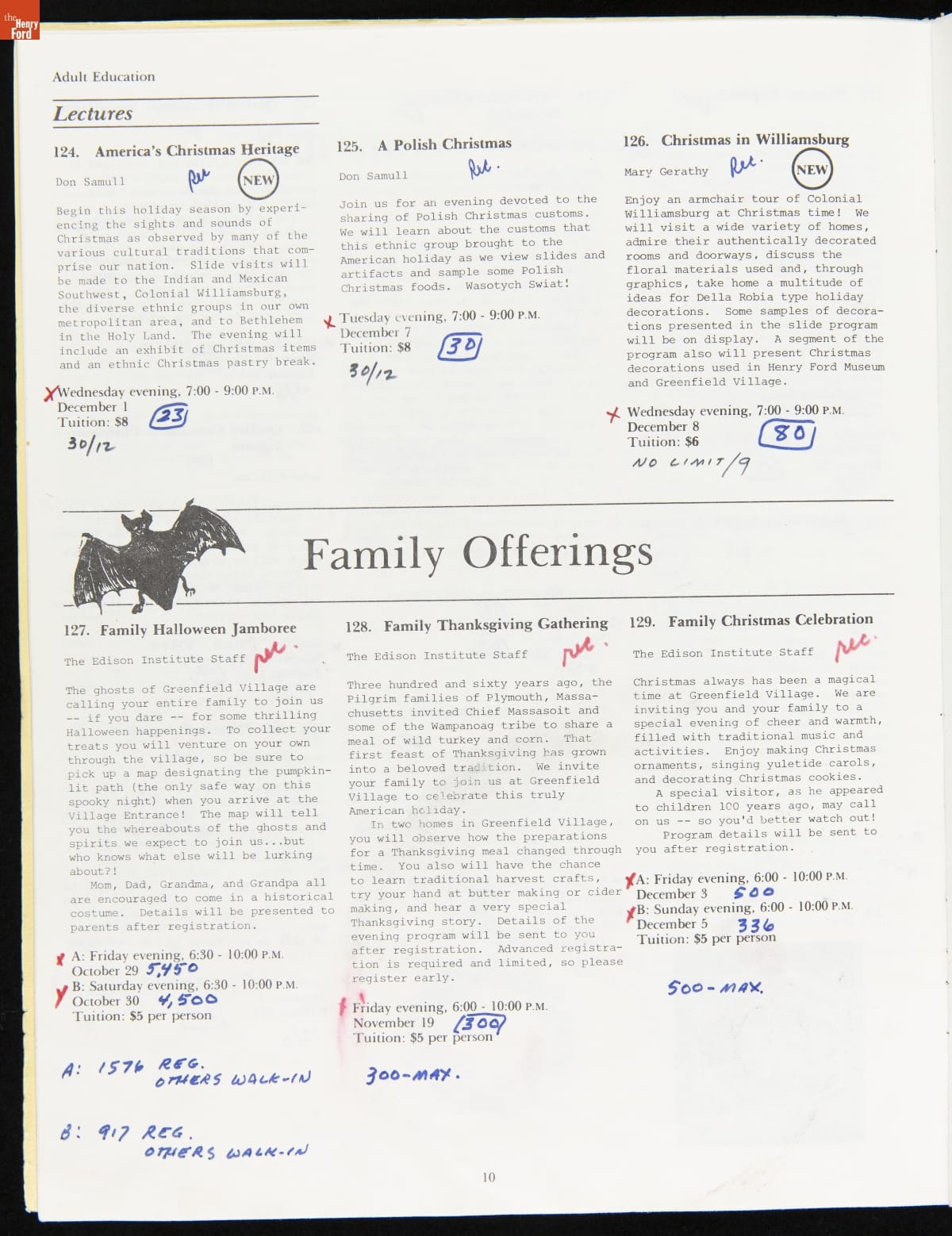
Description of the 1982 Family Halloween Jamboree, explaining the new navigation through the Village by pumpkin-lit paths and a map / THF610735
One goal of these early programs was to attract new audiences, people who did not ordinarily come to Greenfield Village. As Matelic recalls, “We reached people from all backgrounds…many of whom were coming to Greenfield Village for the first time.” It was also a way to attract new Members by offering them first pass at signing up.
The popularity of the 1982 Family Halloween Jamboree was greatly aided by the Tylenol scare of that year, in which cyanide-laced acetaminophen was found placed on drugstore shelves and sold. This high-profile crime eventually led to the introduction of child-proof containers and tough Federal laws aimed at punishing those who tampered with drugs. No evidence of contaminated Halloween candy was ever found that year and, since that time, stories like these have become the stuff of urban legend. But, in 1982, the scare was real, parents were worried about letting their kids go trick-or-treating through neighborhoods, and that year’s Family Halloween Jamboree in Greenfield Village received a big boost in attendance.
Beyond this, Matelic thinks that these early programs were exceptionally unique because, “We clearly touched a chord in providing a safe and memorable family experience in those early years, in response to a community need. I like to think of it as a gift to the community. It was fun, interactive, and welcoming. We had fun and that let visitors have fun. We made a connection to a beloved American tradition and started a new relationship to the community.”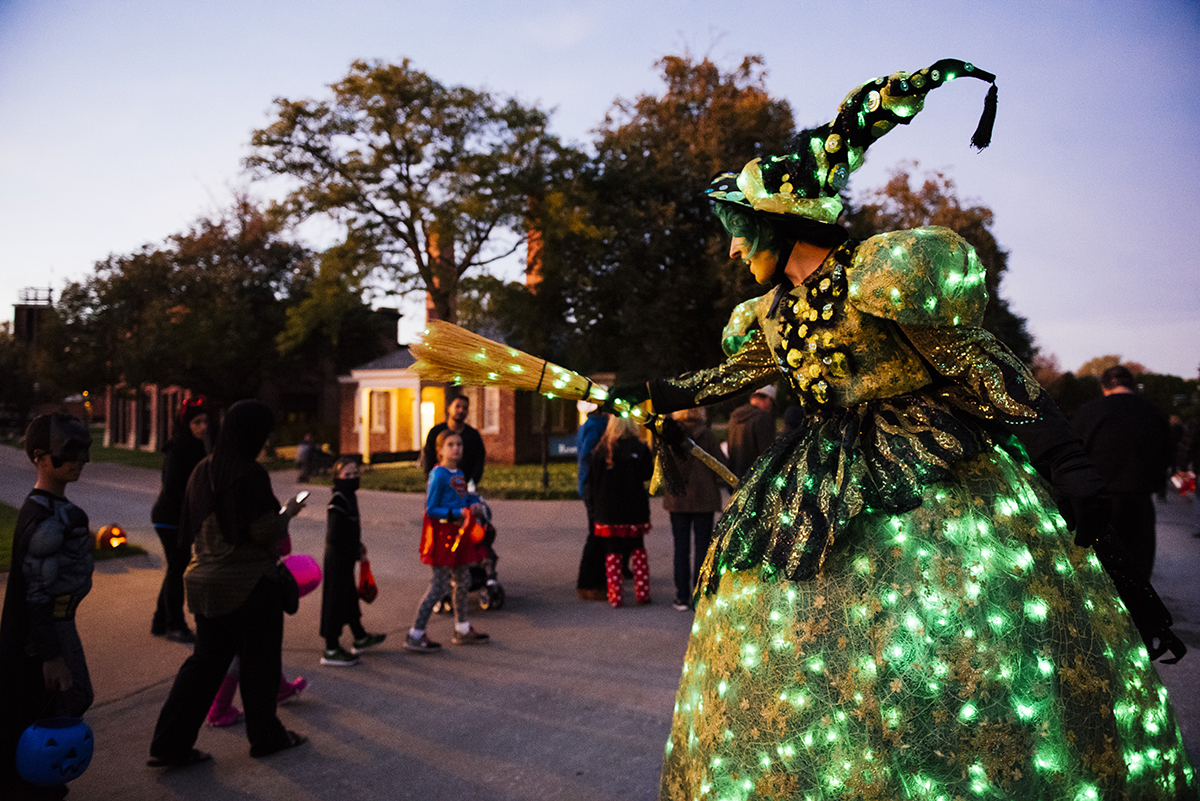
By 2018, the year of this photograph, “Hallowe’en in Greenfield Village” had become a mega-event that lasted 11 nights and attracted 70,000 guests.
These two early programs laid the groundwork for today’s extravaganza that thousands anticipate every year. Why does it remain as popular as ever? Having spent time at many treat stations over the years, VanBochove remarks that, “it has always amazed me that even with the thousands of guests who come on any evening, almost everyone has a sense that the program is just for them, that they are there with family, and that this is a special memory that only we can help create.” Matelic, who has worked at several museums since those early days and mentored hundreds of students pursuing museum careers, reflects that, “While the focus and contents (and size and length) have broadened over the years, the program is still touching hearts and minds, offering an opportunity for generations to continue making cherished family memories.”
Do you have a cherished memory of the 1981 Family Halloween Jamboree in Greenfield Village?
Donna R. Braden, Senior Curator and Curator of Public Life at The Henry Ford, would like to thank Candace Tangorra Matelic, Ph.D., Susan Gangwere McCabe, Jim VanBochove, and Curt Braden for their willingness to share their memories of this groundbreaking program.
Michigan, Dearborn, 20th century, 1980s, holidays, Hallowe'en in Greenfield Village, Halloween, Greenfield Village, events, by Donna R. Braden, #Behind The Scenes @ The Henry Ford
As Senior Curator and Curator of Public Life at The Henry Ford, I’ve worked on many Greenfield Village building makeovers since I started here in the late 1970s. Today I’m going to take you behind the scenes to five of my favorites.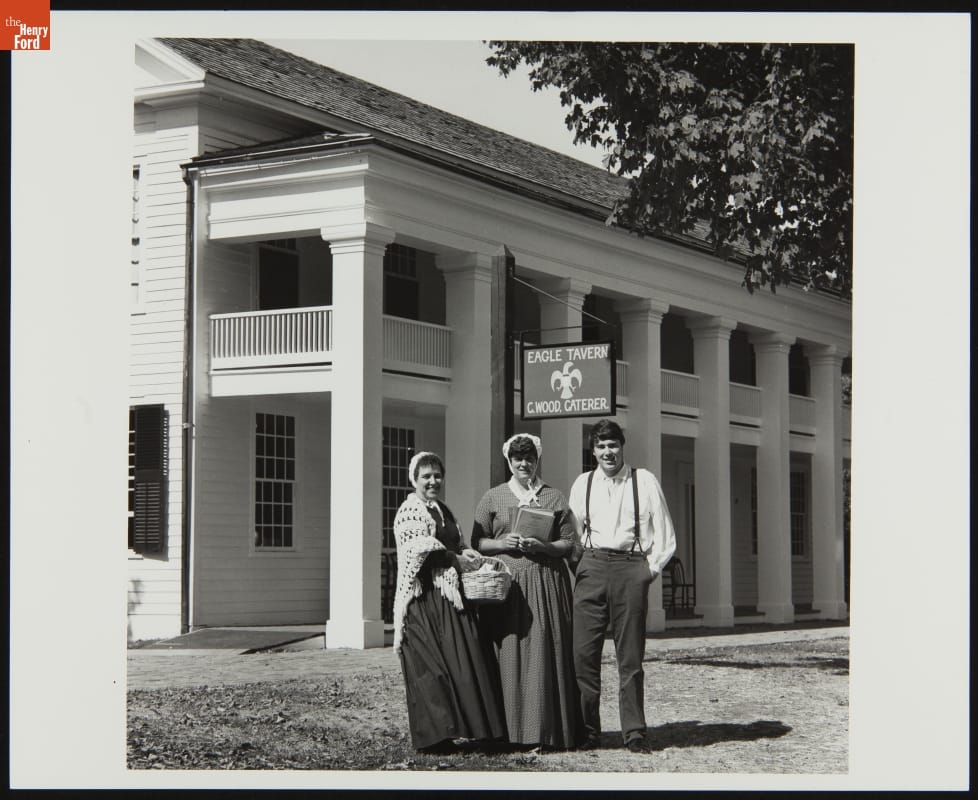
THF237357 / Historical Presenters outside Eagle Tavern in Greenfield Village, circa 1982
The 1980s and 1990s were an exciting time here, as we upgraded many Village buildings that had long been unchanged. The history and presentations of many of them were inaccurate, like the presenter outfit and penny candy in this general store image of 1965.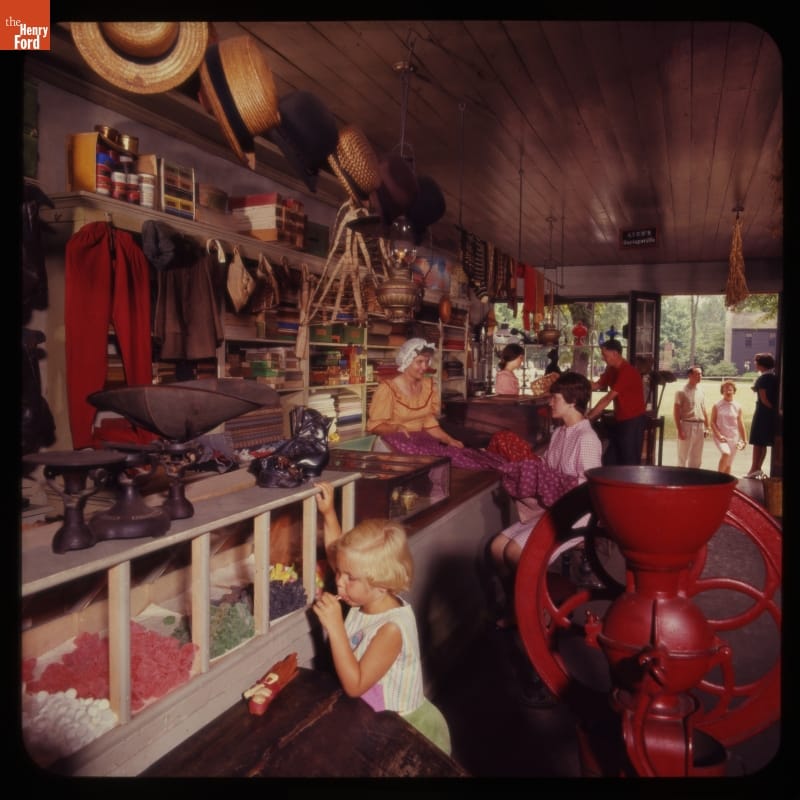
THF126771 / Historical Presenter and Visitors in the General Store, Greenfield Village, 1965 / Photographed by Philippe Halsman
We looked at sources that many historians used—probate records, census records, local newspapers, old photos (like this one of Firestone Farm). These helped us uncover more accurate stories about the people who had lived and worked in these buildings.
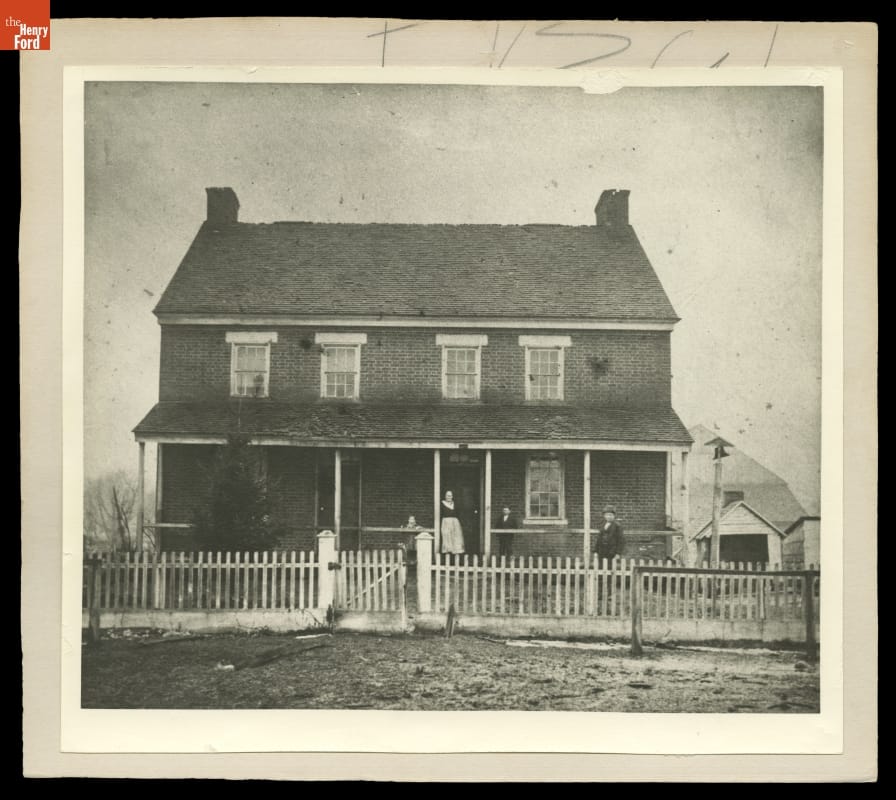
THF115221 / Firestone Farmhouse at Its Original Site, Columbiana, Ohio, circa 1876, Robert, Harvey and Elmer with Grandmother Sally Anne Firestone
Eagle Tavern, constructed in the 1830s, was one of the first buildings we tackled. In 1927, Henry Ford found this by-then-dilapidated building (see photo) in Clinton, Michigan, brought it to Greenfield Village, and located it on the Village Green.
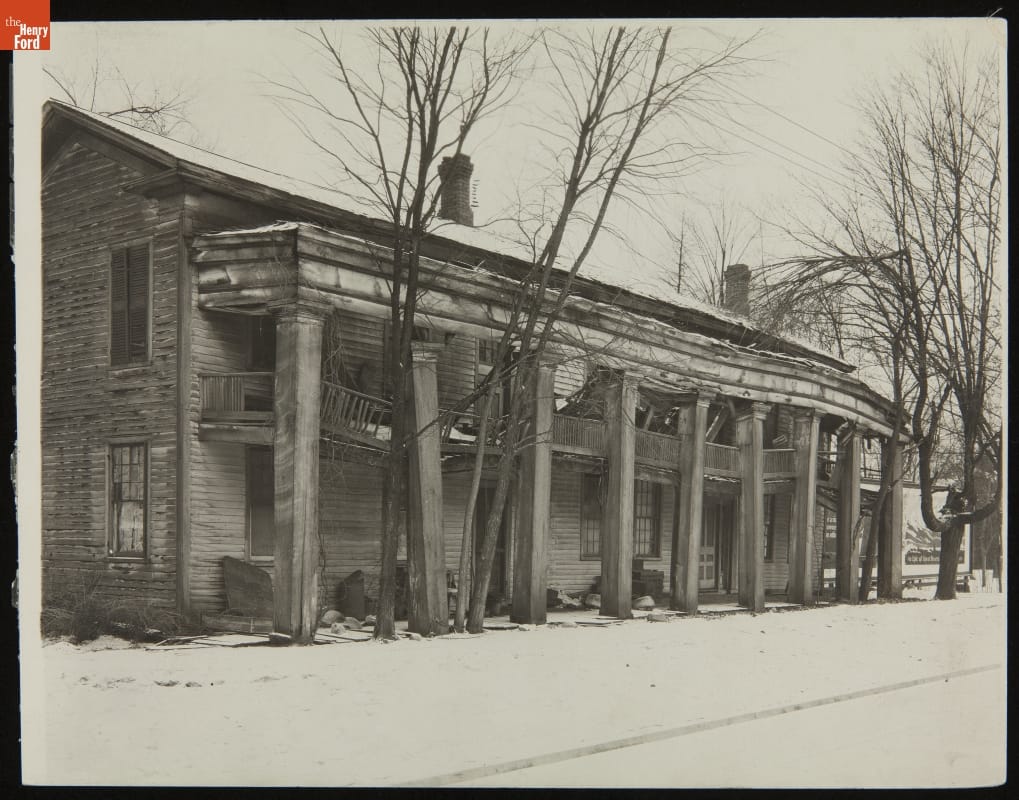
THF237252 / Eagle Tavern at Its Original Site, Clinton, Michigan, 1925
Ford enlarged the back of the building to use as a student cafeteria for his Edison Institute schools. You can see the addition behind the carriages lined up for tours, which left from here when the Village first opened to the public in the 1930s.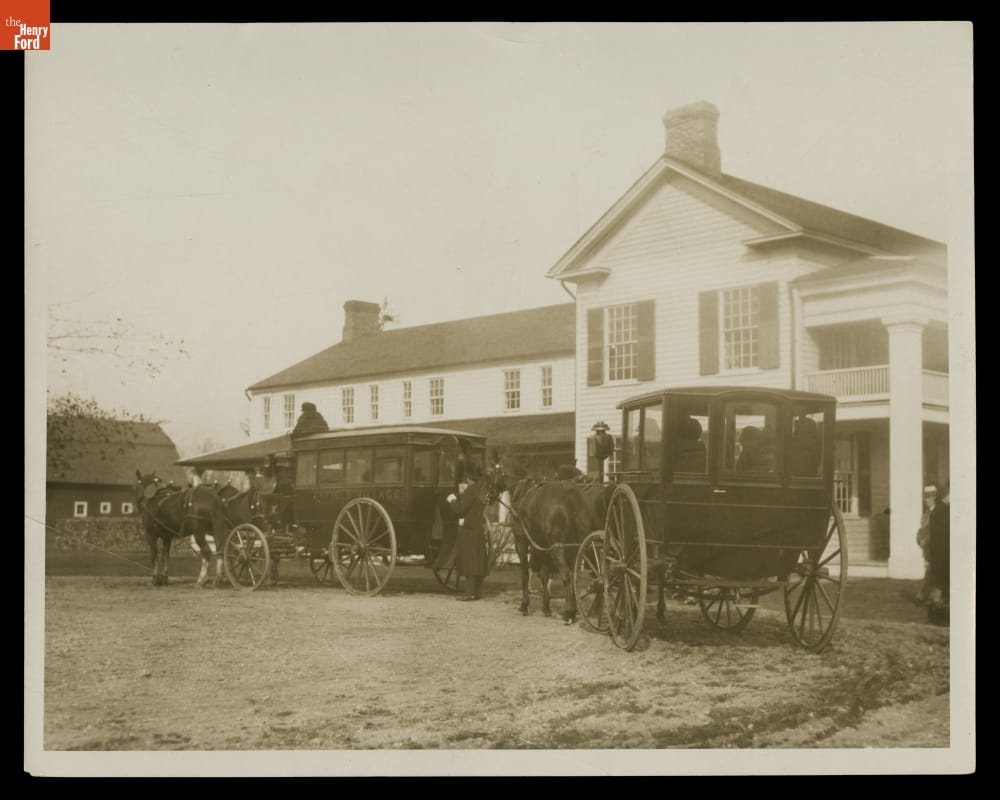
THF120768 / Horse-Drawn Carriages outside Clinton Inn (now Eagle Tavern), Greenfield Village, 1929-1950
When I started working at the museum in 1977, Clinton Inn was still a cafeteria, but for visitors. Here’s a photo of visitors lunching there back in 1958.
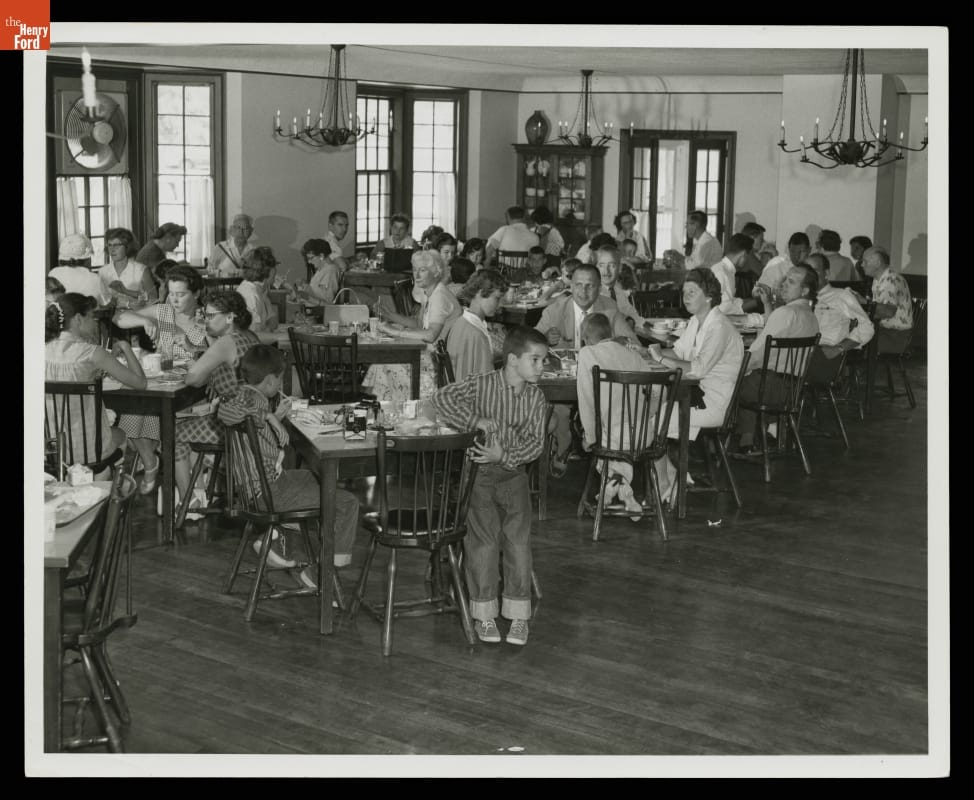
THF123749 / Visitors Lunching at the Clinton Inn (now Eagle Tavern), Greenfield Village, 1958
The so-called “colonial kitchen” was also used for fireplace cooking classes as part of the museum’s Adult Education Program. I took several of these classes back then—but, alas, I don’t seem to be in this particular photograph!
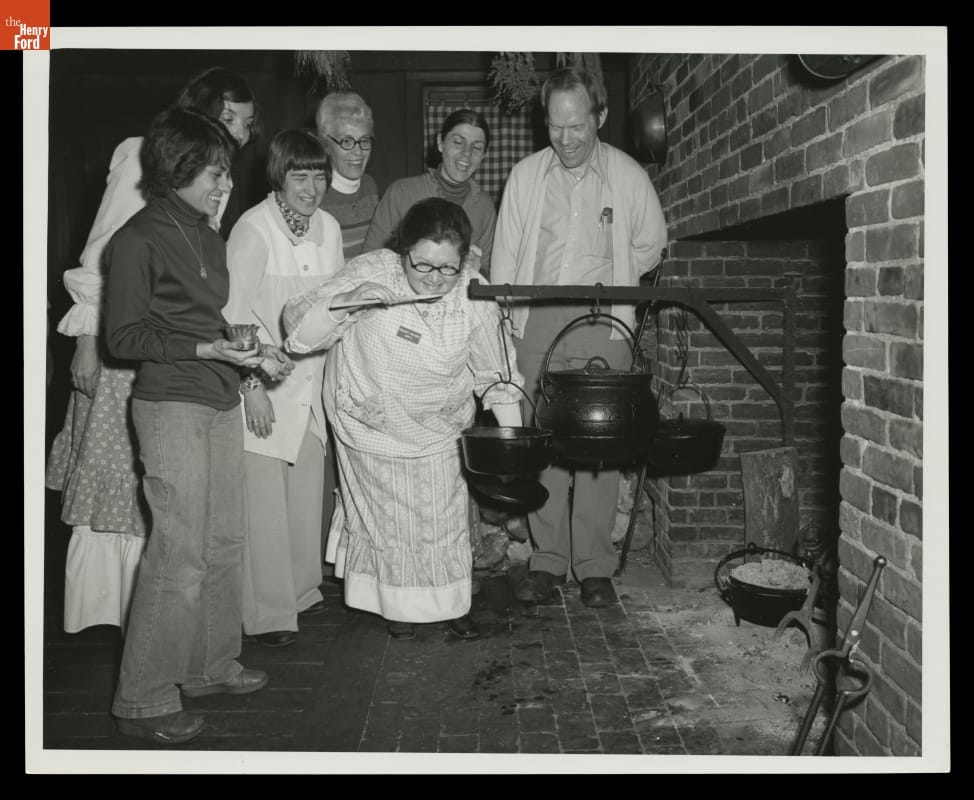
THF112256 / Colonial Cooking Class Held at Clinton Inn (now Eagle Tavern) in Greenfield Village, 1978
In 1981, I joined a new Food Committee, to better align our food offerings with our overall interpretation. We proposed turning this historic building into a sit-down restaurant with period food and drink. Our idea was accepted, and we got to work.
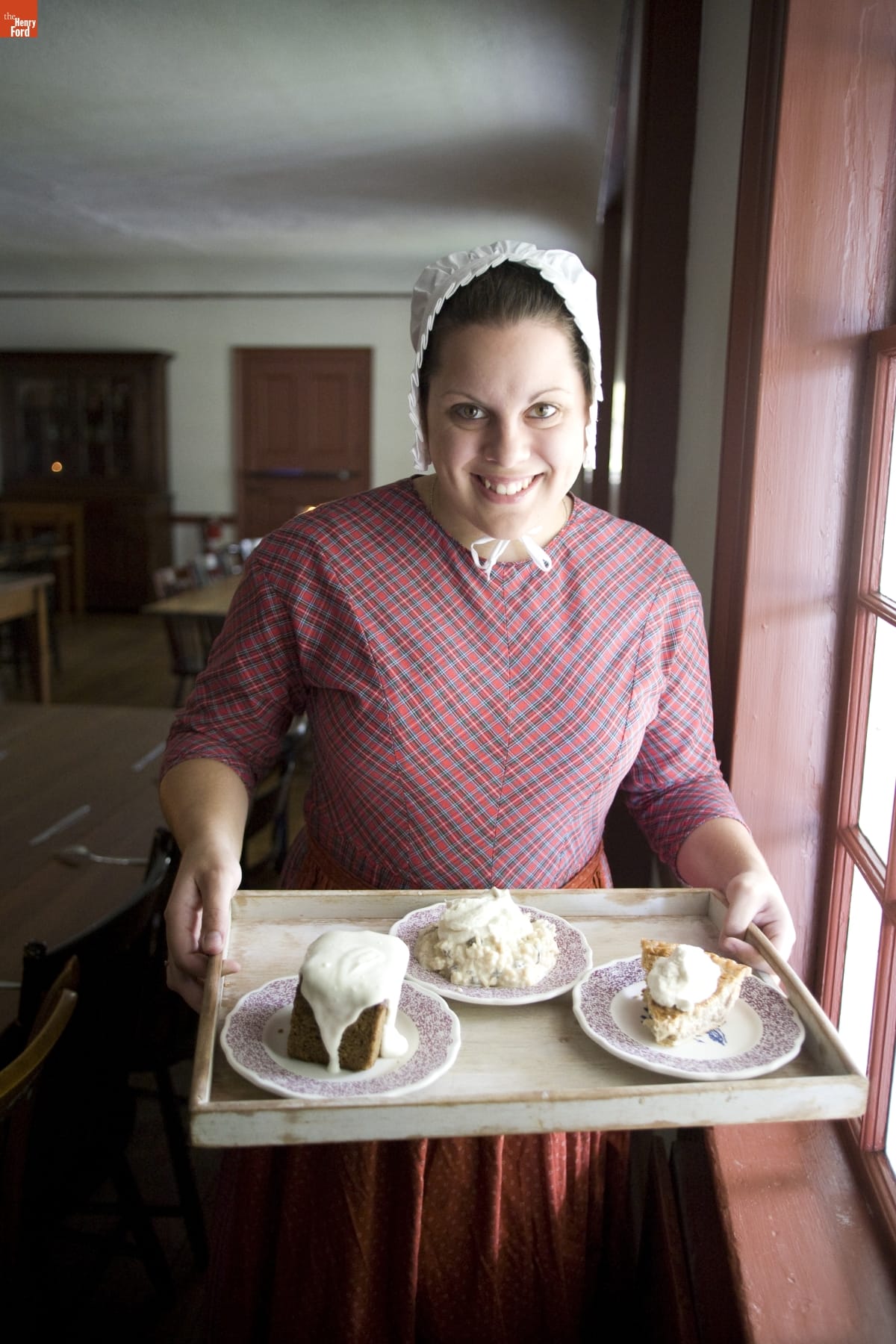
THF54290 / Server at Eagle Tavern in Greenfield Village, October 2007 / Photographed by Michelle Andonian
Delving into historical research, we settled on the year 1850 for interpreting the building’s role as a roadside way-station and community hangout (like this 1855 print). In 1850, the place was called Eagle Tavern, run by a farmer named Calvin Wood.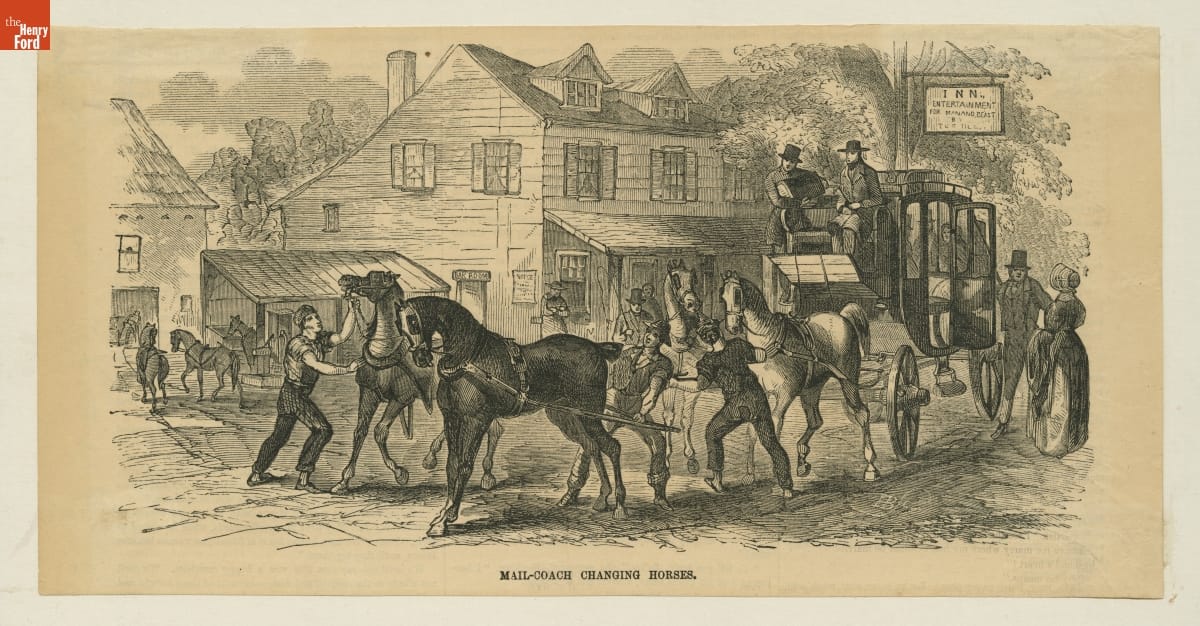
THF120729 / Mail Coaches Changing Horses at a New England Tavern, 1855
To find out what and how people ate at that time, I looked at travelers’ accounts, etiquette books, and historic cookbooks. The chefs tested historic recipes. We sampled them to create each seasonal menu—like this, one of our first “Bills of Fare.”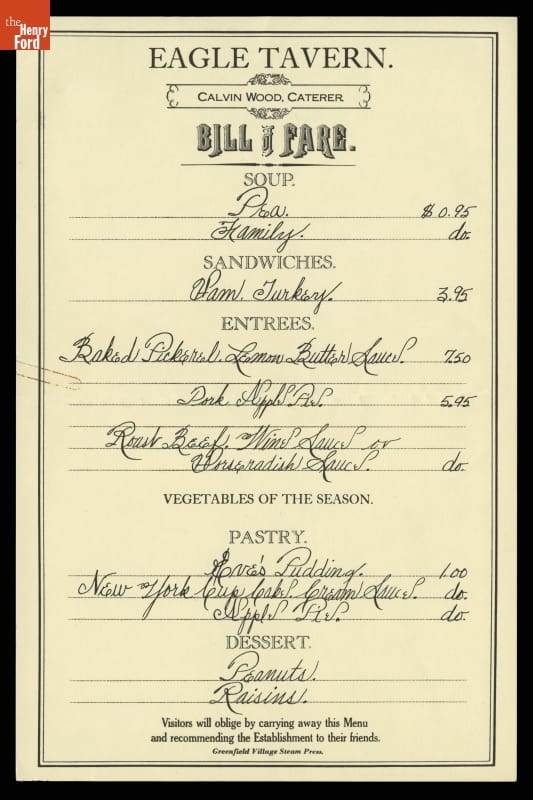
THF123845 / Menu from Eagle Tavern, Greenfield Village, 1982, "Bill of Fare"
Eagle Tavern opened in April 1982, with staff dressed in some of the Village’s first-ever historically accurate clothing. This photo, taken when our dream of establishing a historic restaurant became a reality, still fills me with pride! (You can find more content related to Eagle Tavern on The Henry Ford’s Innovation Nation episode page and YouTube clip.)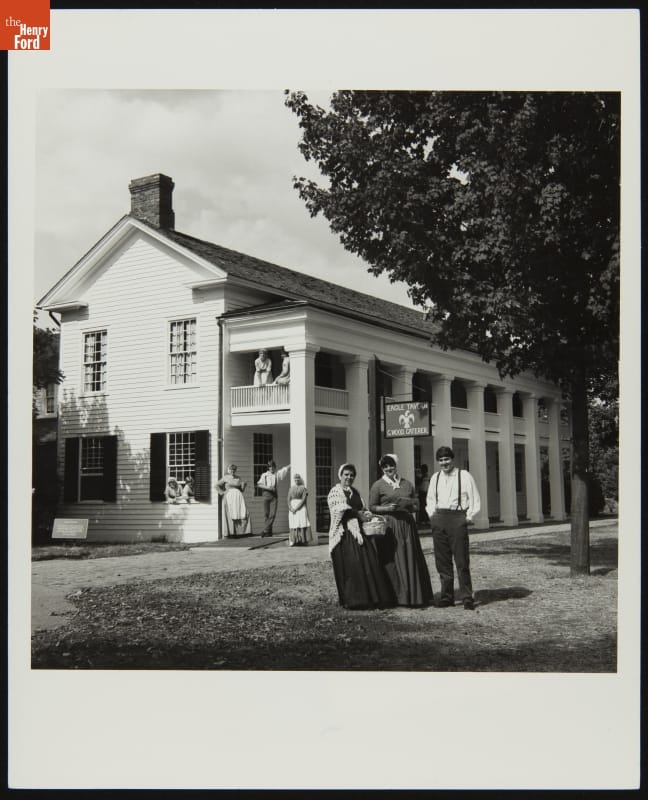
THF237355 / Historical Presenters outside Eagle Tavern in Greenfield Village, 1983
When I started at The Henry Ford in Summer 1977, the far end of Greenfield Village was undergoing a big change. The 18th-century Connecticut home of antiques collector Mary Dana Wells had just arrived and was being rebuilt using hand construction methods.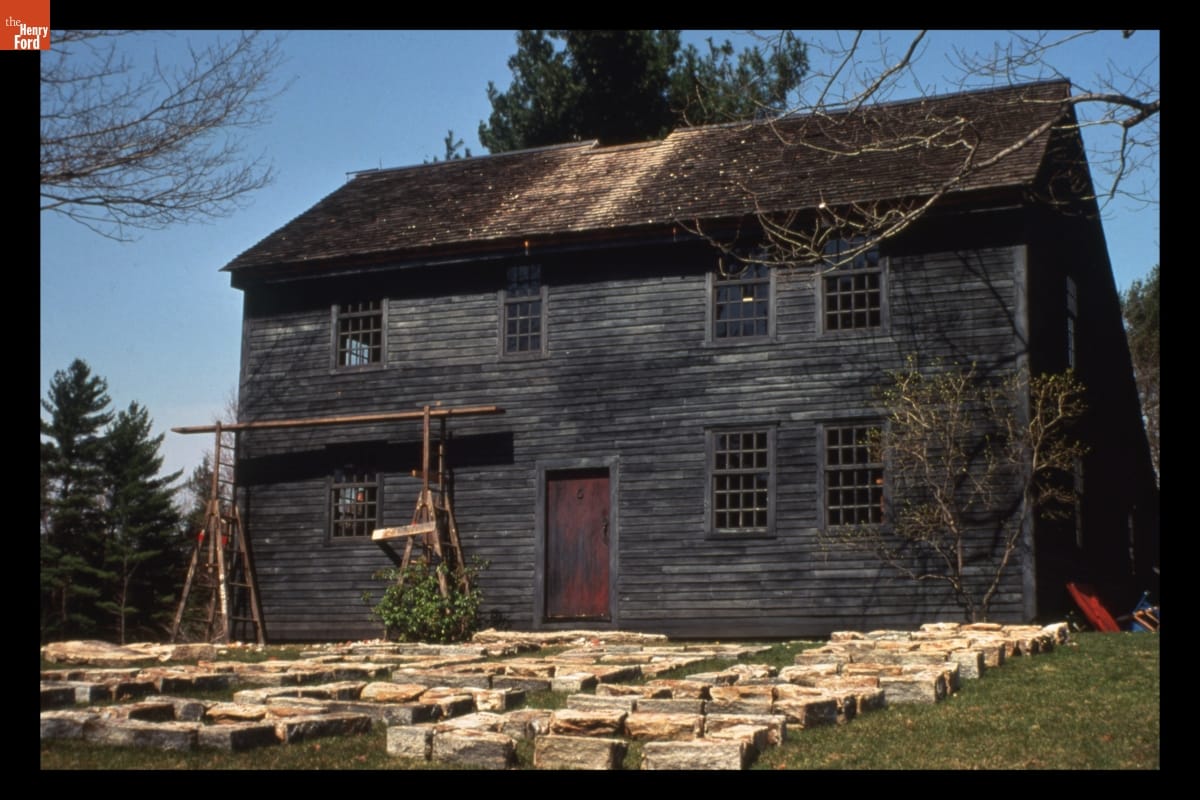
THF133332 / Daggett Farmhouse in Greenfield Village, circa 1978
The building was initially called the Saltbox House (an antiquarian’s term referencing its shape, as seen in this photo before the home was moved). Indeed, the early focus here was on interpreting the architecture and Mrs. Wells’ rare antique furniture.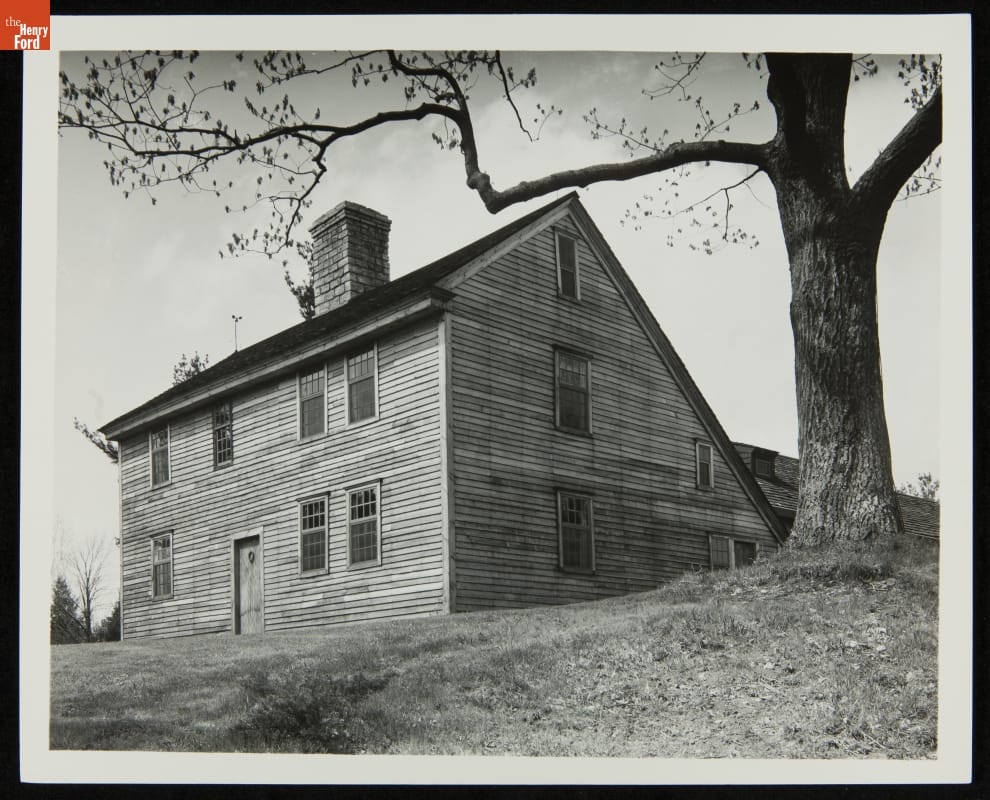
THF236282 / Daggett Farm House--Earlier Site, Exterior--Item 33
Now that you’ve seen the colonial “saltbox” shape of the exterior, here’s an interior shot of Mrs. Wells’ antiques when she lived there.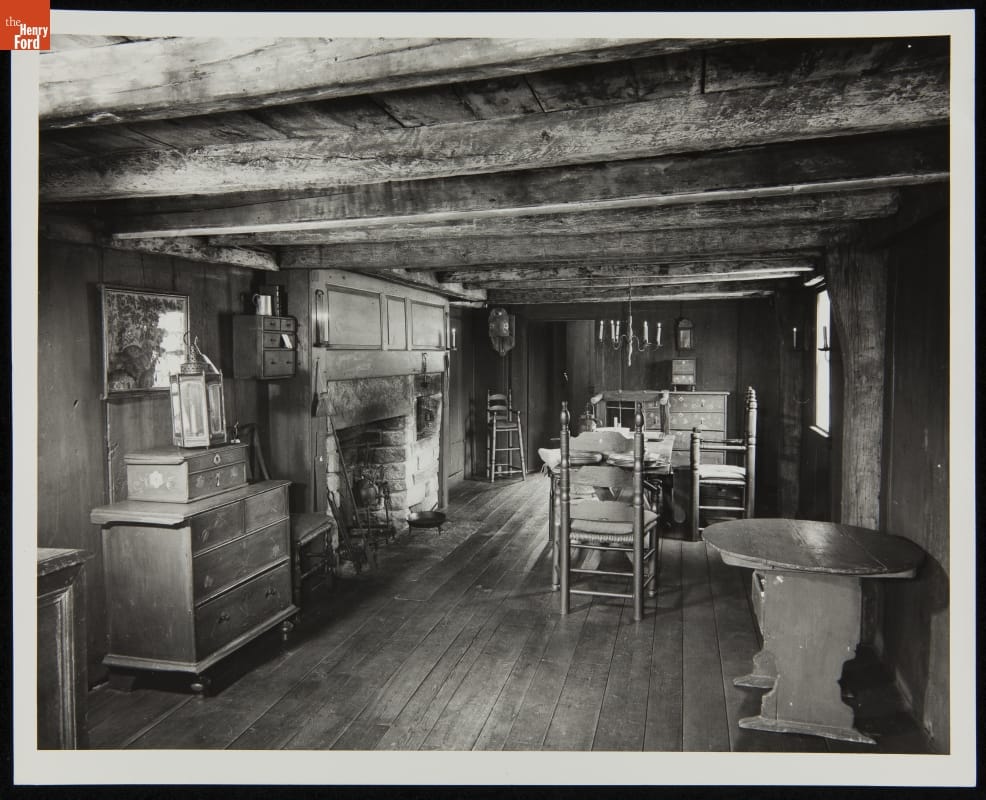
THF236130 / Daggett Farm House at Its Earlier Site, Union, Connecticut, 1951-1977
In 1981, I joined an interdepartmental task force to enliven Village buildings. At the Saltbox House, we decided to highlight colonial-era household activities. The house soon came alive with the sights and sounds of cooking, cleaning, and spinning wool.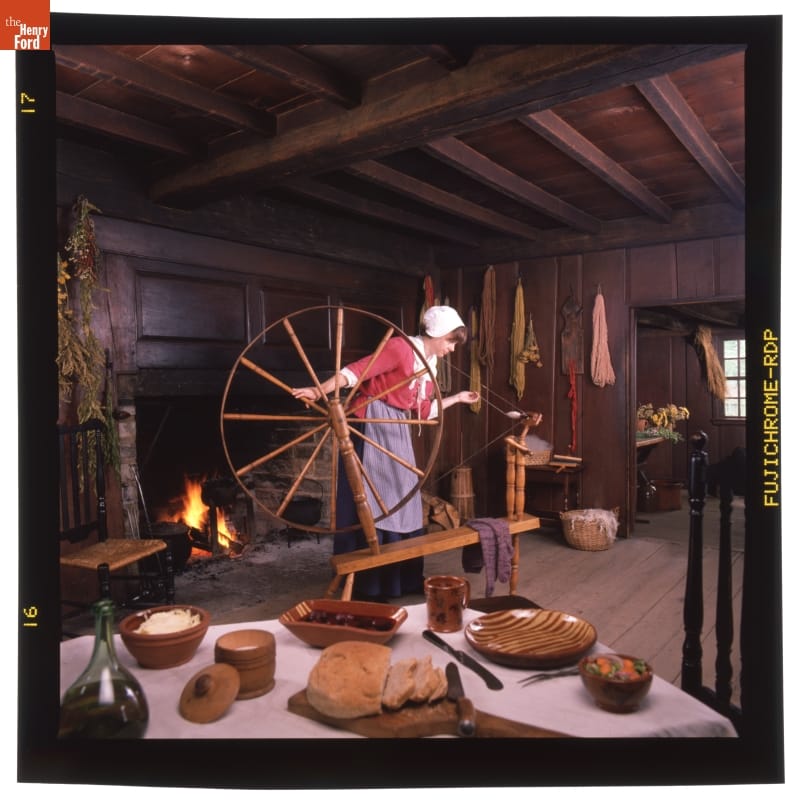
THF136883 / Activities Inside the Connecticut Salt Box House (now Daggett Farmhouse) in Greenfield Village, 1989
Meanwhile, our research revealed that a family named the Daggetts had lived there during the 1760s, the period of our interpretation. From Samuel Daggett’s rare account book, we could reconstruct what the Daggett family did at their farm during that time.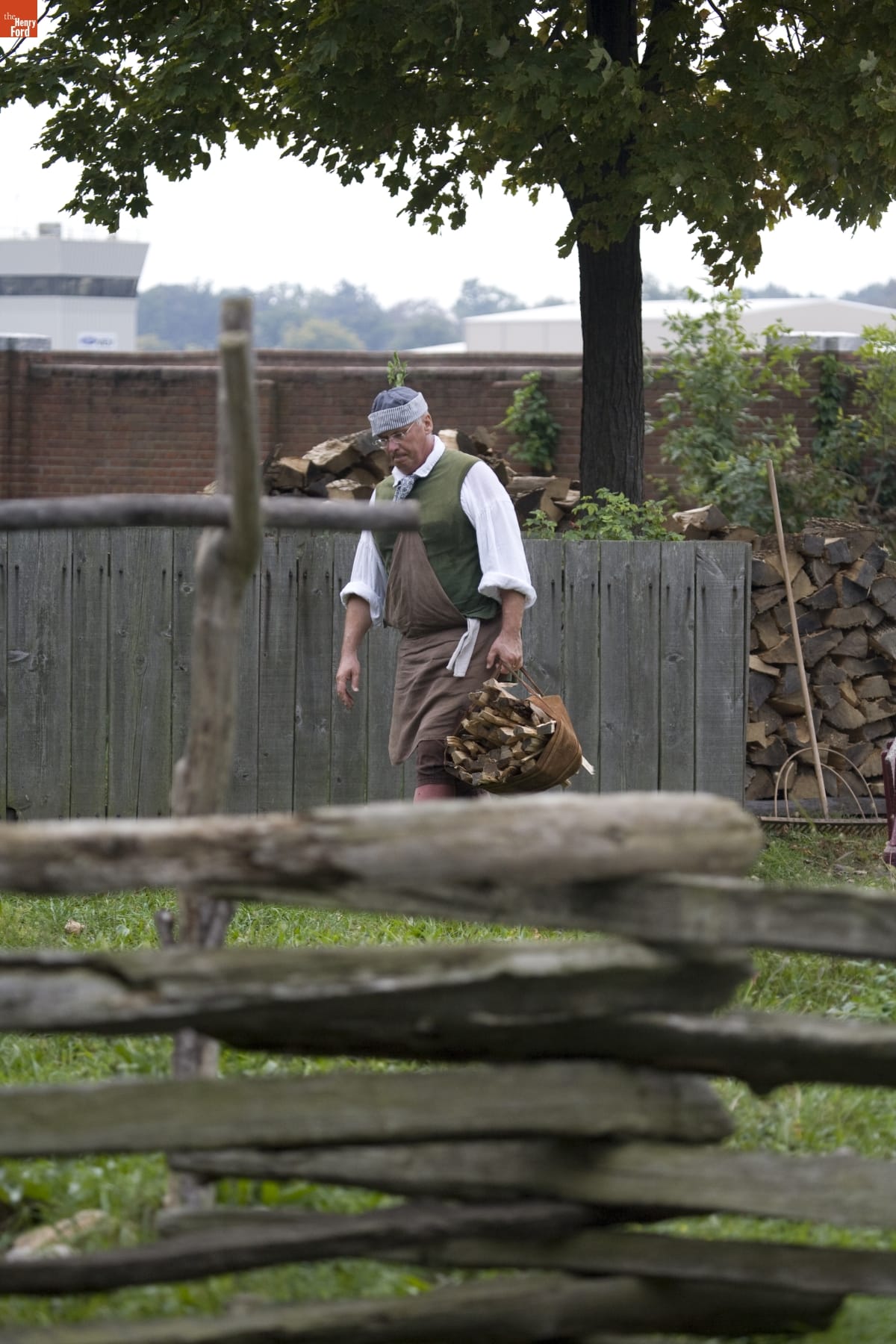
THF54170 / Presenter Working at Daggett Farmhouse in Greenfield Village, October 2007 / Photographed by Michelle Andonian
Over time, the interpretation at the house moved from simple demonstrations of domestic activities to a more accurate recreation of the lives and livelihood of the Daggett family. Eventually, the house was renamed the Daggett Farmhouse.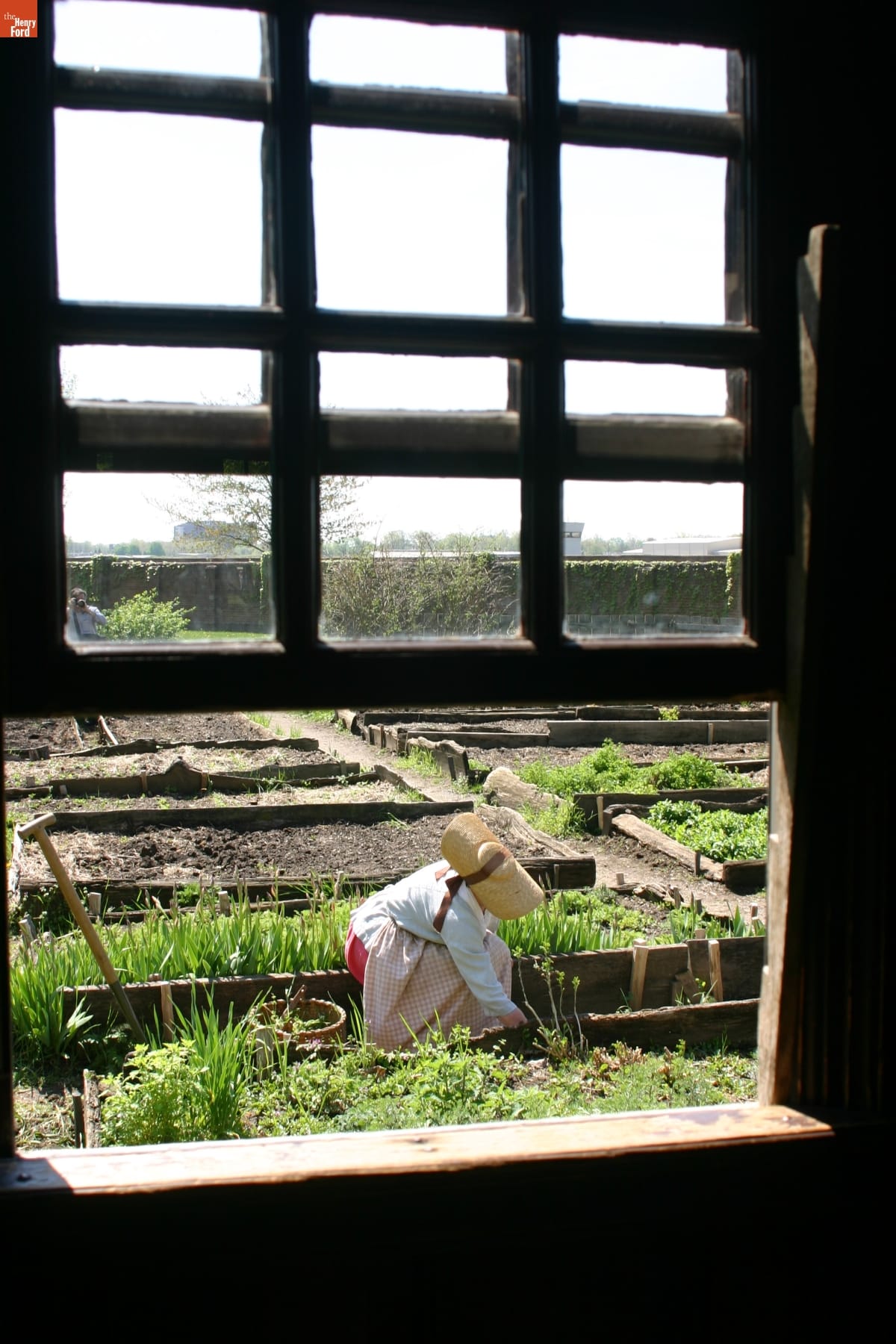
THF16439 / Presenter Working at Daggett Farmhouse in Greenfield Village, April 2006
I think of Firestone Farm as our greatest building makeover and I was involved with it from the beginning. In 1983, the museum was first offered Harvey Firestone’s boyhood home, located in Columbiana, Ohio. Here’s a 1965 photo of it on its original site.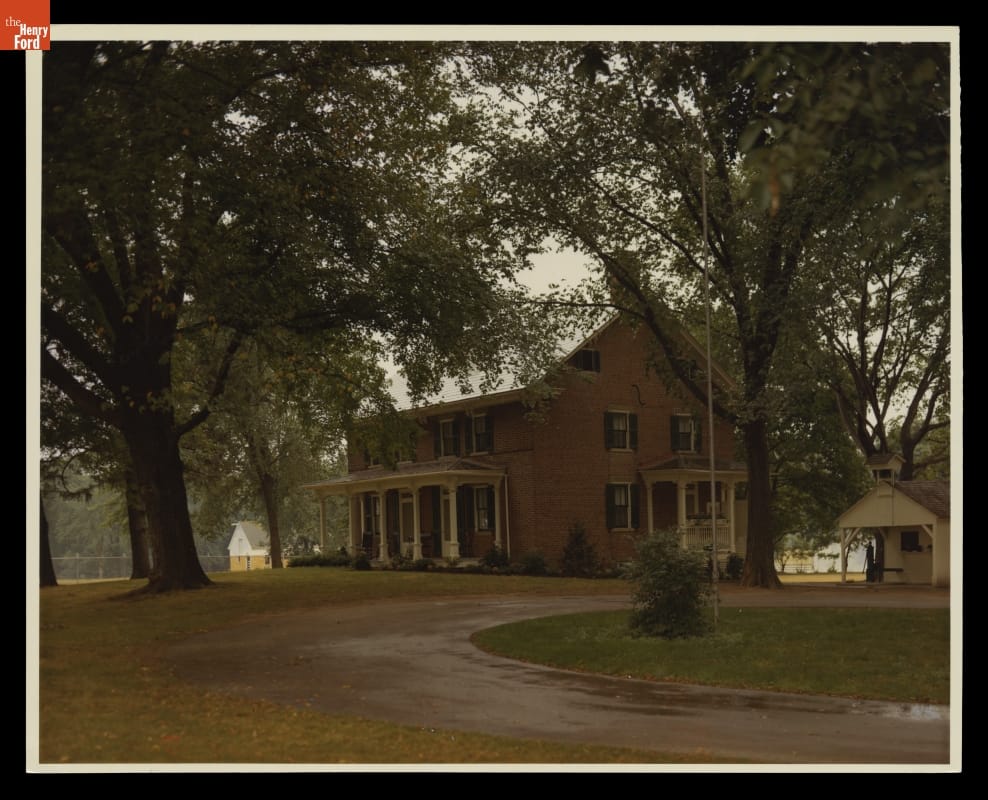
THF115233 / Firestone Farmhouse at Its Original Site, Columbiana, Ohio, 1965
Henry Ford and Harvey Firestone became friends, business associates, and members of a small group called the “Vagabonds,” who traveled around and went camping together. Ford often visited the Firestone family homestead in Columbiana, Ohio.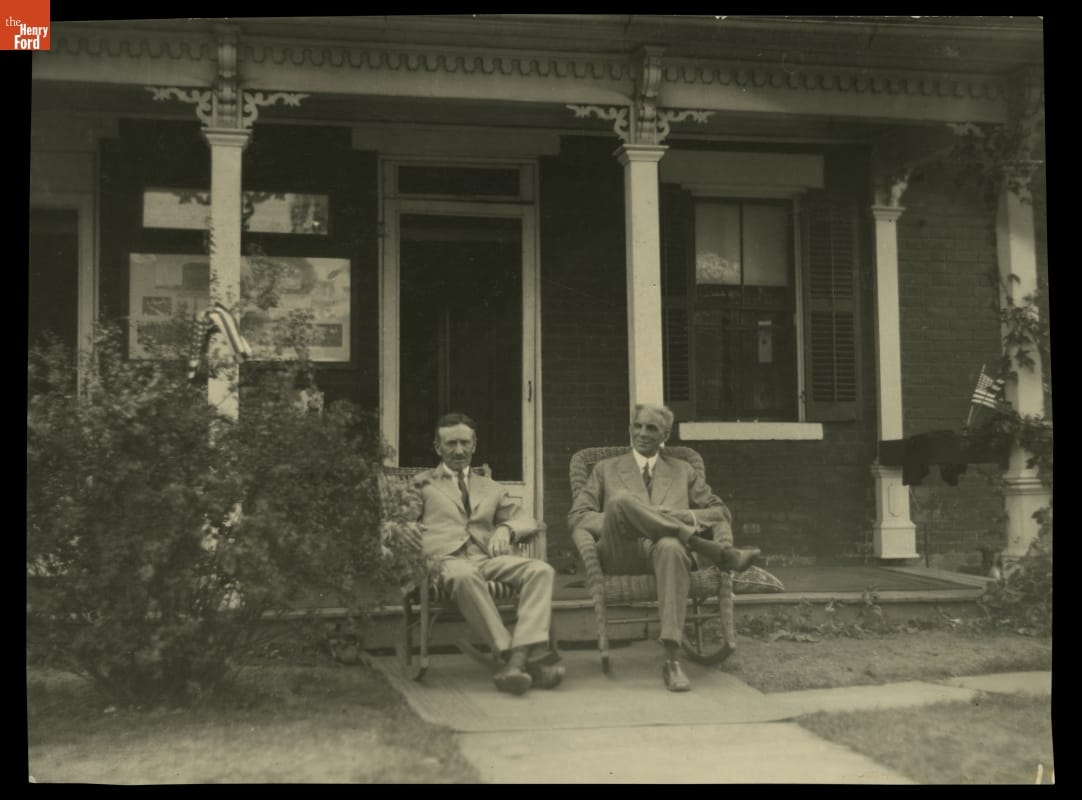
THF124714 / Harvey Firestone and Henry Ford at Firestone Farm, Columbiana, Ohio, 1918
Curator of Agriculture Peter Cousins (shown on the right here) proposed that this farmhouse become the nucleus for a year-round, authentically recreated “living history” farm. He was instrumental in thoroughly documenting the farmhouse and barn.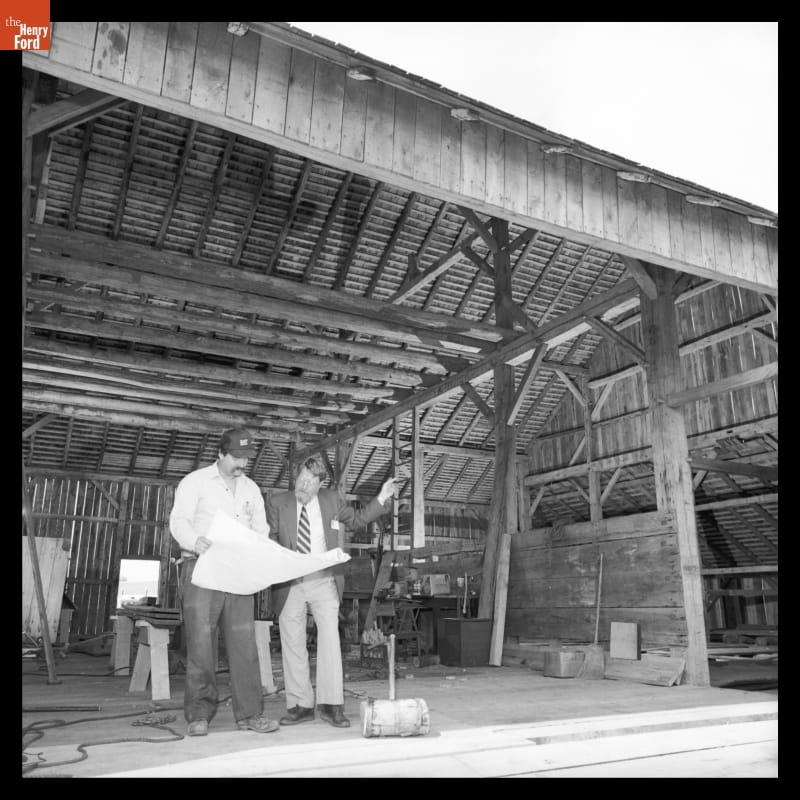
THF138464 / Construction at Firestone Farm in Greenfield Village, May 1985
Meticulous research went into furnishing the farmhouse rooms. This dim black-and-white photo of a corner of the parlor from 1898 provided important clues to how this room looked when Harvey’s parents, Benjamin and Catherine Firestone, ran the farm.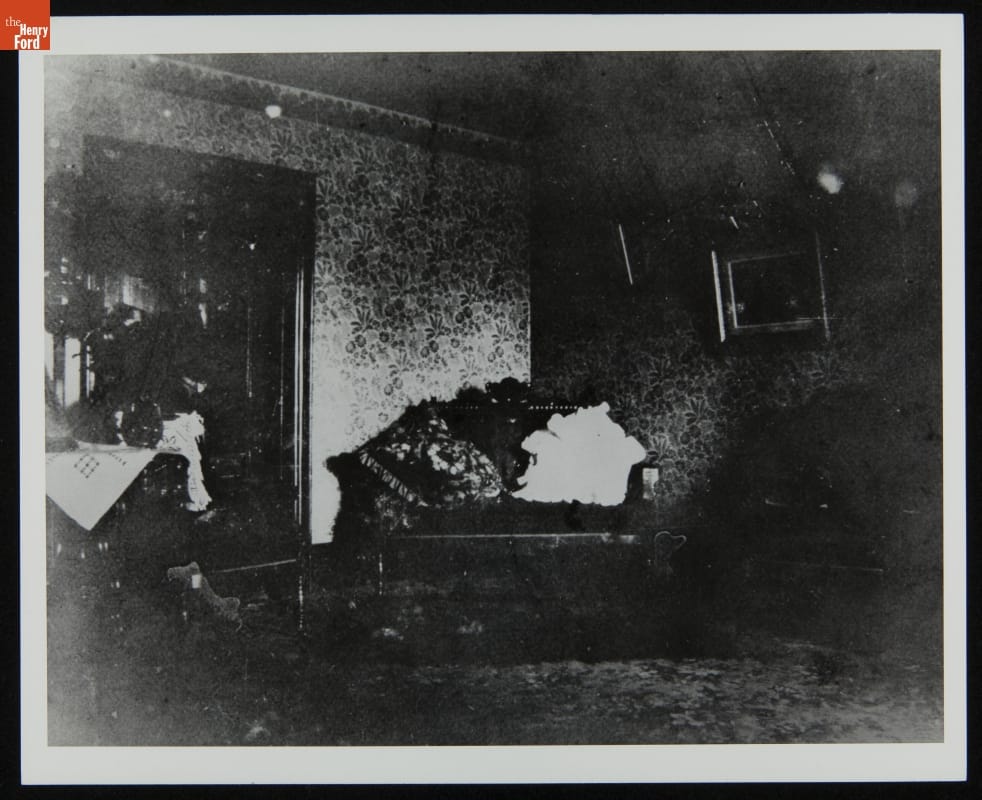
THF242498 / Firestone Farm--Original Site--Interior--Parlor--Item 8
Based upon that photo, other photos of parlors of the period, and actual furnishings from that era, here is how that corner of the parlor was reconstructed when the farmhouse was reconstructed in Greenfield Village.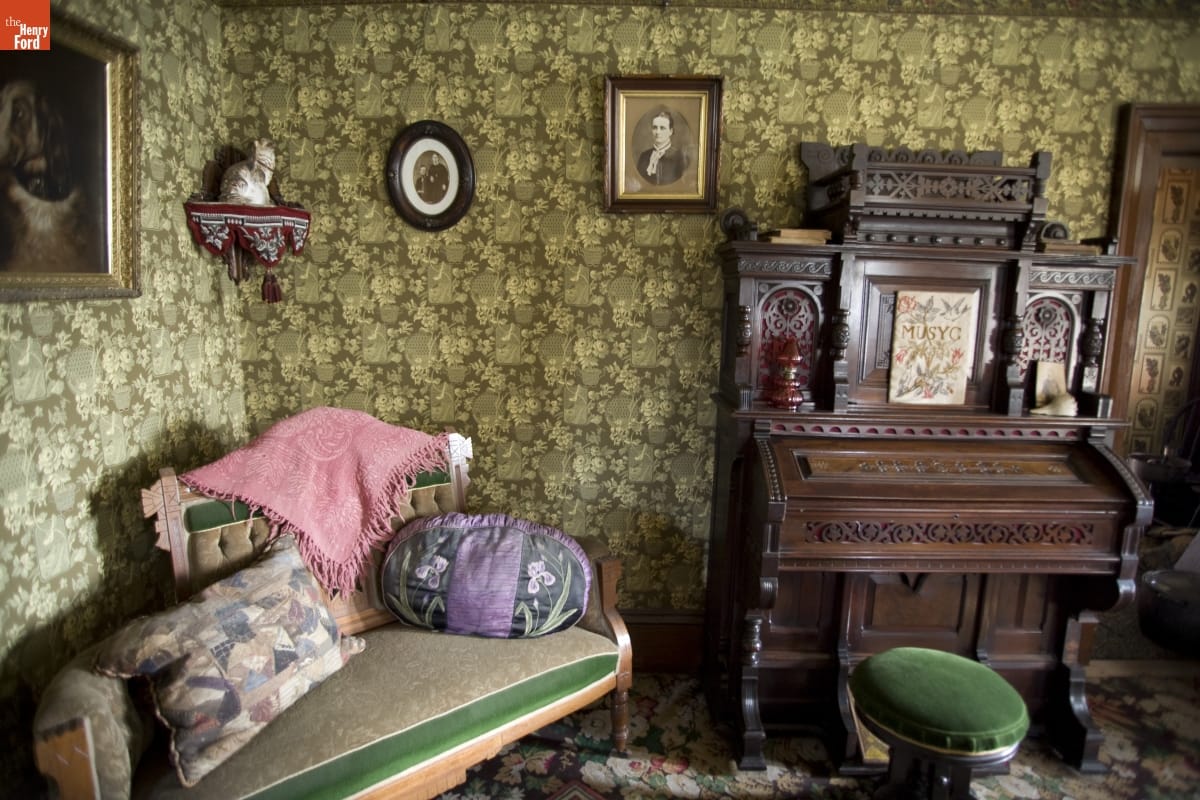
THF53032 / Firestone Farm in Greenfield Village, September 2007 / Photographed by Michelle Andonian
My task was researching the cooking and other domestic activities and supplying the appropriate equipment for the kitchen and pantry. Here’s a glimpse at what that kitchen came to look like later, with presenters getting the midday meal on the table.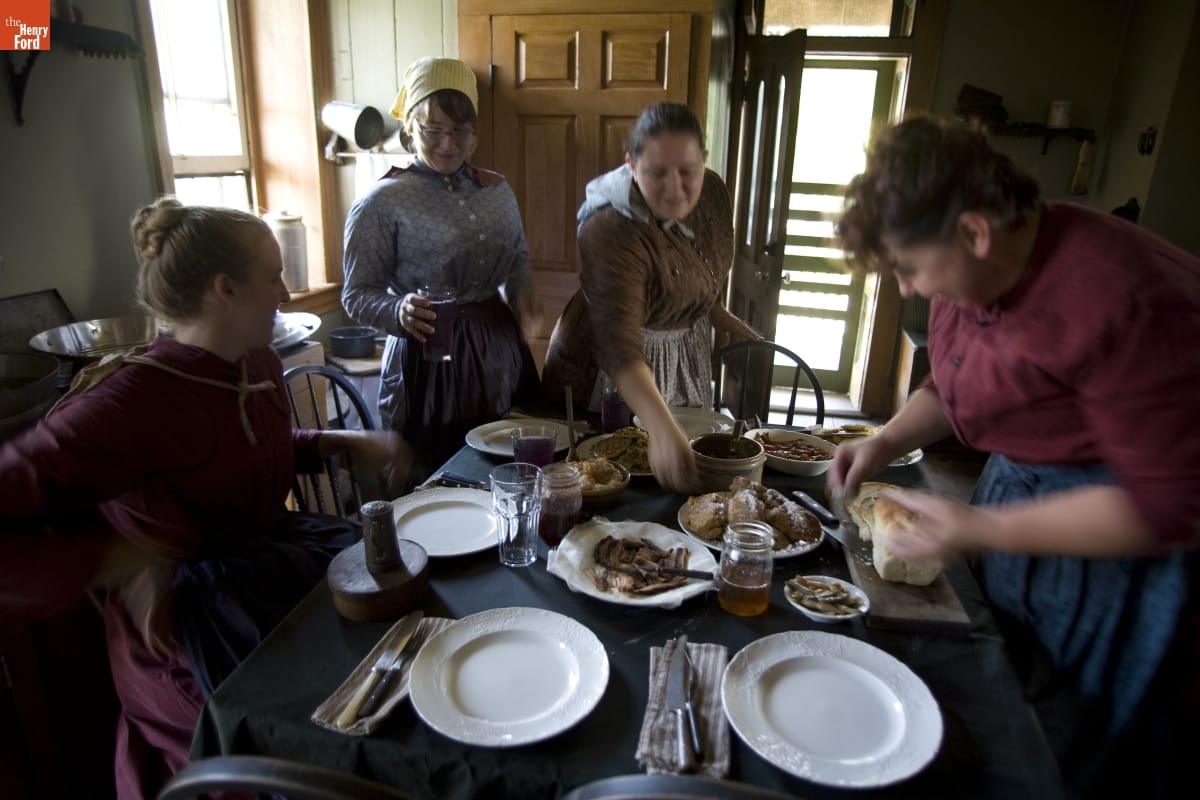
THF53126 / Presenters Working at Firestone Farm in Greenfield Village, September 2007 / Photographed by Michelle Andonian
In June 1985, Firestone Farm was officially “reborn” in Greenfield Village. Here’s a photo of the dedication, with President Gerald Ford speaking. (You can find more content about Firestone Farm on The Henry Ford’s Innovation Nation’s episode page and YouTube clip.)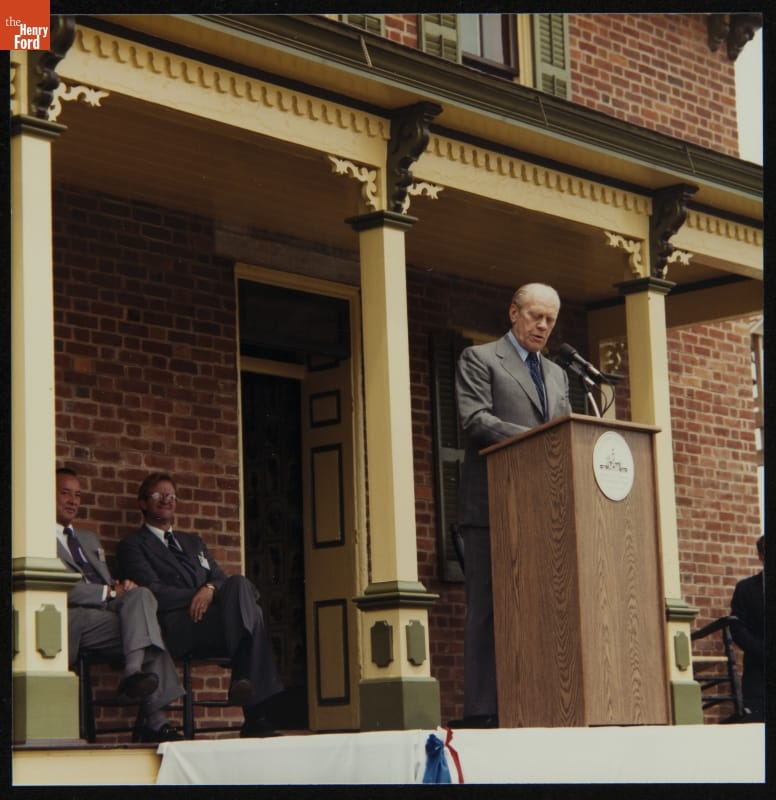
THF242136 / Firestone Farm--Dedication--Item 32
New research in the early 1990s revealed that this rural Georgia home in Greenfield Village had housed several generations of the Mattox family—an African American family who, through determination and hard work, owned and maintained their home and land.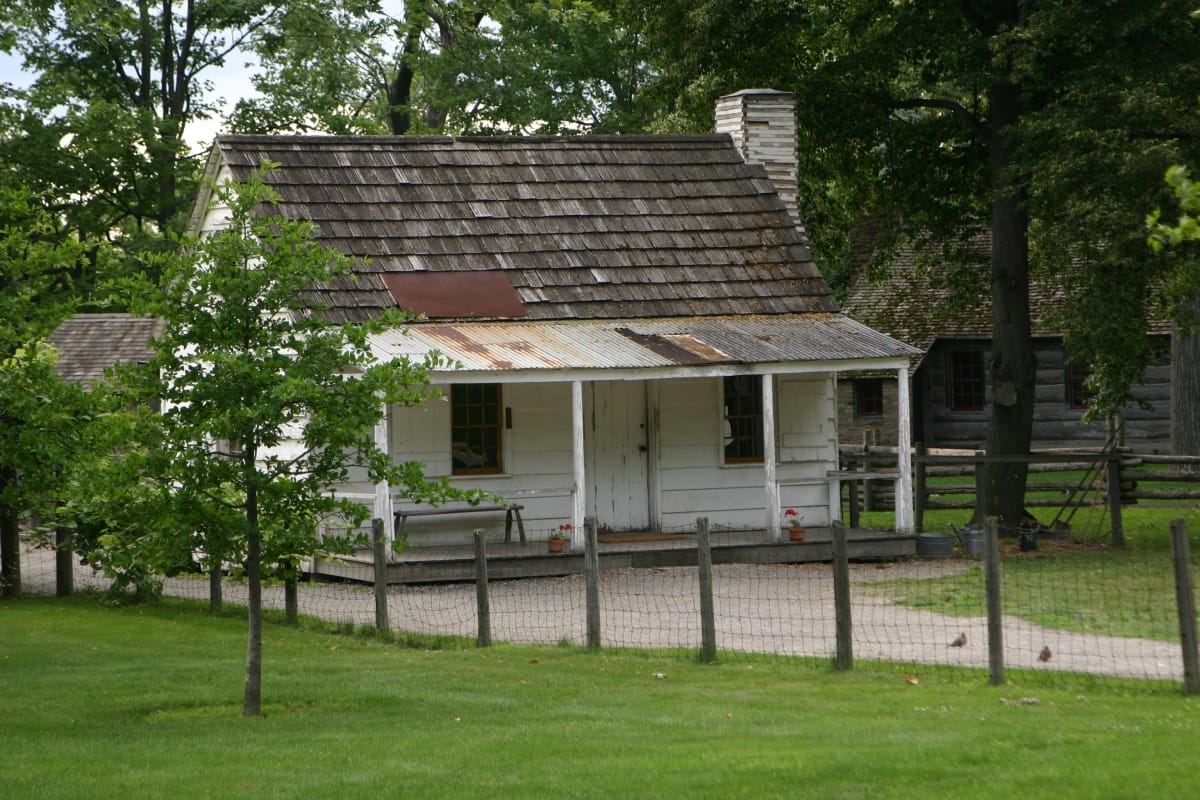
THF68734 / Mattox Family Home
Reopened in 1991, the Mattox House depicts the 1930s era, when Amos (shown here, ca. 1910) and Grace Mattox—descended from enslaved African Americans—raised their two children. Life was hard but the family proudly affirmed that there was “always enough.”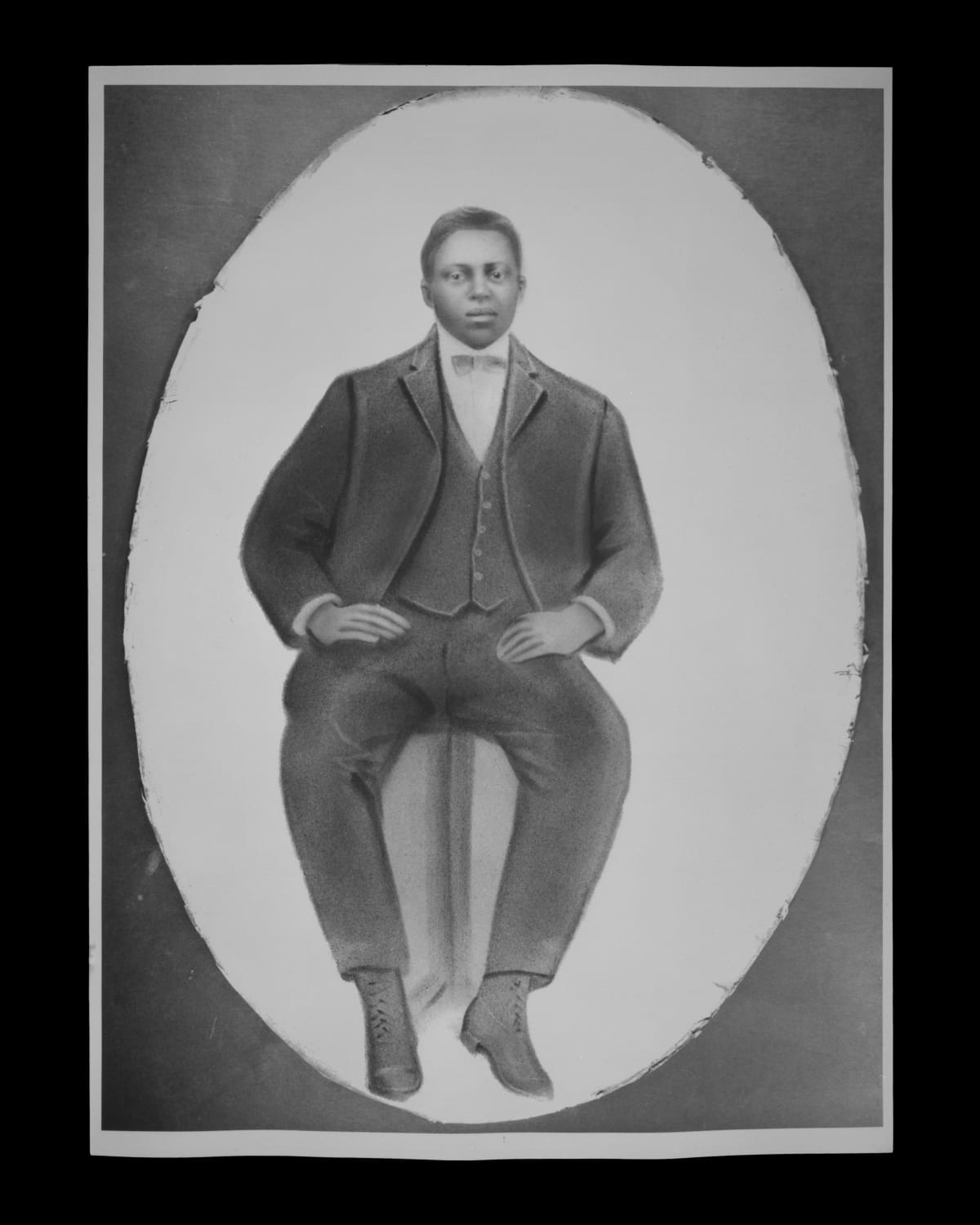
THF135142 / Portrait of Amos Mattox
My primary job here was to furnish the kitchen and prepare the space for cooking programs. I used many of the great oral histories that the project team had initially collected, gleaning information about the Mattox family’s cooking and eating habits.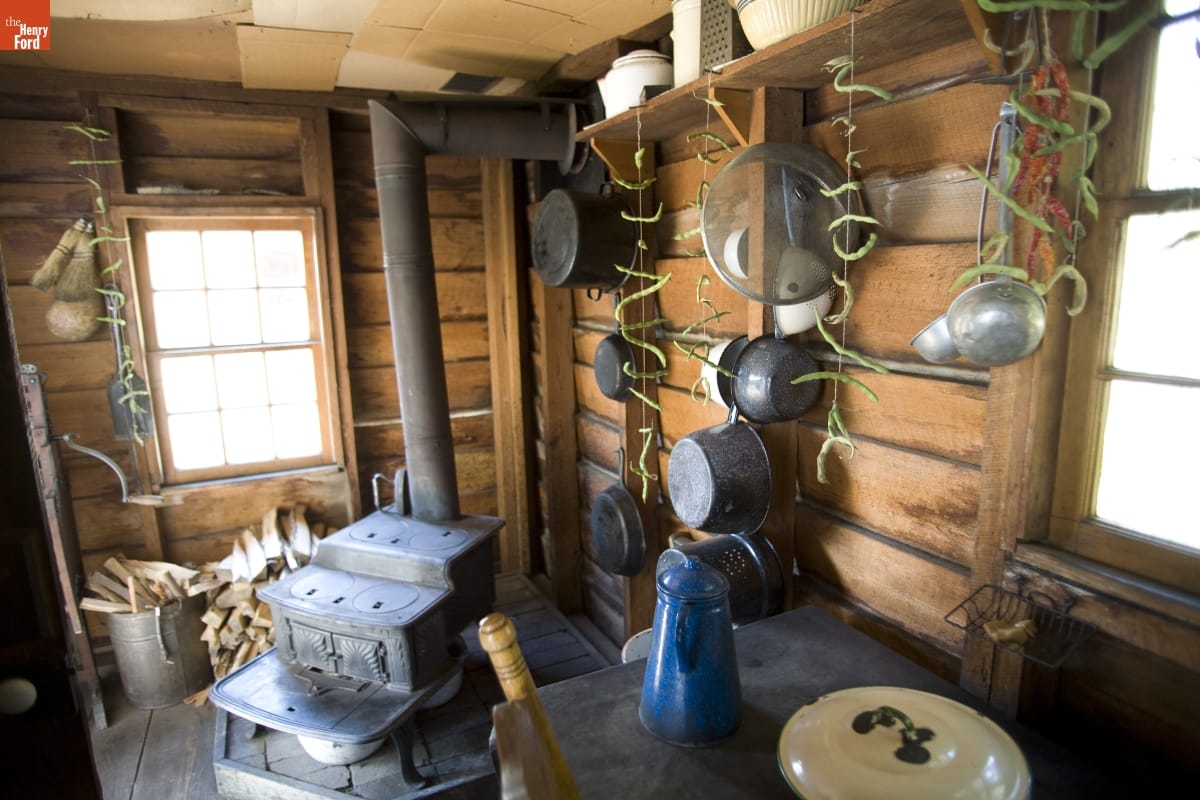
THF53399 / Mattox Family Home in Greenfield Village, September 2007 / Photographed by Michelle Andonian
In 1992, Rosa Parks visited the Mattox House, furnished like similar homes at the time with newspapers covering the front room walls to insulate against cool Georgia nights and winters. (You can find more content about the Mattox Family Home on our The Henry Ford’s Innovation Nation episode page.)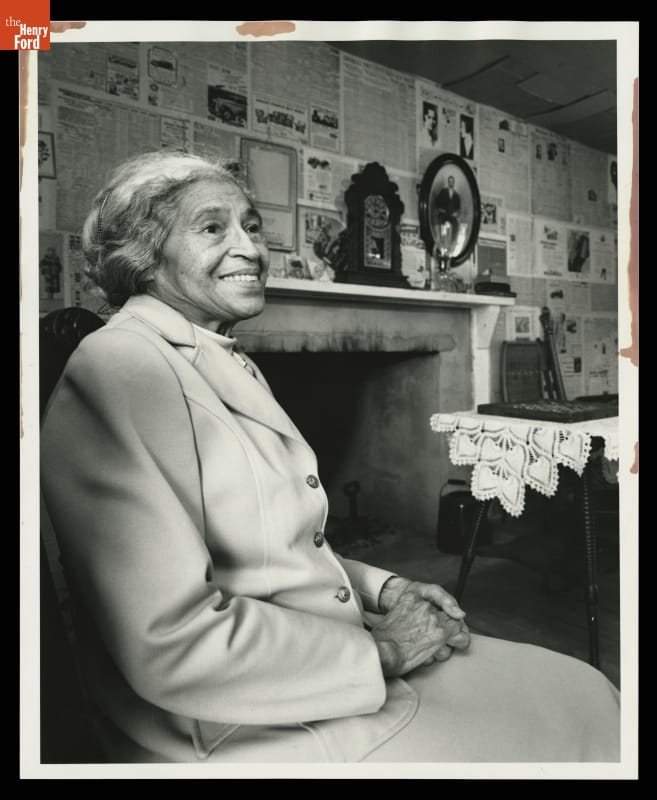
THF123775 / Rosa Parks Visiting Mattox House in Greenfield Village, 1992
My several years of experience with historical research, artifacts, and interpretation came in handy when, in 1990, I became the lead curator on a makeover of the general store on the Village Green.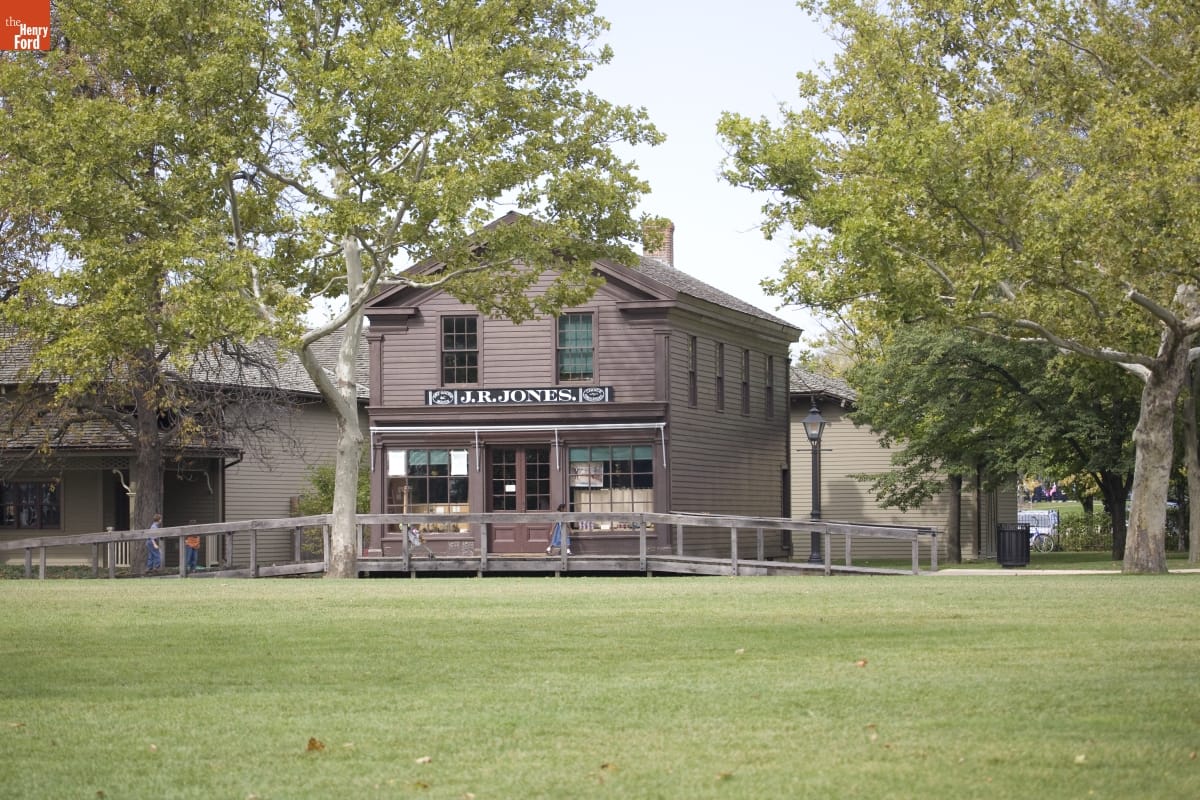
THF54366 / J.R. Jones General Store in Greenfield Village, October 2007 / Photographed by Michelle Andonian
Henry Ford originally wanted a general store to complete the buildings he had envisioned for his Village Green. He found the perfect store in Waterford, Michigan (as shown here), purchased it, brought it to Greenfield Village, and had it rebuilt in 1927.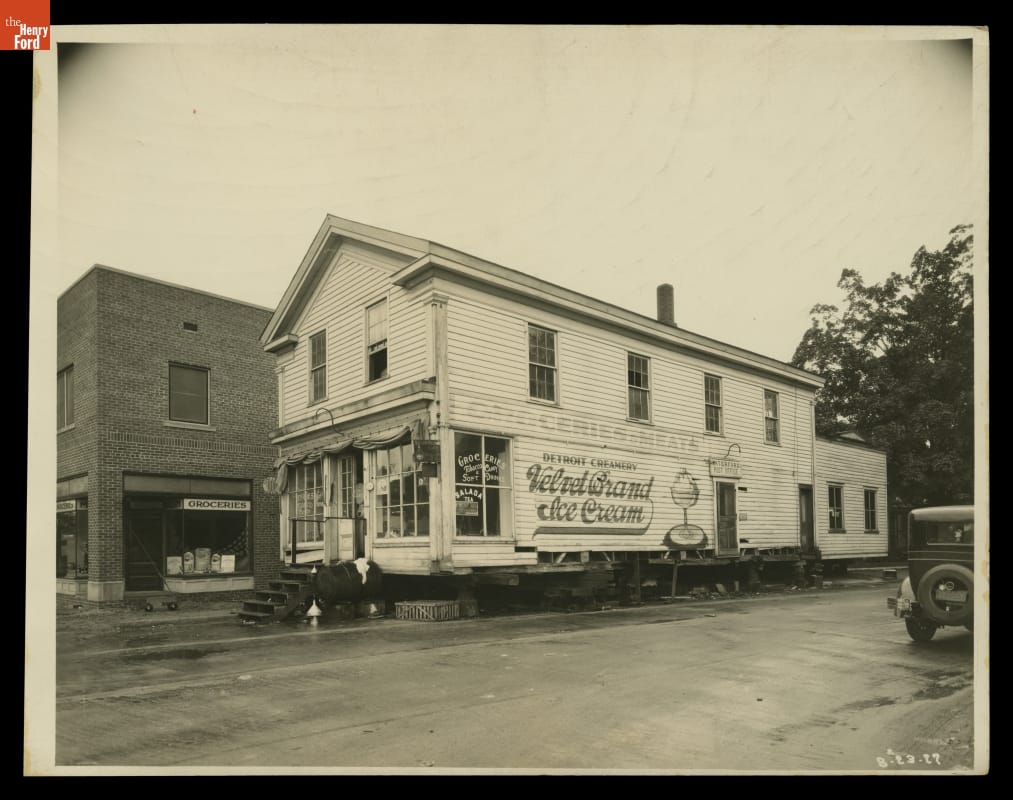
THF126117 / J.R. Jones General Store (Just Before the Move to Greenfield Village), Original Site, Waterford, Michigan, 1926
Ford then sent agents out to obtain historic store stock. One of the items they sent back was a storefront sign with the name Elias A. Brown. Elias Brown had run a store in New York, not Michigan—leading to a lot of confusion for visitors over the years.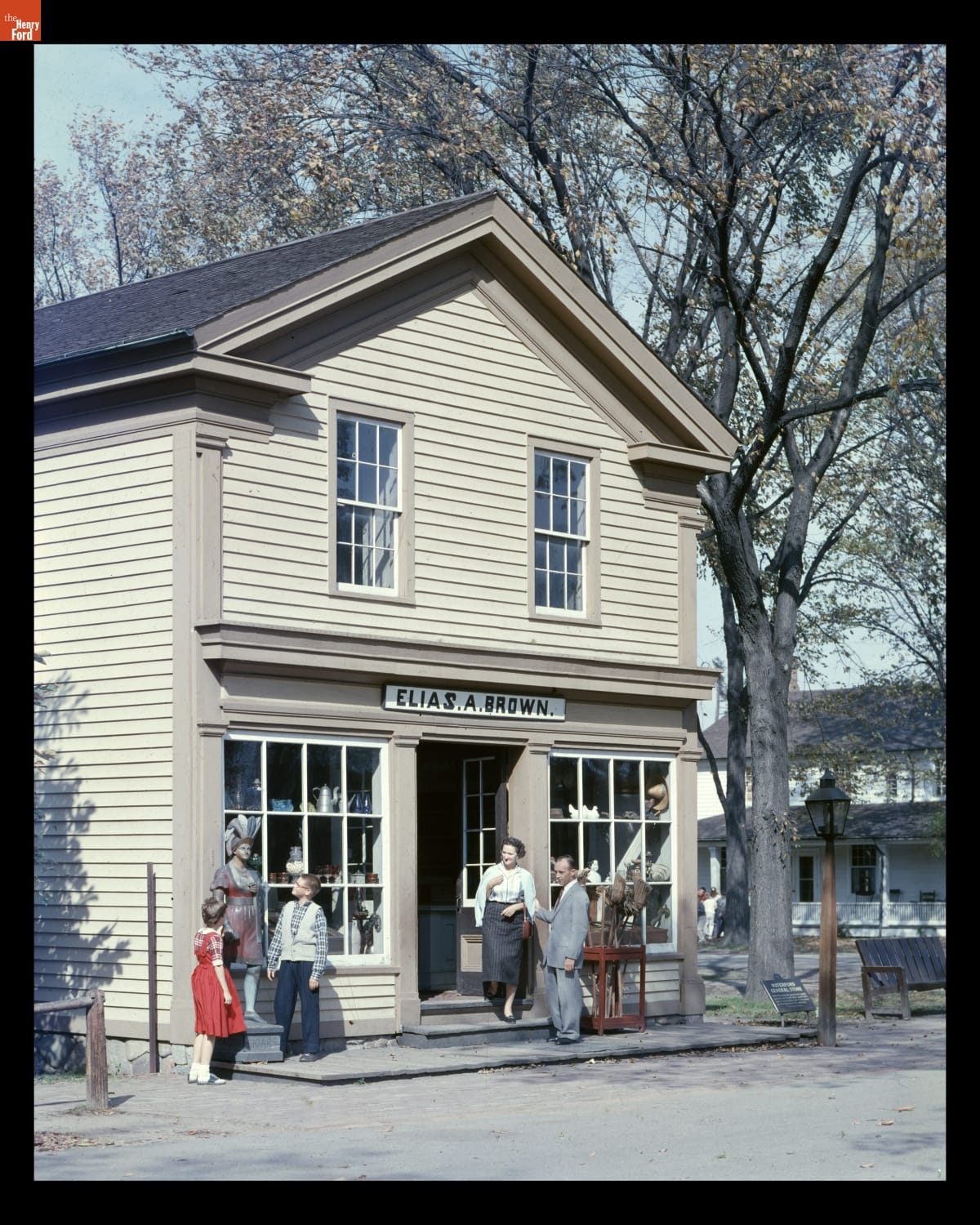
THF138605 / Elias A. Brown General Store in Greenfield Village, October 1958
We began researching the store’s history in Waterford and found that it had changed proprietors nine times! We decided that James R. Jones, the 1880s storekeeper (pictured here), was our best choice to interpret. His name replaced Elias Brown’s out front.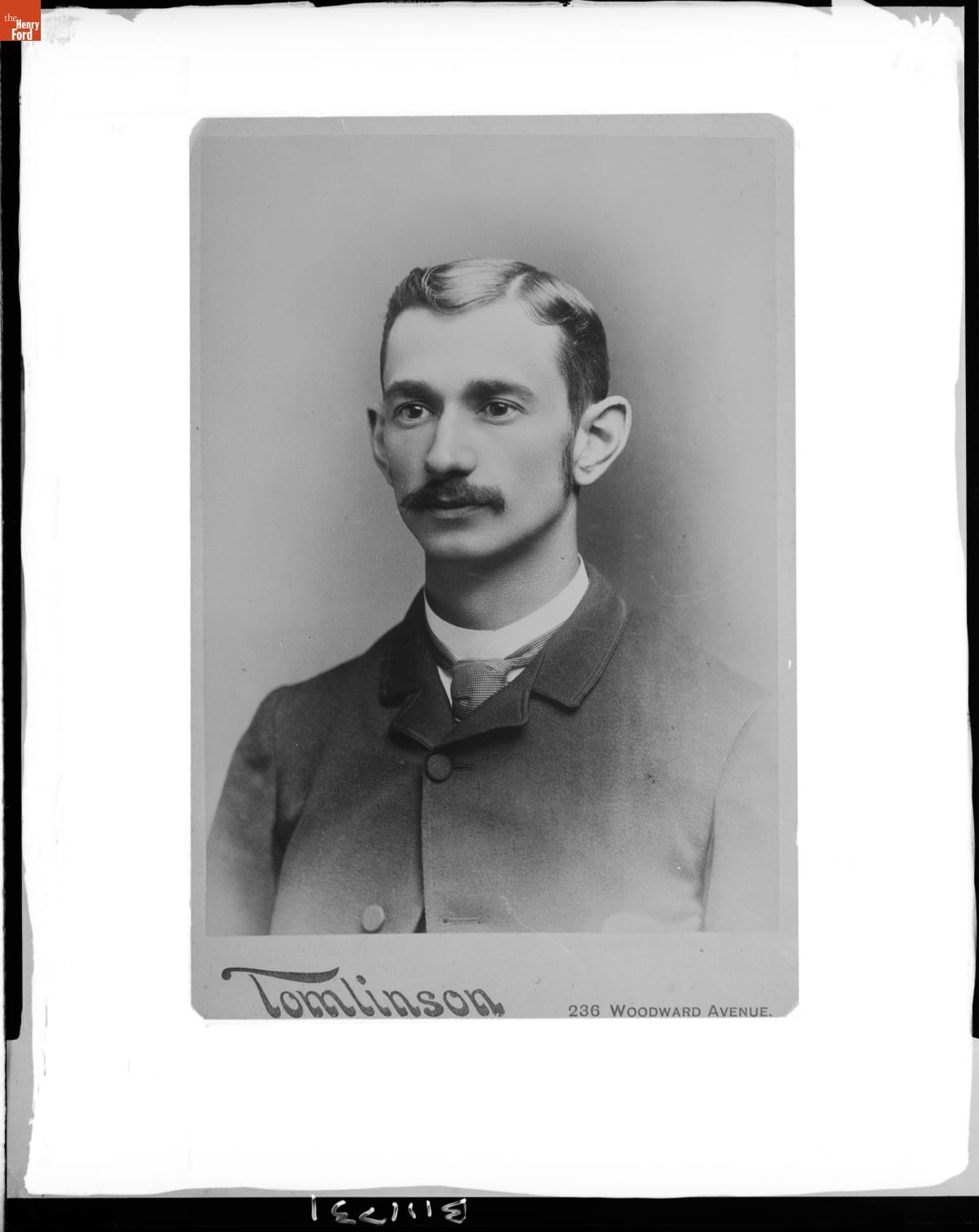
THF277166 / Portrait of J.R. Jones, circa 1890 / back
Further research led us to specific customers, the choices of goods people might have purchased, and the role of general stores in local communities—as seen by this “community bulletin board” we later created in the store from local announcements and ads.
THF53768 / J.R. Jones General Store in Greenfield Village, September 2007 / Photographed by Michelle Andonian
Wanting the store interior to look like a real working store—filled with lots of duplicate and like-new items—we used both real artifacts and accurate reproductions. By the time we were done, the store was stocked with some 5000 items!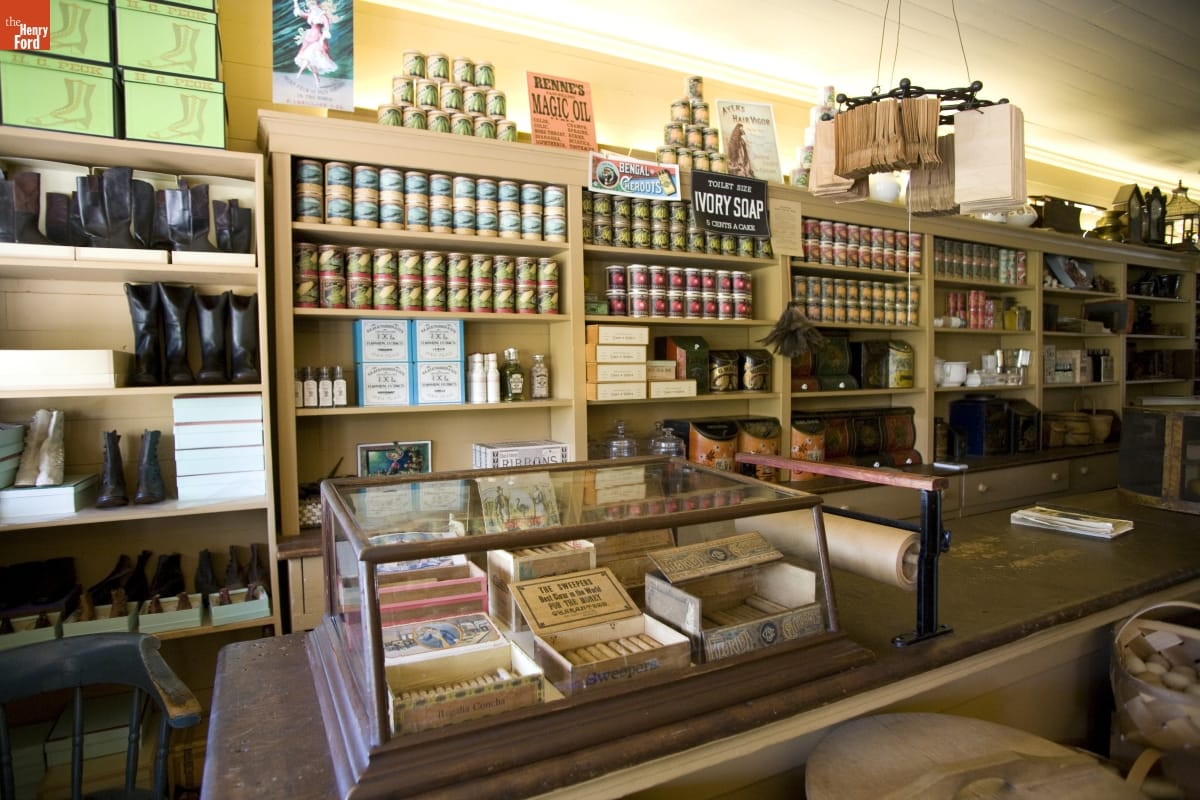
THF53774 / J.R. Jones General Store in Greenfield Village, September 2007 / Photographed by Michelle Andonian
The J.R. Jones Store opened in 1994, shown here with our first vintage baseball team, the Lah-de-Dahs—named after a team from Waterford back in the 1880s. When visitors walk inside the store today, they’re still blown away by the store’s interior! (Check out more content about the J.R. Jones General Store on our website and a YouTube clip from The Henry Ford’s Innovation Nation.)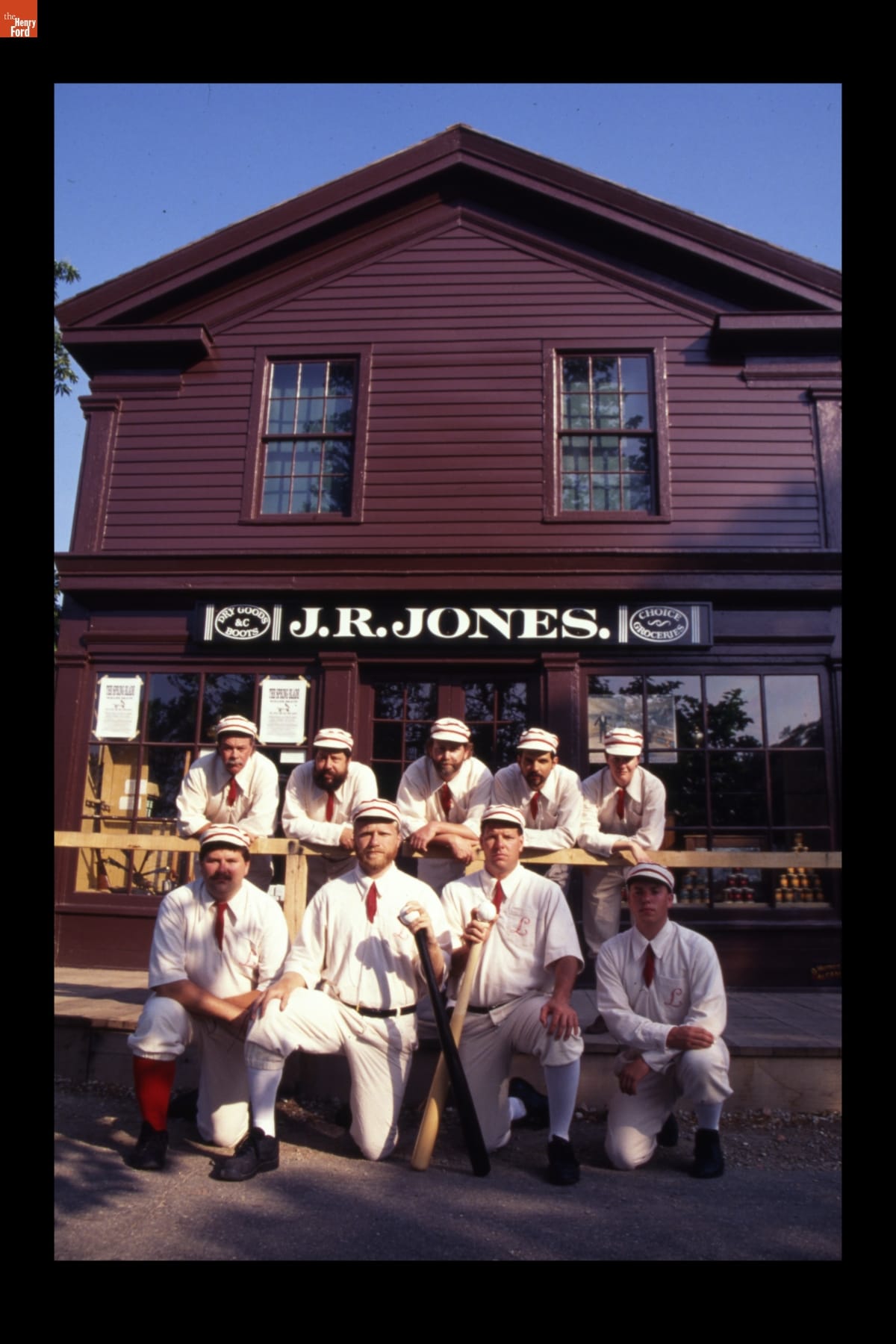
THF136301 / "Lah-De-Dahs" Baseball Team in Greenfield Village, Spring 1994
Well, this just touches upon the makeover stories of a few buildings in Greenfield Village. We continue to uncover new research and new stories. I hope you enjoyed this brief virtual visit to Greenfield Village and plan to make a real visit soon!
THF16450 / Presenters Working at Daggett Farmhouse in Greenfield Village, April 2006
Donna Braden is Senior Curator and Curator of Public Life at The Henry Ford.
Daggett Farmhouse, Greenfield Village history, Greenfield Village buildings, Greenfield Village, by Donna R. Braden, #THFCuratorChat, #Behind The Scenes @ The Henry Ford
Imagine this: the Institute of Museum and Library Services (IMLS) project team is working in the Collections Storage Building, selecting objects to be conserved as part of our grant-funded work. From the top level of pallet racking, about 15 feet above the ground, we remove some pallets of boxes and bring them down to ground level to unpack. We then climb the moveable stairs to take a peek at the area that we have exposed. The sight that greets us is confusing, but intriguing: a giant, golden-toned teapot, sitting in the center of the racking, far enough back that it was not visible from the ground. It was almost like revealing a magic lamp! We test-lifted it and realized that it was very light for its size, and must be hollow, so we carefully moved it off of the racking and to ground level

The giant teapot trade sign as we found it in the Collections Storage Building (after we had moved it down from the top shelf).
From the bracket that we found on the handle, it quickly became apparent that this was some sort of a trade sign, likely for a tea shop or coffee house. The body of the teapot occupies a space about three feet on every side – it would have been a very eye-catching sign! A little bit of research led us to some other interesting examples, including one that currently hangs above a Starbucks in Boston and is set up to blow steam out of its spout!
Our teapot has some mysteries, though – the golden paint has some texture to it, as if there were at one point a stripe along the widest part of the teapot’s body, with vertical stripes reaching from that stripe to the lid. Was the teapot originally painted a different color, or with a pattern? We did some minor tests to see if we could isolate different layers of paint, but we were not successful. We might decide in the future to do a more thorough analysis, but that would be after discussion with the curators. We also noted that our giant teapot does not have a hollow spout, and therefore, despite being hollow, probably never had the mechanism to blow steam in the same way as some others.
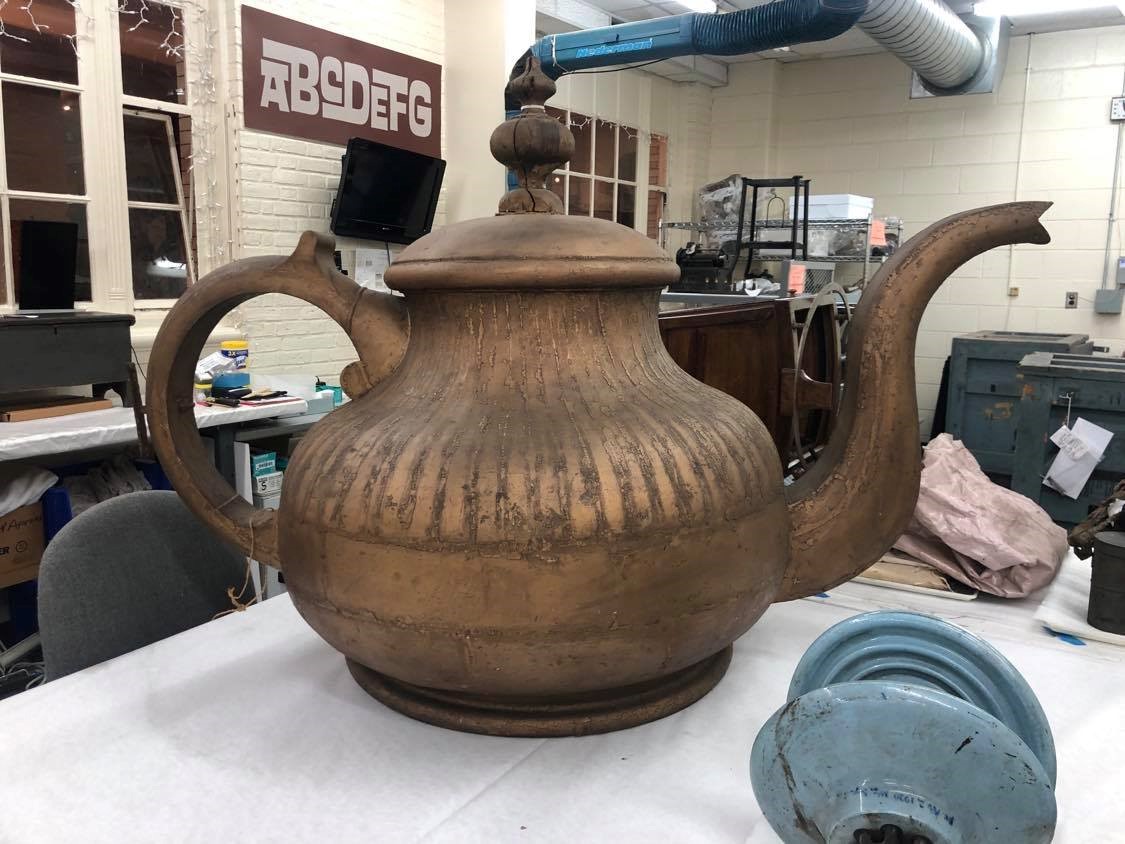
The giant teapot on the table in the lab - you can really get a sense of how large it is!
Ultimately, we don’t know a lot about where the giant teapot was originally used, or where it may be displayed in the future. We treated this object with nothing more than a simple cleaning – it was overall very stable to begin with, just dusty and dirty from being in storage. By minimizing treatment to the point of only stabilizing the object, we are leaving the option open for a future conservator to do more work while still ensuring that it’s going to be safe and sound in storage. It also allows us to treat more objects from storage as we progress through the grant. Maybe someday in the future we’ll see the giant teapot again, but for now it’s safe and sound in the Main Storage Building! You can check it out in our Digital Collections.
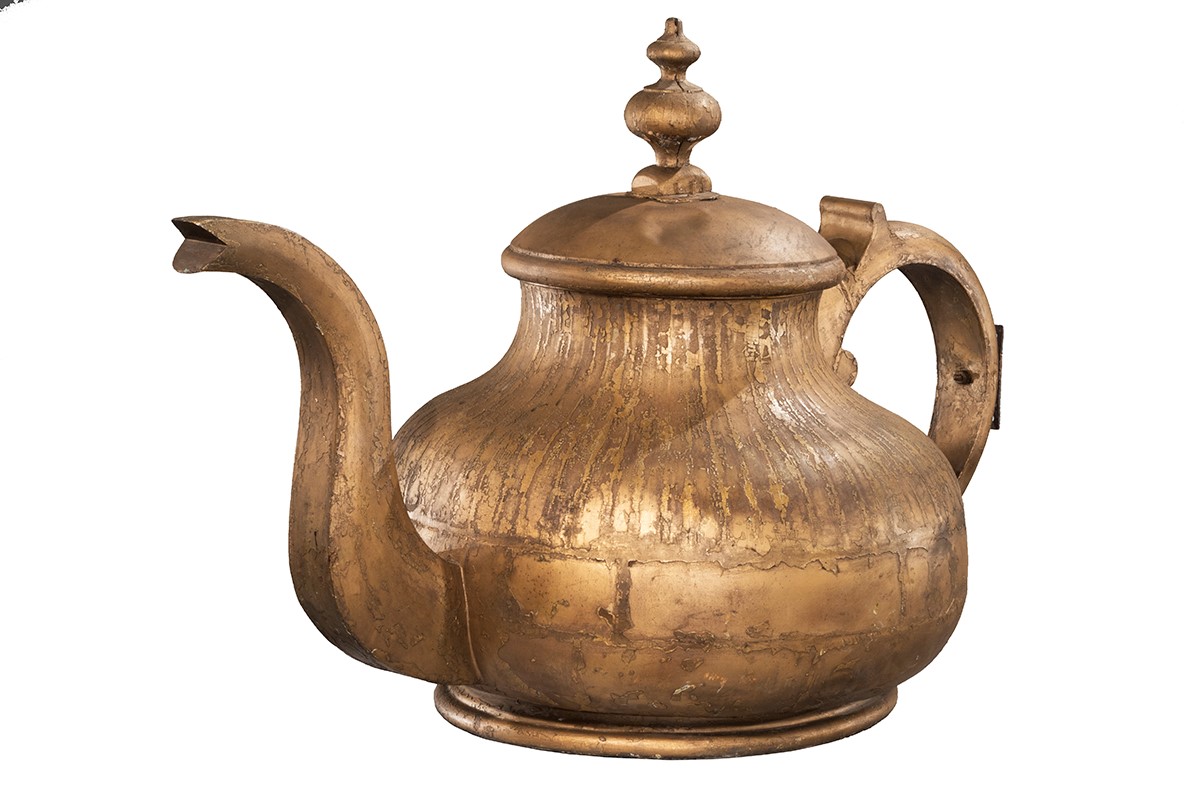
The giant teapot after treatment, ready to go back to storage.
Louise Stewart Beck is Senior Conservator at The Henry Ford.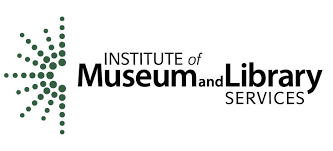
IMLS grant, conservation, collections care, by Louise Stewart Beck, #Behind The Scenes @ The Henry Ford
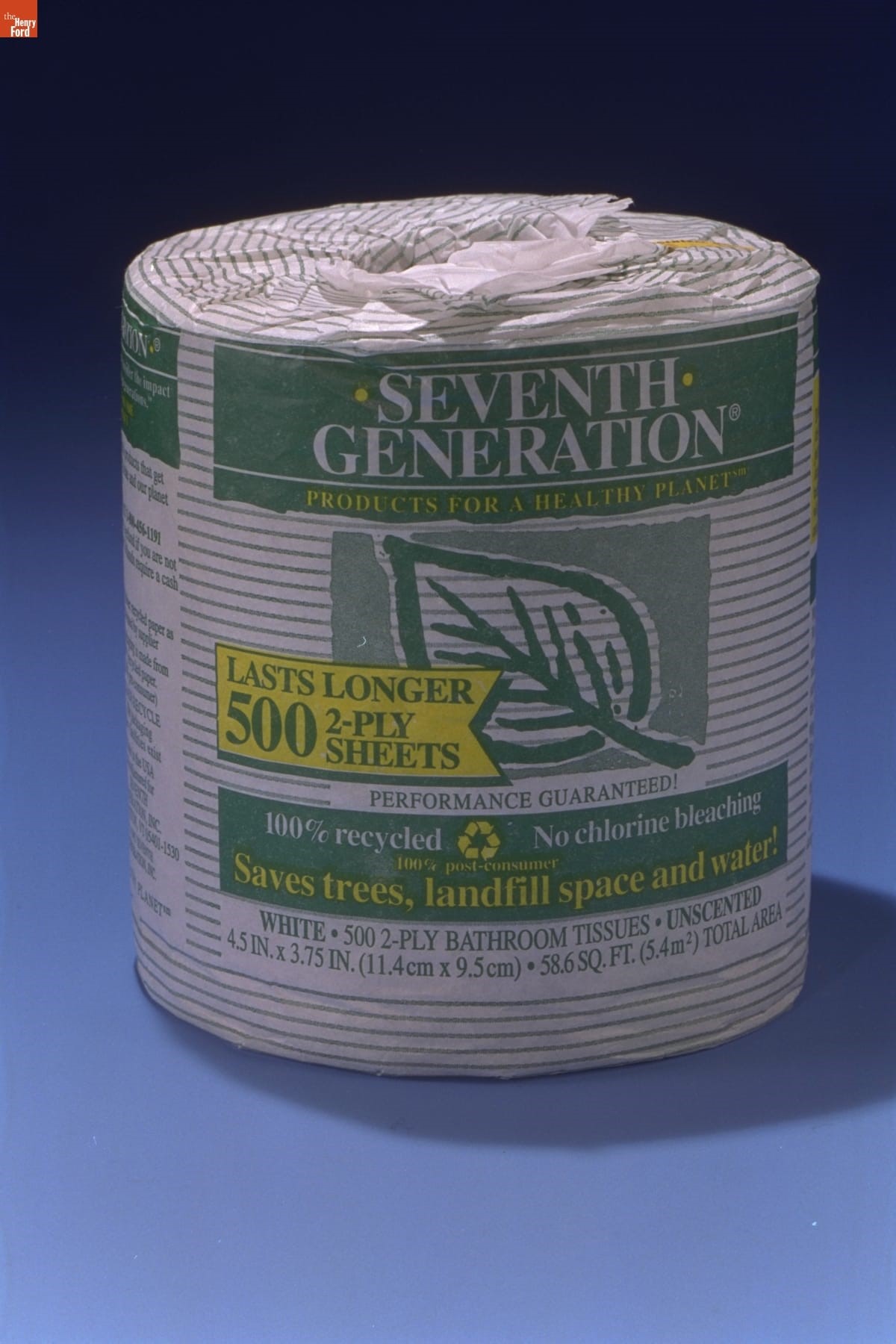
In an ironic twist, one of the artifacts we were able to digitize remotely during the pandemic is this roll of toilet paper, on exhibit in Your Place in Time in Henry Ford Museum of American Innovation.
If you’ve visited our Digital Collections lately, you may have noticed they now feature more than 95,000 digitized artifacts. We’ve previously written about the process we use to digitize artifacts—as you might suspect, it involves lots of close physical contact with other human beings and with the artifacts themselves. Right now, during the worldwide coronavirus pandemic, this is not possible: some of our digitization colleagues whose work requires campus access are on temporary unpaid leave, and others whose work is more computer-based continue working from our basements, dining rooms, and dens.
Still, between March 14 and May 22, we added almost 3,300 new artifacts to our Digital Collections—all in the 10 weeks since decamping from our offices. But how can we continue to add new items to our Digital Collections without access to the actual collections themselves?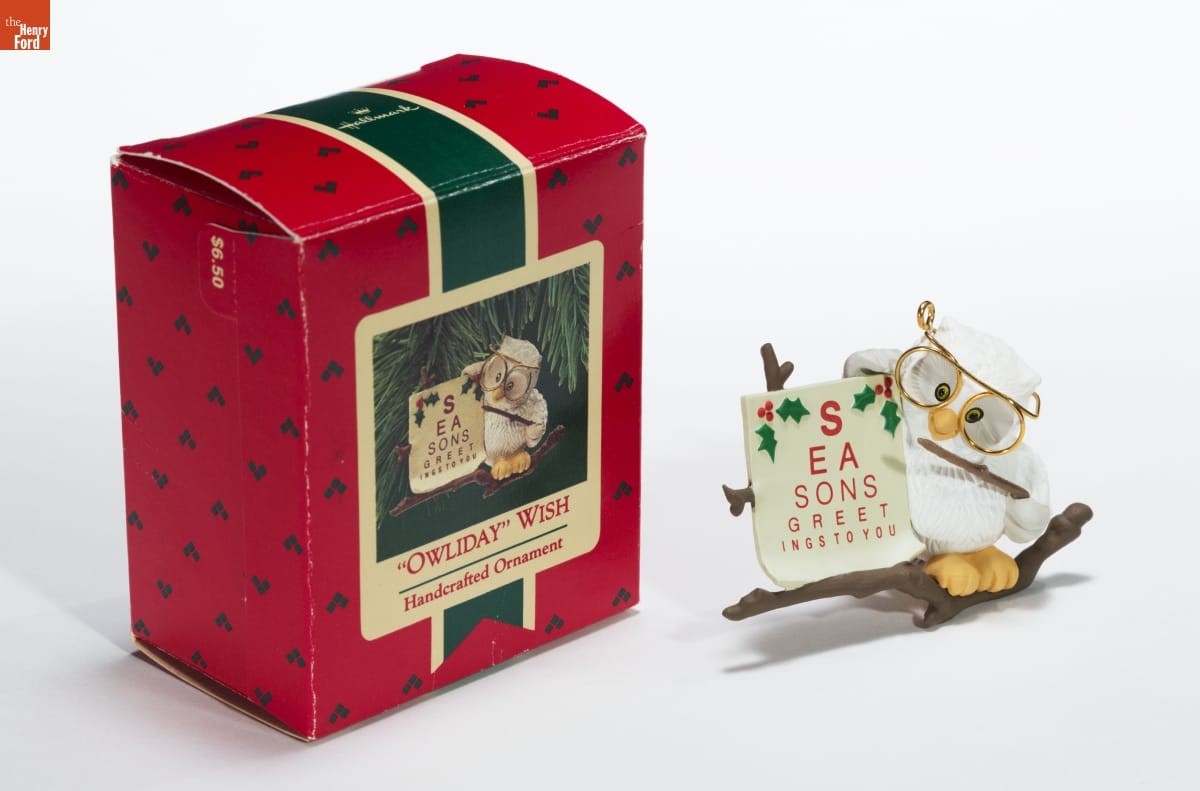
Hallmark ""Owliday" Wish" Christmas Ornament, one of more than 700 Hallmark ornaments added to our Digital Collections during our remote work.
A lot of the answer is infrastructure. We’ve been digitizing our collections in a consistent way for almost a decade now, and over those years have built out a robust system to support adding hundreds of new items to our Digital Collections every day. Our collections database is available to us from home, and we have automated processes in place to pick up new items daily. We can do research on items, and add this information to our database, from home. But what about the images?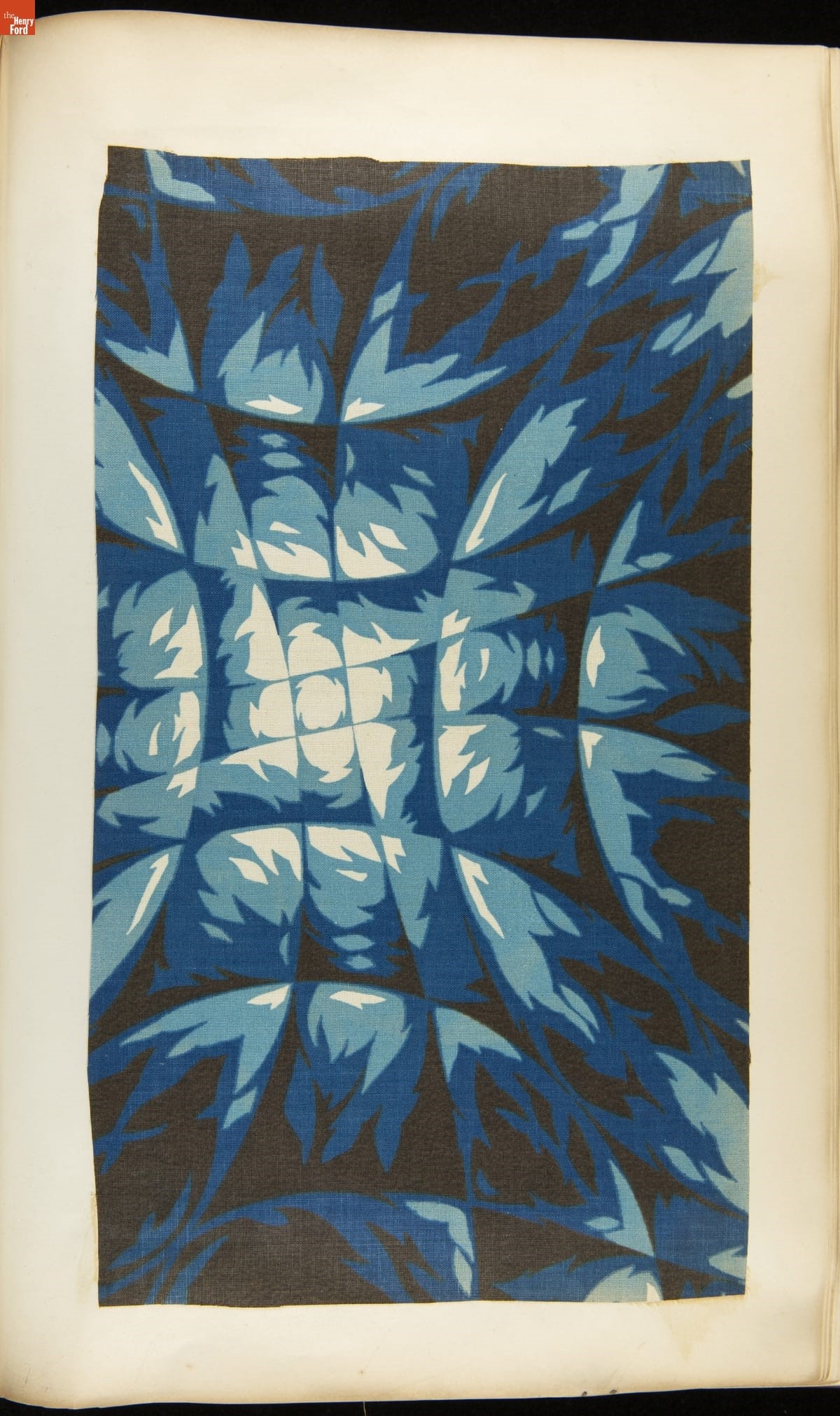
A very modern-looking textile from a 1900-1901 sample book, digitized during the COVID-19 pandemic.
When we left campus, there were many objects we’d imaged in the last few months for ongoing projects that hadn’t yet been put online. We are continuing to work through this backlog, adding the images to our collections database and updating our cataloging so they can be reviewed and flagged for online use. Some notable additions in this category since mid-March are more than 700 Hallmark ornaments from the sizeable collection we acquired last year, nearly 200 items digitized through the William Davidson Foundation Initiative for Entrepreneurship (including trade cards and textile sample books), and more than 150 artifacts digitized through a grant from the Institute of Museum and Library Services (IMLS).
In addition, we have a number of collections that were already in digital format, whether natively or digitized by the collector, when they came to us. A sizeable example is the Dave Friedman Collection, which was partially scanned by Dave Friedman before being donated to us. There are now more than more than 32,000 auto racing photographs and documents from the Friedman collection in our Digital Collections—including the more than 1,000 we’ve added remotely.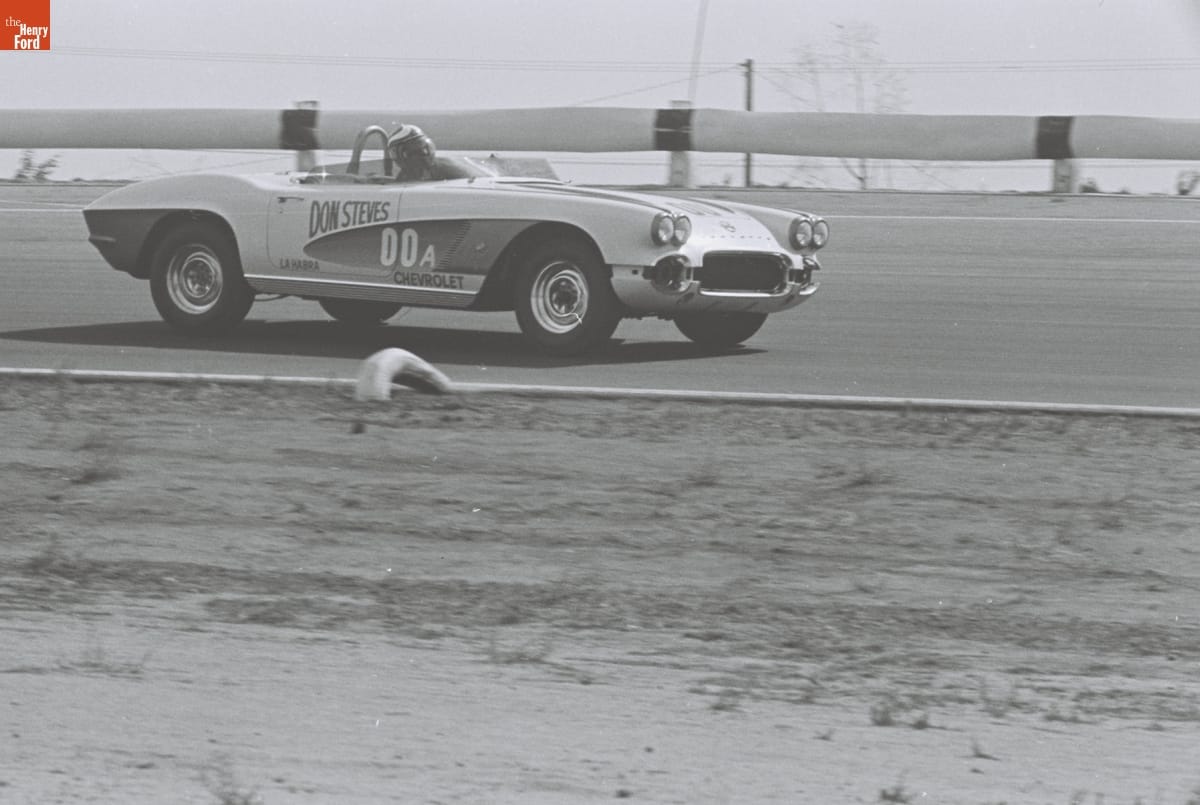
One of the many Dave Friedman Collection auto racing images we've added to our Digital Collections during the pandemic. This one shows the Chevrolet Corvette C1 driven by Dave MacDonald in the Production Sports Car Race before the 4th Annual Grand Prix for Sports Cars in Riverside, California, in 1961.
We also are lucky, as an institution in its 91st year of existence, to have a sizeable backlog of older images that are often quite acceptable (or can be made acceptable, by some strategic Photoshop work) for online access. We always prefer to get a new image of an artifact when possible—but during the pandemic, that has not been possible. So we’re combing through the existing images we have, whether those are scans of old black-and-white images from our first few decades, 20th century slides that were scanned later on, or images taken on 35mm film that have been transferred to digital format.
In this last category, artifacts with legacy images, to date we’ve had a couple of top priorities: 1) artifacts being utilized for our extensive series of online content and programming, and 2) artifacts that are on display in Henry Ford Museum of American Innovation—since you can’t see these in person right now, you’ll at least be able to see them digitally! Since we left campus, we’ve added nearly 200 objects on exhibit in Henry Ford Museum of American Innovation to our Digital Collections, bringing the total number of artifacts on exhibit in the museum that you can also see in our Digital Collections to more than 2,300—check them all out here. The recently added artifacts are mostly in Your Place in Time and Made in America, ranging from a Coty face powder box to an eight-track tape of Stevie Wonder’s Songs in the Key of Life. Next, we plan to tackle some of the many artifacts on exhibit in Greenfield Village, as well as items brought into our collection in the last couple of decades.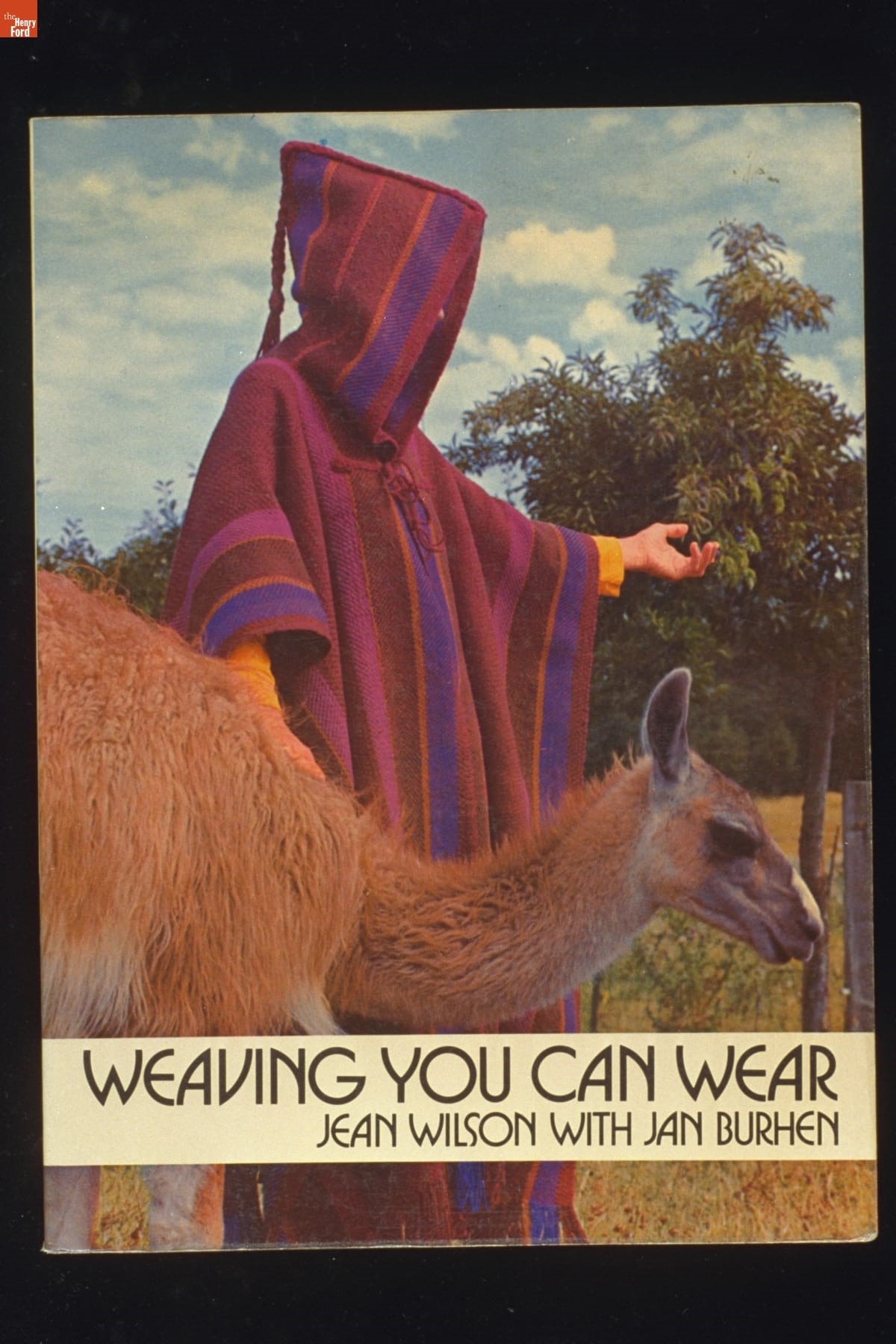
Weaving You Can Wear, one of many books in Your Place in Time digitized recently from existing images.
Across all these categories, there are thousands of artifacts we can add to our Digital Collections without access to our collections—and we will continue working through them until we can safely return to The Henry Ford’s campus and are back up to full capacity. In the meantime, we invite you to dig into our Digital Collections to revisit your old favorites and maybe turn up some new surprises.
If you aren’t sure where to start, you might check out some Expert Sets we recently completed. Our curators selected artifact highlights from our collection in a number of focus areas, namely:
- Agriculture and the Environment
- Communications and Information Technology
- Design and Making
- Mobility
- Social Transformation
- America's Industrial Revolution
- Henry Ford
You can also find all of these sets, plus a search box and other ways to jump into the collection, on our Digital Collections homepage. Happy browsing!
Ellice Engdahl is Digital Collections & Content Manager at The Henry Ford.
21st century, digitization, digital collections, COVID 19 impact, by Ellice Engdahl, #Behind The Scenes @ The Henry Ford
The Journey of the Megalethoscope
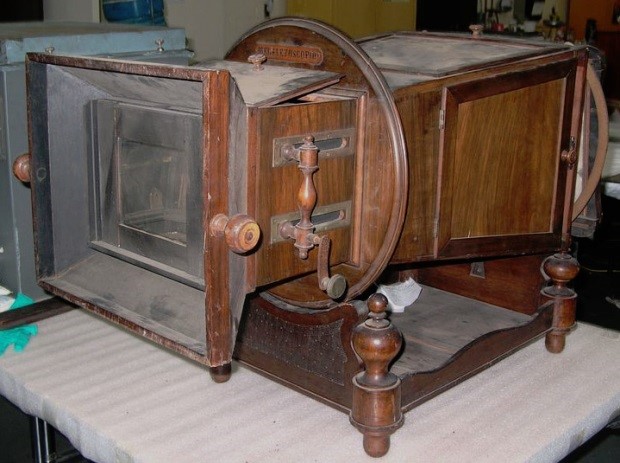
The Megalethoscope during treatment in the lab.
The Megalethoscope is one of thousands of objects from The Henry Ford’s Collections Storage Building (CSB) that is being conserved, digitized, and rehoused thanks to a ‘Museums for America Collections Stewardship’ grant from the Institute of Museums and Library Services (IMLS), received in October 2017. Heading behind the scenes, this blog will explain the process that an artifact moves through from conservation to photography—and eventually, becoming viewable on Digital Collections.
Conservation Treatment
Once an artifact is selected, tagged, and inventoried, it is given a preliminary cleaning with a vacuum and transported into the Conservation Lab.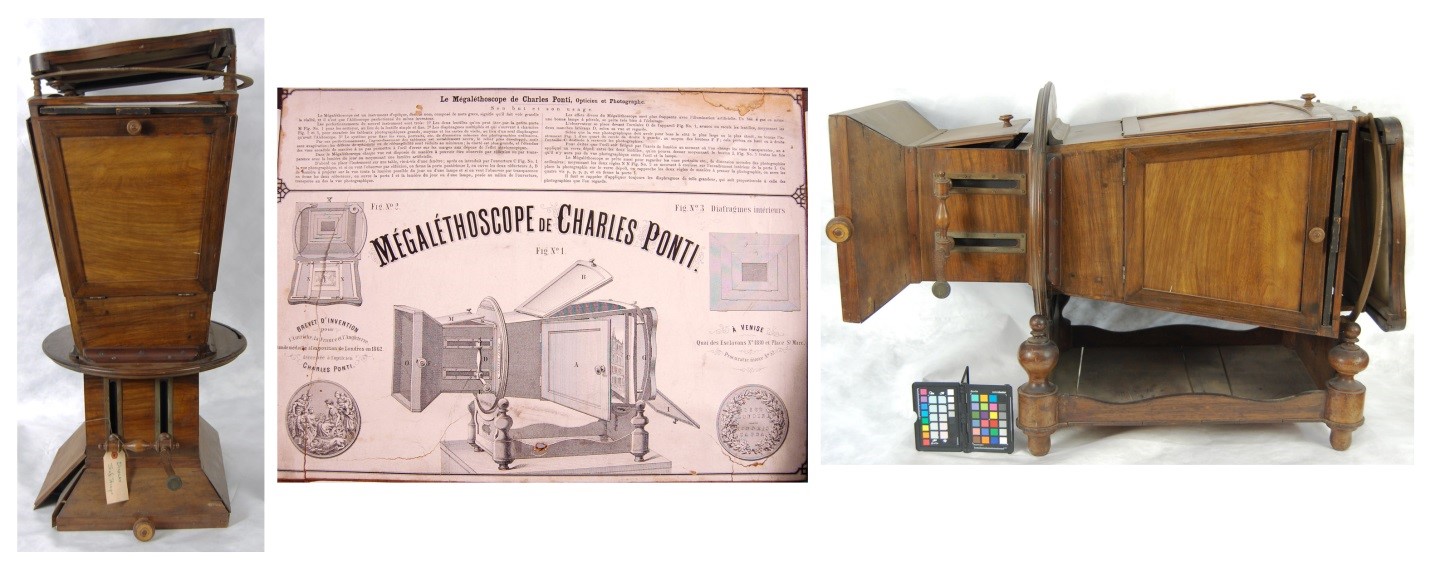
(Left) Photo of how the Megalethoscope was found in storage; (Center) The instruction panel that shows how the Megalethoscope works; (Right) The Megalethoscope mounted correctly on its stand.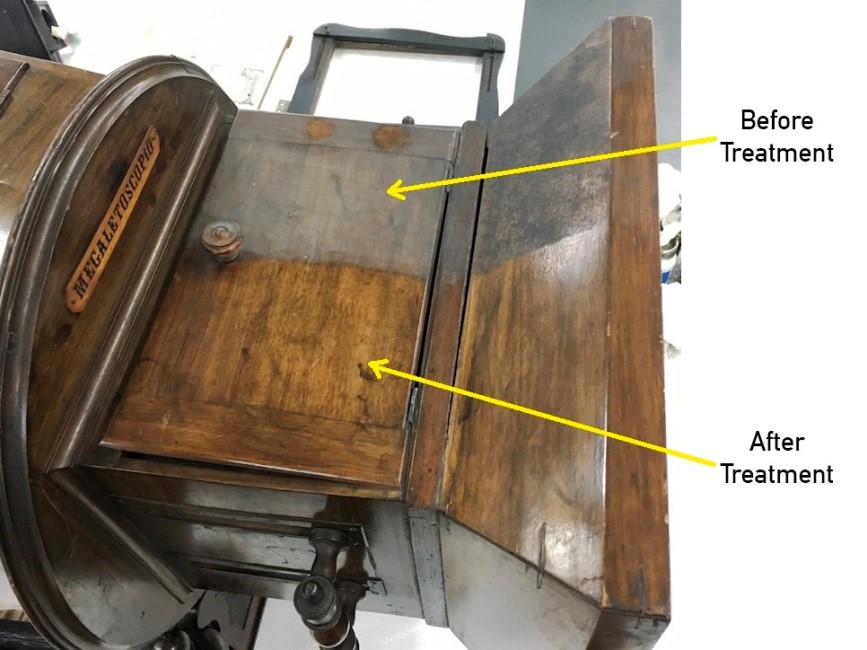
The top panels on the Megalethoscope before and after it was cleaned and waxed.
Prior to cleaning, a small spot was tested to determine the best method and materials to use. A mild detergent, diluted in distilled water did the best cleaning job without damaging the wood. The cleaning solution was gently rubbed on the wood surfaces with swabs to remove all of the dirt and grime, and then the surface was cleared with distilled water to remove soap residue. To bring back the shine of the wood finish, furniture wax was applied and buffed.
Years of storage on its end had caused the joints of the Megalethoscope’s viewer to separate (highlighted in red). Damaged areas were repaired removing the old, dried-up glue, and replacing it with fresh glue.
Large shrinkage cracks had developed in the two side panels that serve as light reflectors, and in the back panel that covers a large pane of glass. Shrinkage cracks develop when wood expands and contracts because temperature and humidity levels fluctuate too much.
Since the cracks were big enough to see through (approximately 1/8th inch wide) thin strips of Japanese tissue paper were soaked with a reversible adhesive, then dried, to fill each of the cracks. As each strip of tissue was compacted into the cracks, the adhesive was activated with solvent. This caused the dry paper to adhere to the edges of the crack and create a bridge. This fill was smoothed down flush with the rest of the wood panel, providing an even surface that could be in-painted to match the adjoining wood panels.
Using Japanese tissue to fill shrinkage cracks.
Watercolor and acrylic paints were used on the paper fills to hide the repairs and to paint in the large scratches and abrasions that covered the body of the Megalethoscope. To give the painted areas the same shine as the wood finish, a topcoat of acrylic gloss medium was applied.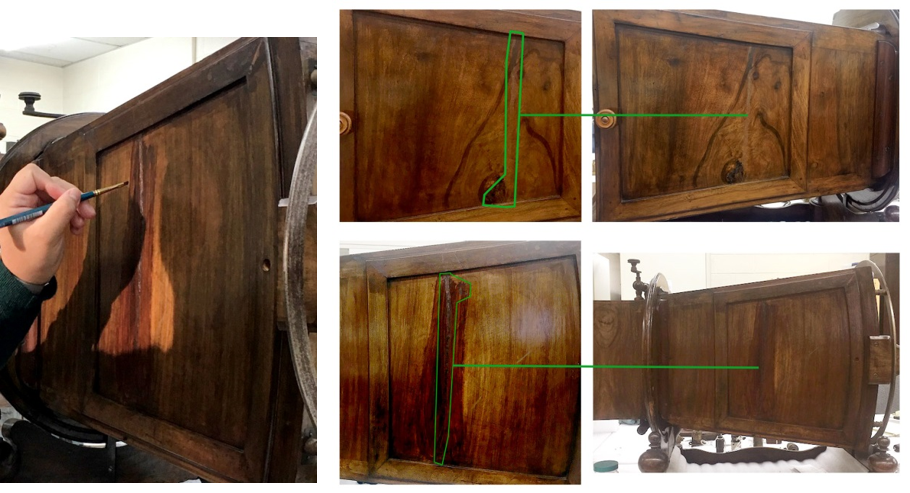
(Left) In-painting the paper filled cracks; (Right) Paper fills after they were painted (in green).
To finish the treatment, the glass and mirror pieces of the Megalethoscope were cleaned with a solution of ethanol and distilled water, then wiped with microfiber cloths to prevent streaking. Any metal parts were cleaned with a mild solvent to remove small areas of corrosion and then waxed and buffed them to bring back their shine.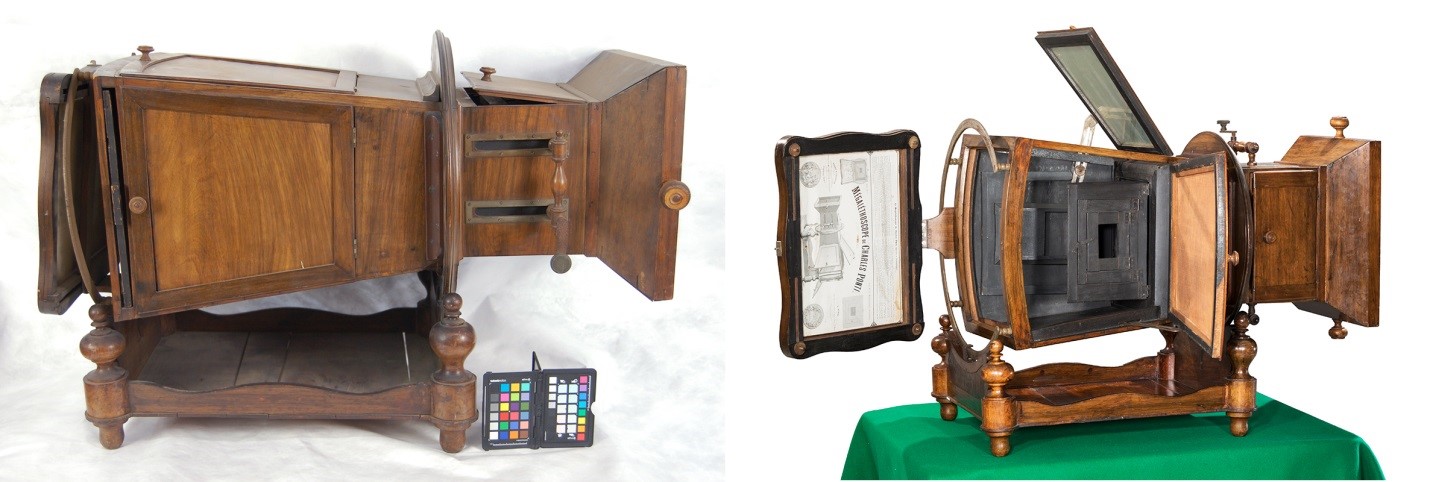
The Megalethoscope (Left) before and (Right) after conservation treatment.
Investigating Megalethoscope Slides
During treatment, an original photographic slide left inside of the Megalethoscope was discovered. This led to additional investigation. The slide depicted is of the Ponte dei Sospiri in Venice (the Bridge of Sighs). We wondered if there were more of these slides in the collection and after checking our collections database, found a box labeled “Megalethoscope Slides” in the Benson Ford Research Center (BFRC). The contents of the box were not catalogued, so we decided we needed to go to the Archives to see for ourselves!
When the box was brought to the Reading Room at the BFRC, we opened the box and found 21 slides, all in good condition! Many of the slides were photographs of Italy and Paris, plus a handful depicting interiors.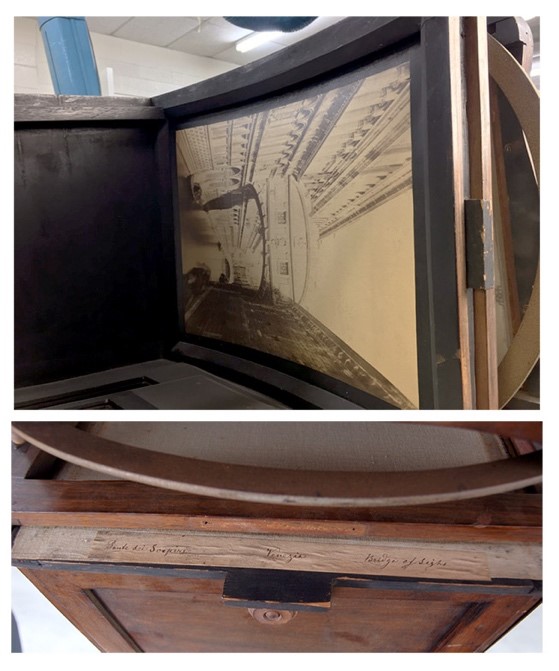
(Top) The Ponte dei Sospiri slide with handwritten inscription (Bottom) inside the Megalethoscope after it was taken out of storage.
Megalethoscope slides are large, multi-layered assemblies. Each slide consists of an albumen photographic image with pin pricks matching the areas where there is a light source or reflection (ex. an illuminated cityscape). Behind it are layers of colored tissue or cellophane and sometimes extra imagery when lit from behind; finally, there is a backing of a thinner, translucent canvas. All of this is stretched over a curved wooden frame. The curve creates a stereo view of the image which encompasses the viewer’s sight lines when they place their head into the Megalethoscope, much the way today’s virtual reality goggles work. Light is directed onto the slide to create different effects.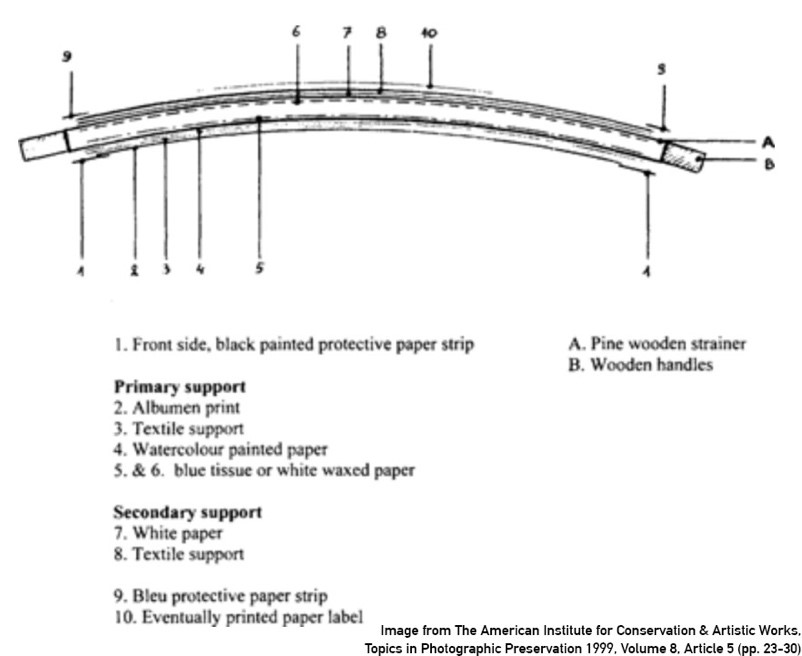
Cross section of a Megalethoscope slide. (Image courtesy of The American Institute for Conservation & Artistic Works, Photographic Materials Group Journal, Topics in Photographic Preservation 1999, Vol. 8, Art.5 (pp.23-30).
The slide that was found with the Megalethoscope in storage did not have any color effects, so we were excited to find that the majority of the slides in our archives had variations in color and optical illusions. The slides were moved to the conservation lab, where their surfaces were gently vacuumed. A smoke sponge removed any remaining dust and dirt. A few of the slides had small punctures or tears to the canvas, but since they were stable, we decided to not repair them at the present. We were thrilled to be able to reunite the slides with the Megalethoscope and have a fully functioning artifact!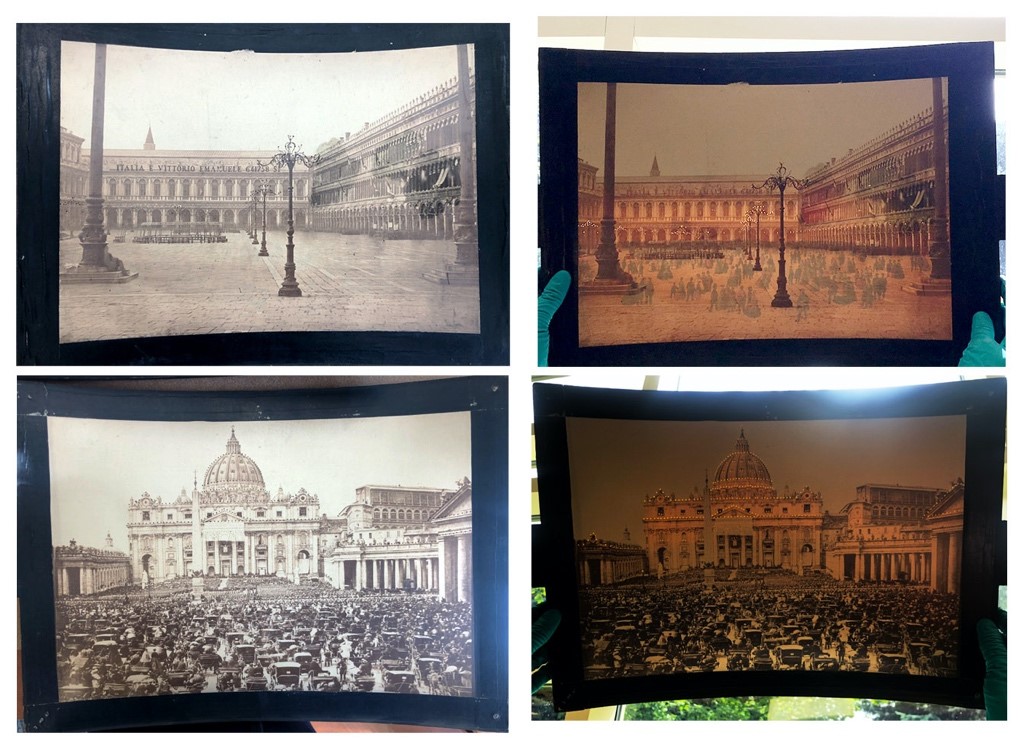
(Top Left & Right) In "St. Mark's Square” you can see how people appear when light is applied to the image.
Photographing the Megalethoscope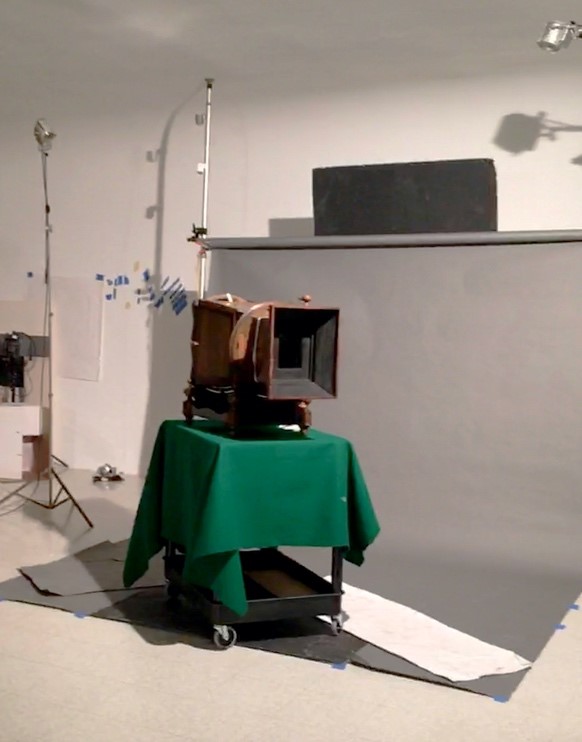
The Megalethoscope on a cart for ease of movement during photography.
There are many steps that artifacts go through to be digitized and made available online, especially for objects as complex as the Megalethoscope. After the slides were conserved and cataloged, they were brought to the photography studio. For 3-D artifacts like the Megalethoscope, photography typically includes an image of the front, the back, and each side, if necessary. Photos serve as a reference material for historical researchers, and they document the condition of the artifact at that time.
The slides needed to be photographed in two ways: as they appeared in normal light, and as they would be seen through the Megalethoscope. Our senior photographer Rudy Ruzicska came up with a very clever arrangement to recreate this effect by placing two sets of milk crates with a sheet of Plexiglas suspended between them. He placed lights directly under and at an acute angle above the Plexiglas. The slides were placed in the middle of the Plexiglas with black paper border around the edges to prevent any light glare.
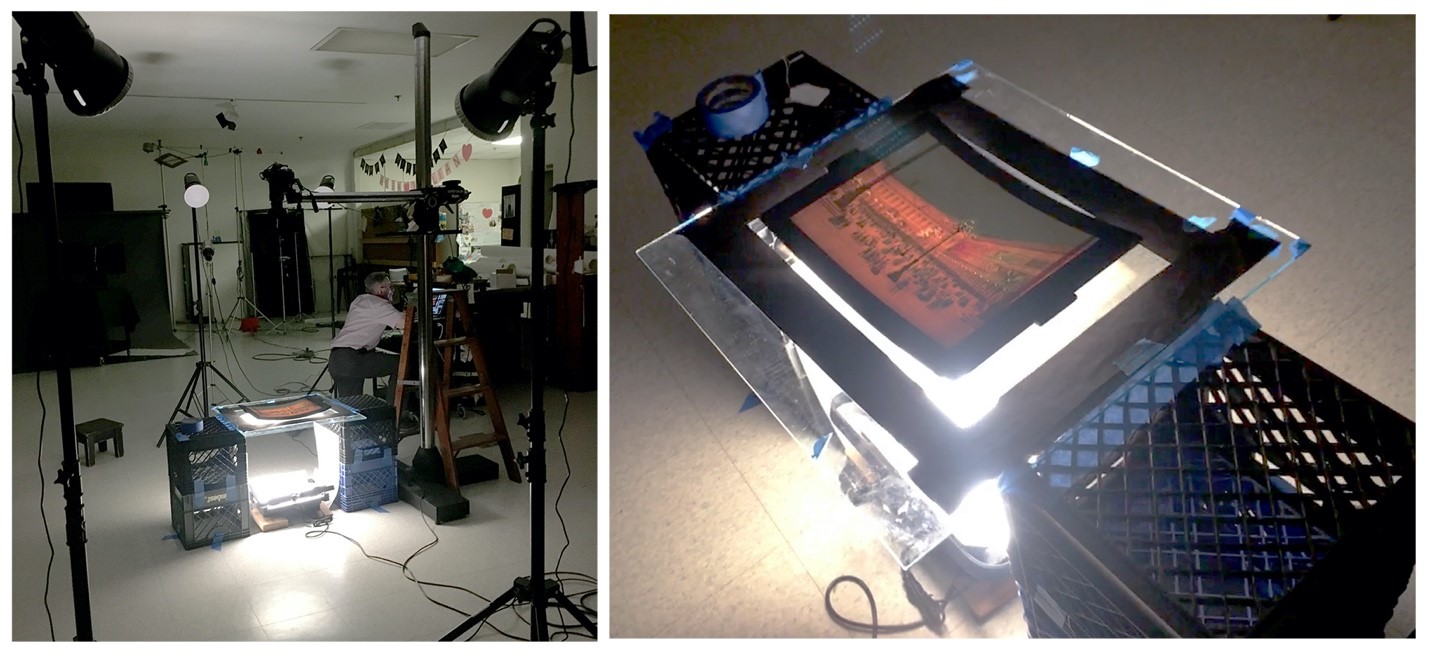
Light arrangement for photography of Megalethoscope slides. (Left) Rudy shooting with his custom set-up during the dark shot of the “St. Mark’s Square” slide; (Right) A closer view of the set-up.
The Megalethoscope images were then photographed under normal (“daytime”) light to document their appearance, and with their “nighttime” illumination effect by turning off the studio lights. The first time we saw the images illuminated in the dark, we all gasped – they became so vibrant and magical! 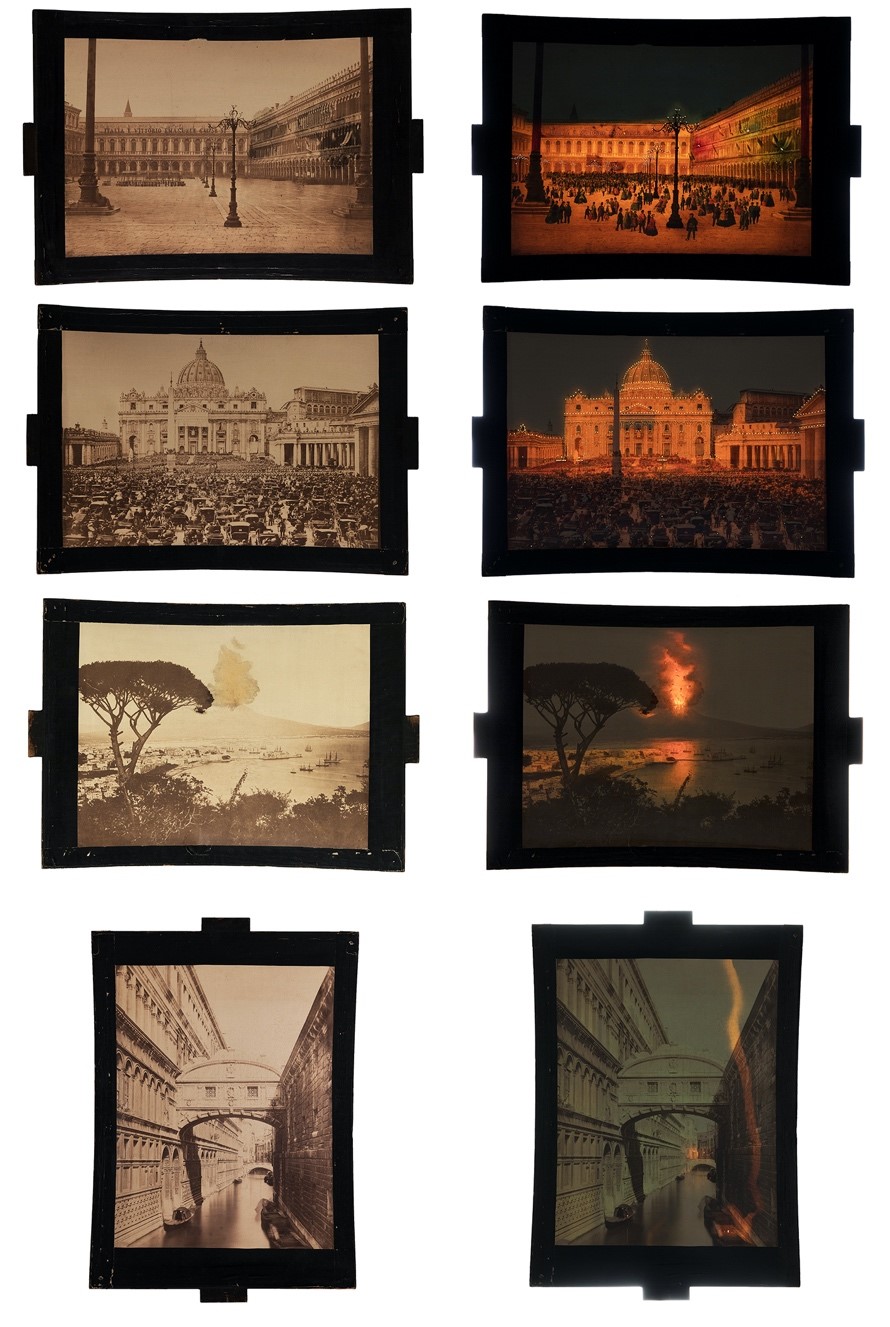
A selection of the final images, with color and effects as they would have been seen inside the Megalethoscope.
The Megalethoscope was re-housed in a specially designed box which will store the unit and its base together safely, along with all of the slides. It was then moved to permanent storage in the Main Storage Building (MSB), as have most of the artifacts that we have worked on during the IMLS grant.
Thank you for joining me on this behind-the-scenes journey of an artifact from storage, to conservation, and through to digitization. I hope you enjoyed the ride!
Alicia Halligan is an IMLS Conservation Specialist at The Henry Ford
photography, IMLS grant, digitization, conservation, collections care, by Alicia Halligan, #Behind The Scenes @ The Henry Ford

